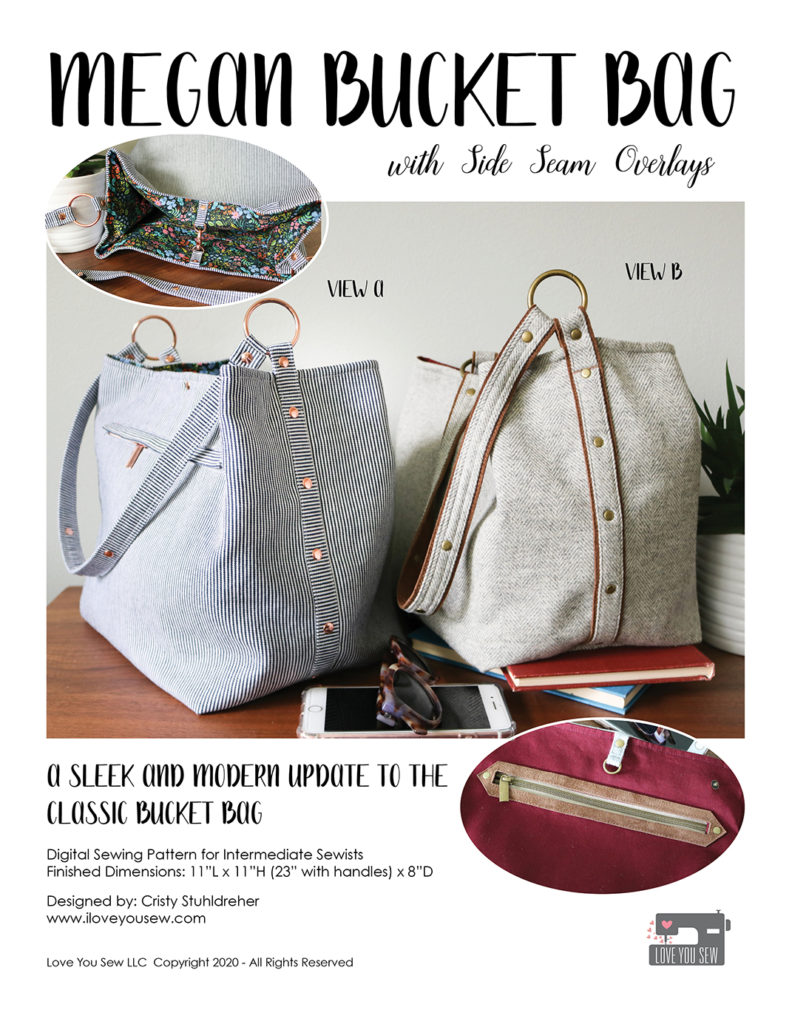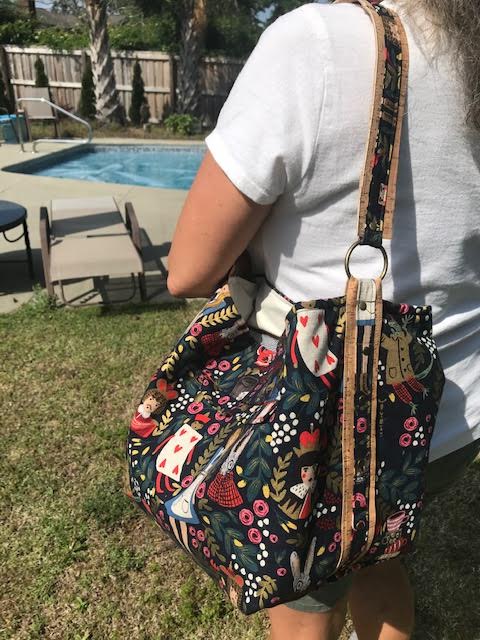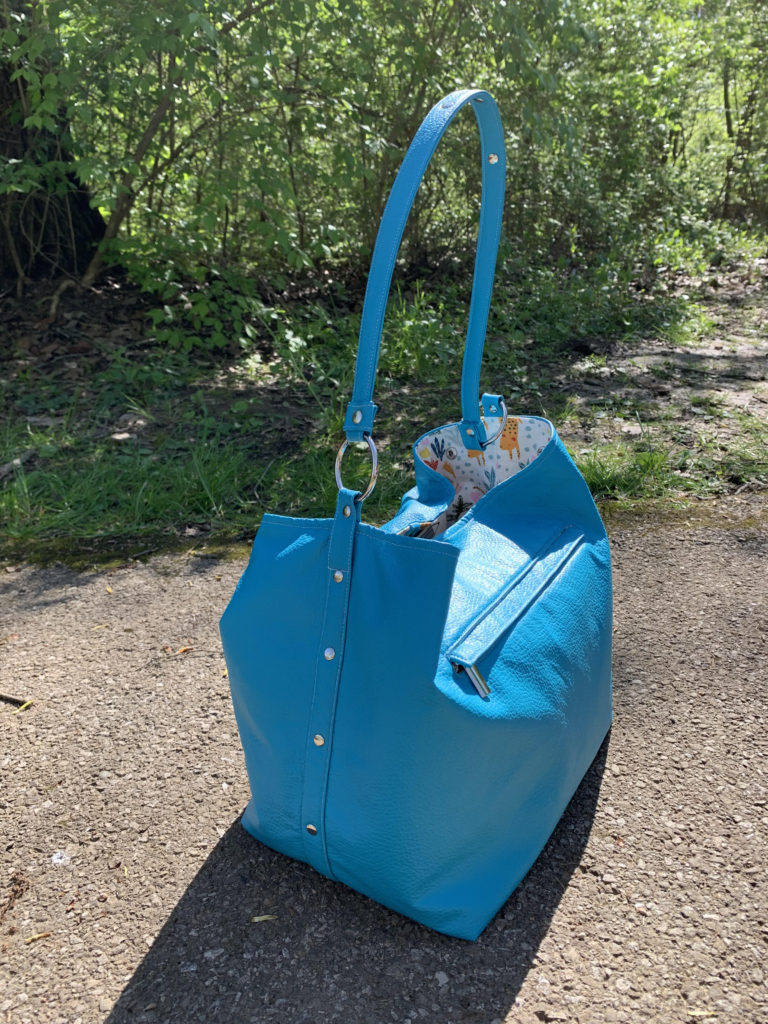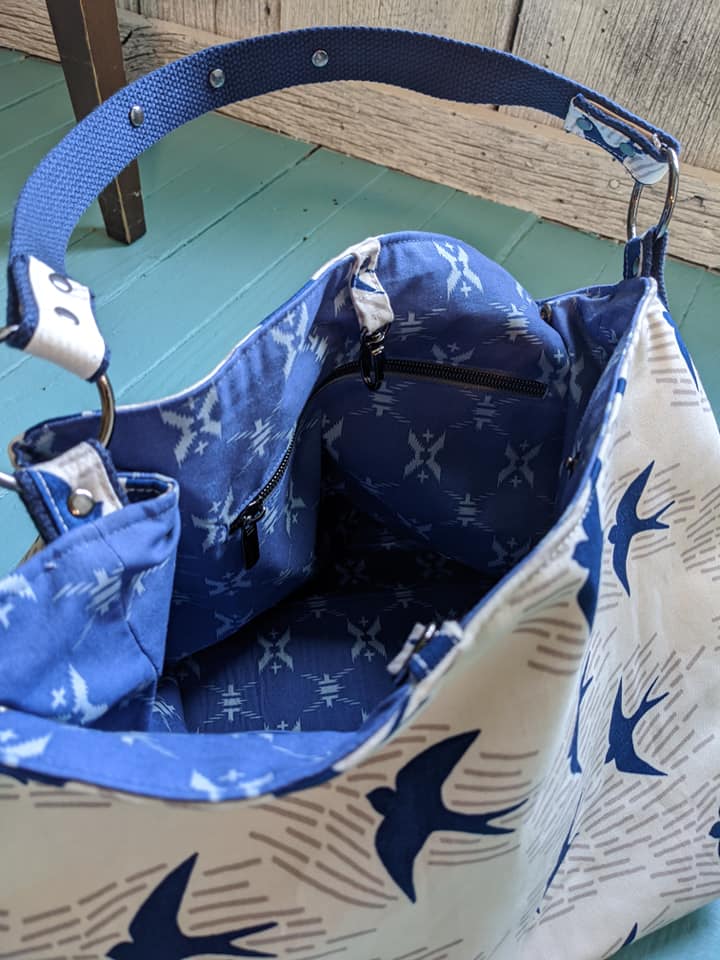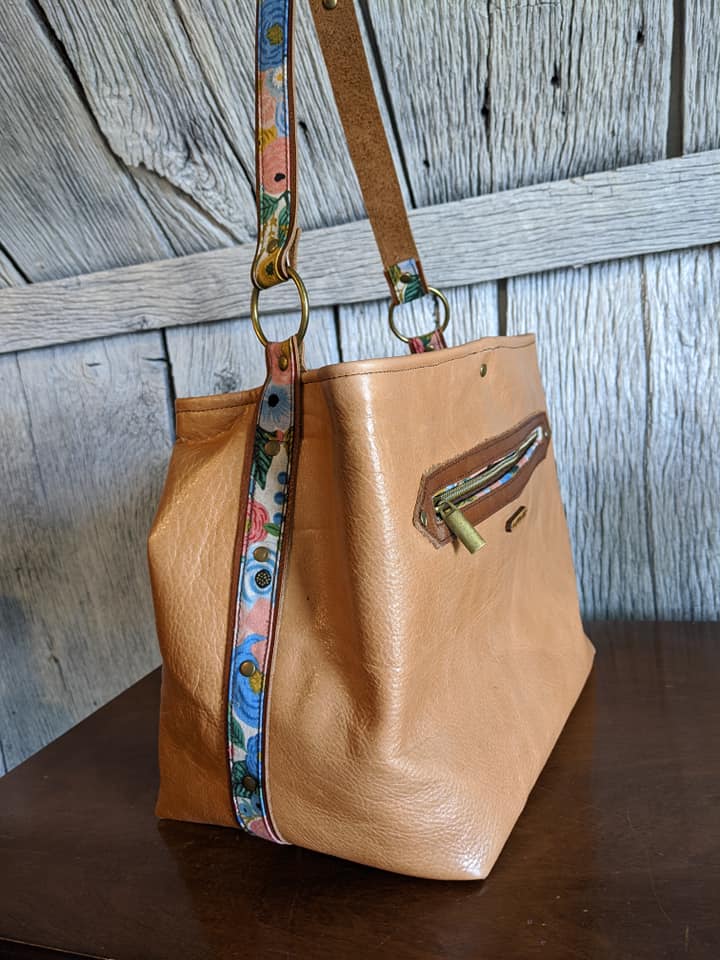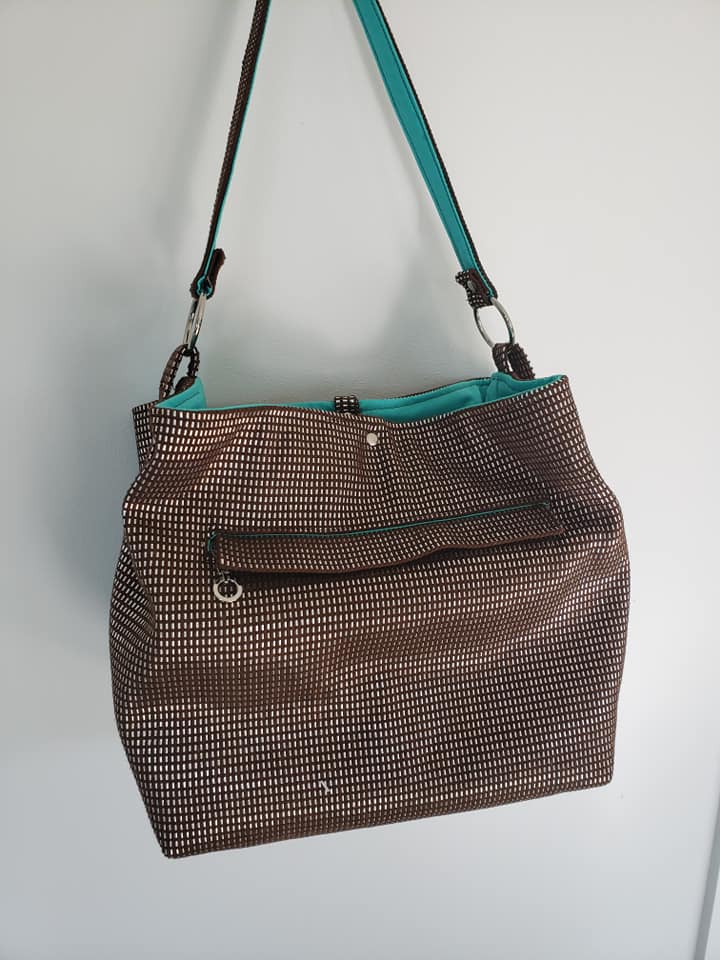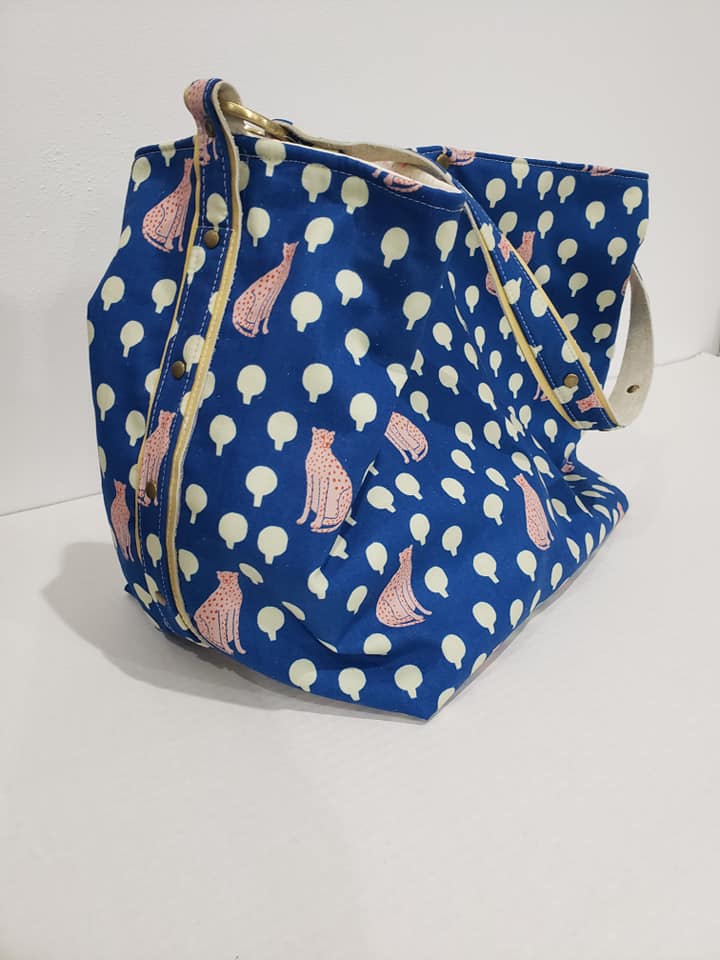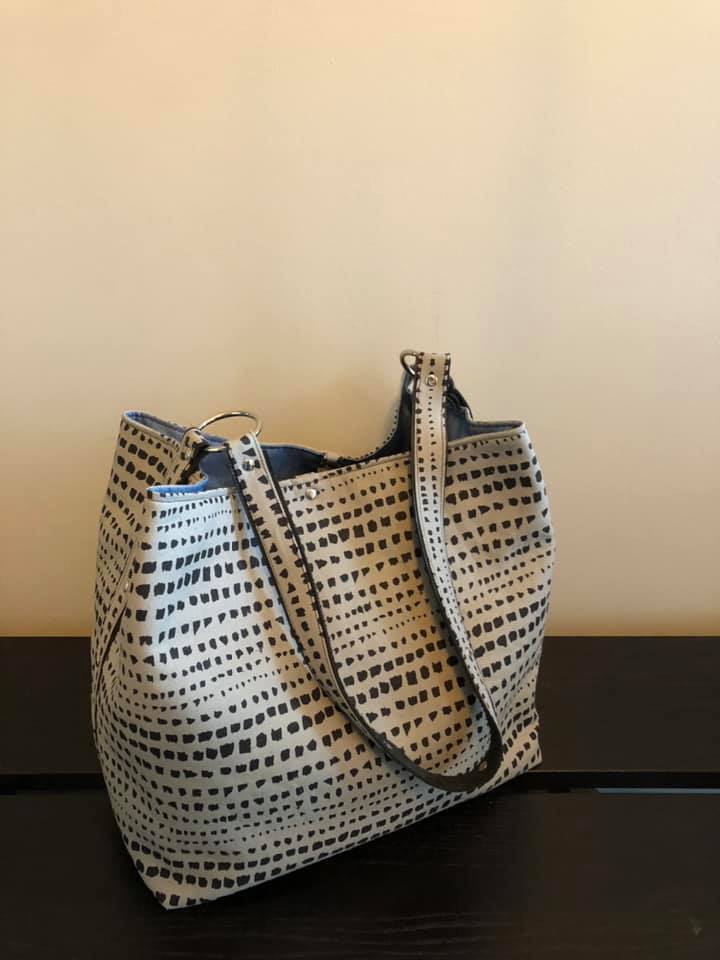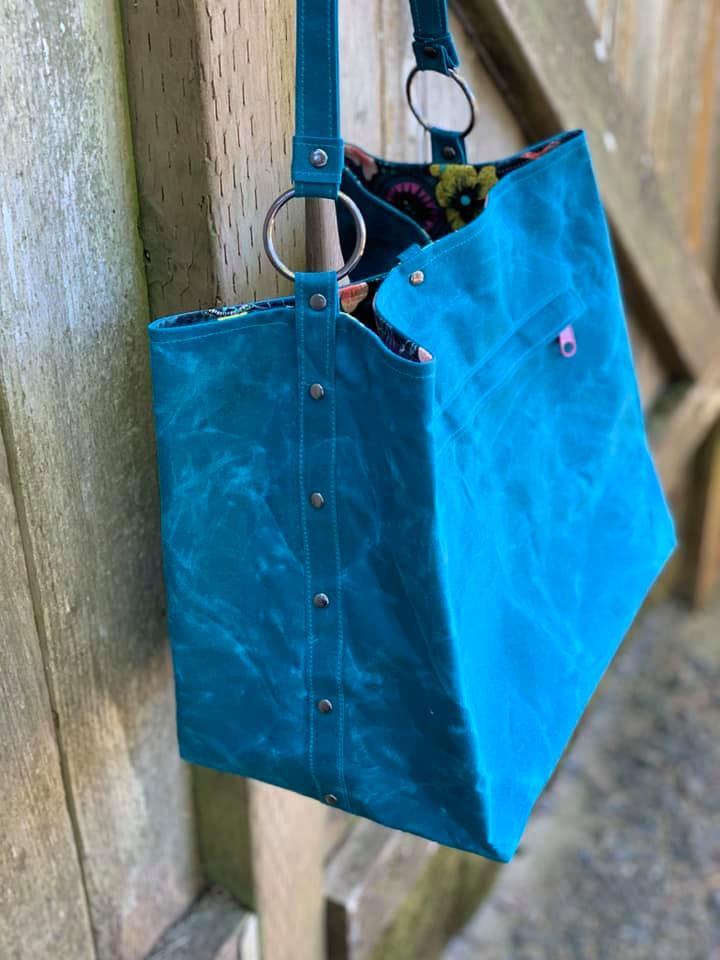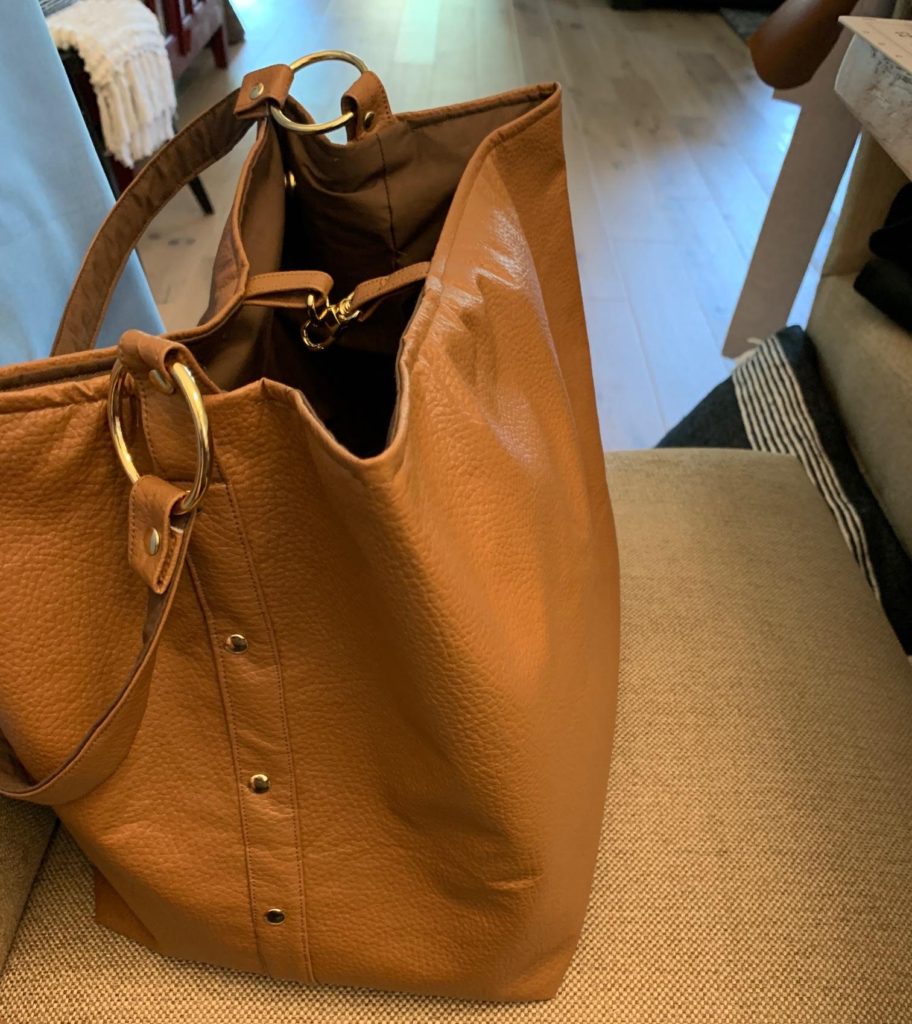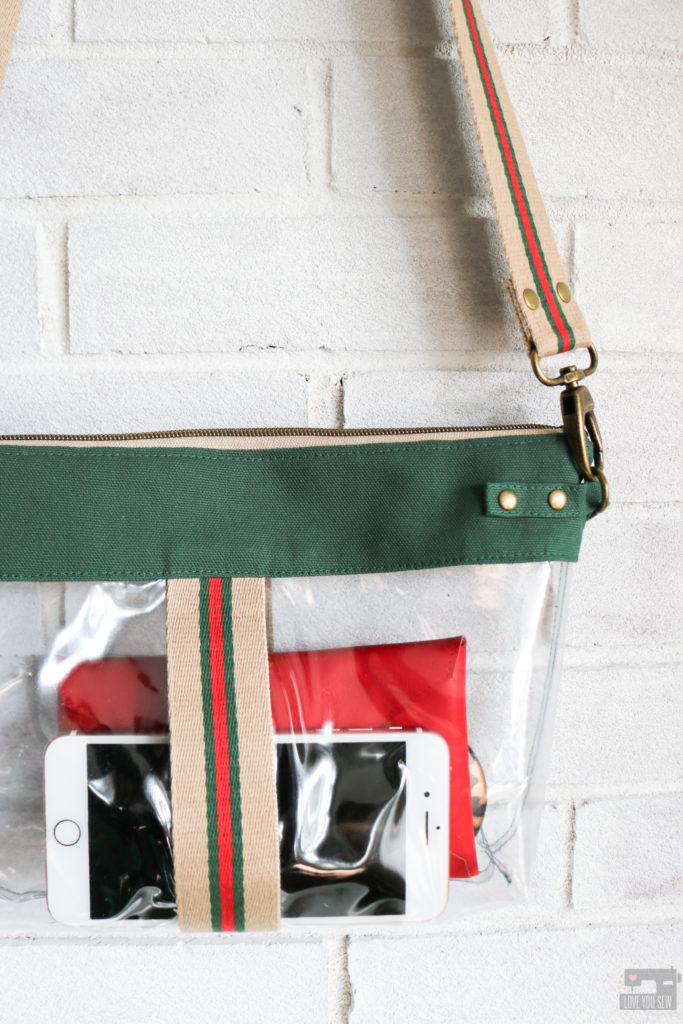 The best part about writing patterns is coming back and hacking them! I’m constantly inspired by the runways and the latest fashion trends. When I wrote this Emma Stadium Bag hack for Sewn Magazine (April 2020,) I noticed how straps were becoming the main focus on bags. They were produced in different fabric from the main bodies and were made in all sorts of distinctive colors and contrasting patterns…making the straps REALLY stand out. Many brands were offering customization with mix and match options which help to make a bag feel like it was made for you.
The best part about writing patterns is coming back and hacking them! I’m constantly inspired by the runways and the latest fashion trends. When I wrote this Emma Stadium Bag hack for Sewn Magazine (April 2020,) I noticed how straps were becoming the main focus on bags. They were produced in different fabric from the main bodies and were made in all sorts of distinctive colors and contrasting patterns…making the straps REALLY stand out. Many brands were offering customization with mix and match options which help to make a bag feel like it was made for you.
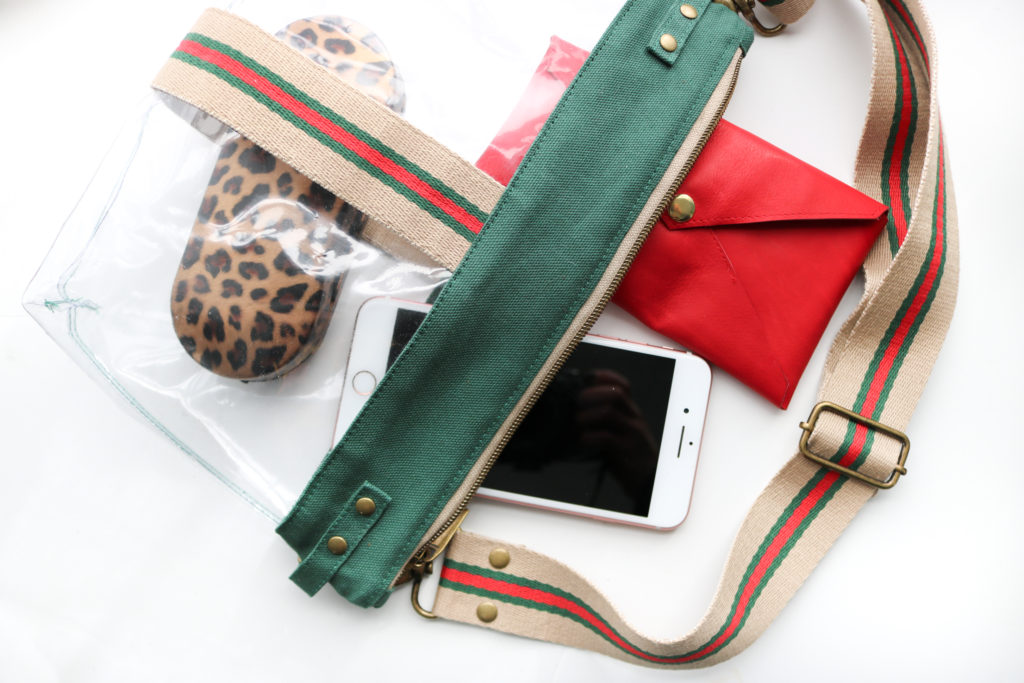 I love a good statement strap as seen with my Guitar Strap Tutorial here and my play on a fringed Festival Bag here. Needless to say, I couldn’t resist making my own designer inspired version. Can you guess the high-fashion label that was my muse? Now, you can really make a full personalized bag with the Twill Tape hack below!
I love a good statement strap as seen with my Guitar Strap Tutorial here and my play on a fringed Festival Bag here. Needless to say, I couldn’t resist making my own designer inspired version. Can you guess the high-fashion label that was my muse? Now, you can really make a full personalized bag with the Twill Tape hack below!
Materials Required
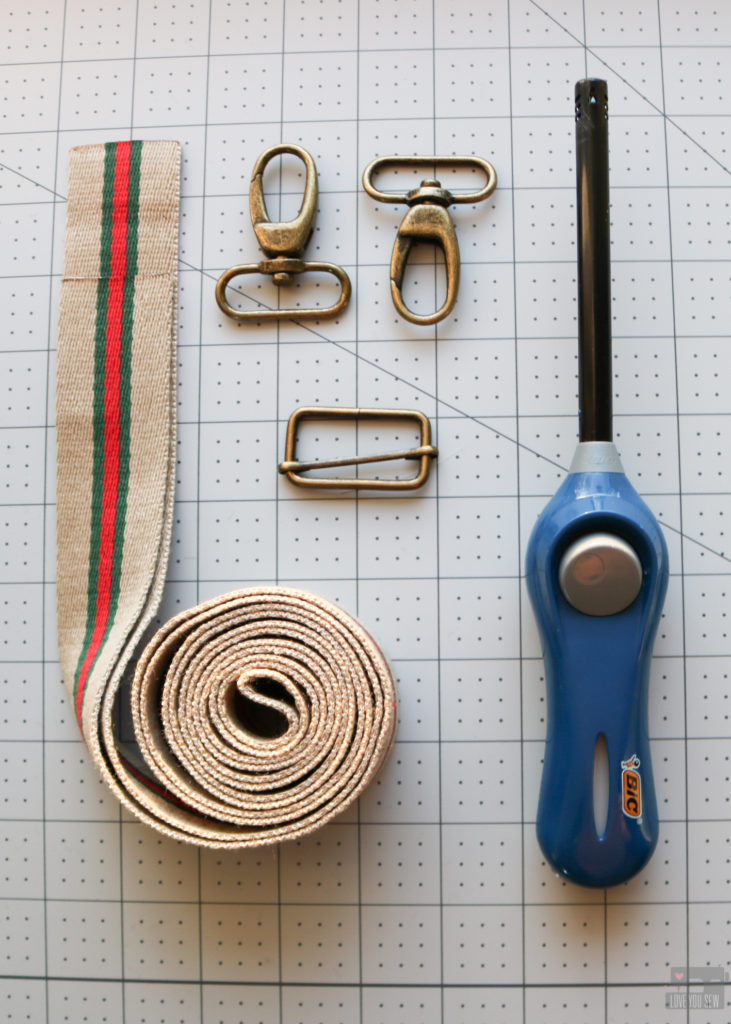
- Emma Stadium Bag PDF Sewing Pattern – You can read about it here!
- (2 yds) of 1 1/2” Twill Tape (I bought mine here on Etsy.)
- (2) 1 1/2” D-Rings
- (1) 1 1/2” Slider
- (12) Rivets + setting tools
- (1) 13” x 1” Main Fabric
- Permanent Fabric Glue like Beacon Fabric-Tac (my fave!)
- Fabric Hole Punch (This one is my tool of choice.)
- Lighter
- Marking Tool – I like to use a Washable Crayola Marker on the vinyl.
Cutting
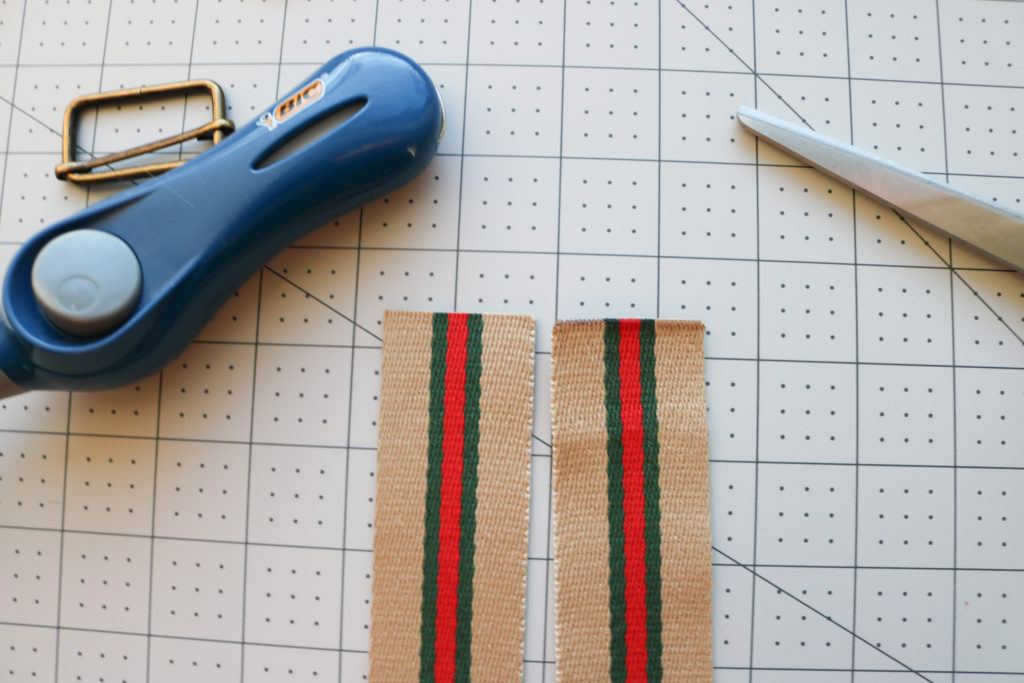
- Cut fabric and vinyl per instructions minus the strap pieces.
- Cut (2) 7 1/2” lengths of the Twill Tape. Heat seal each end of the tape with the lighter. Set Aside.
Strap
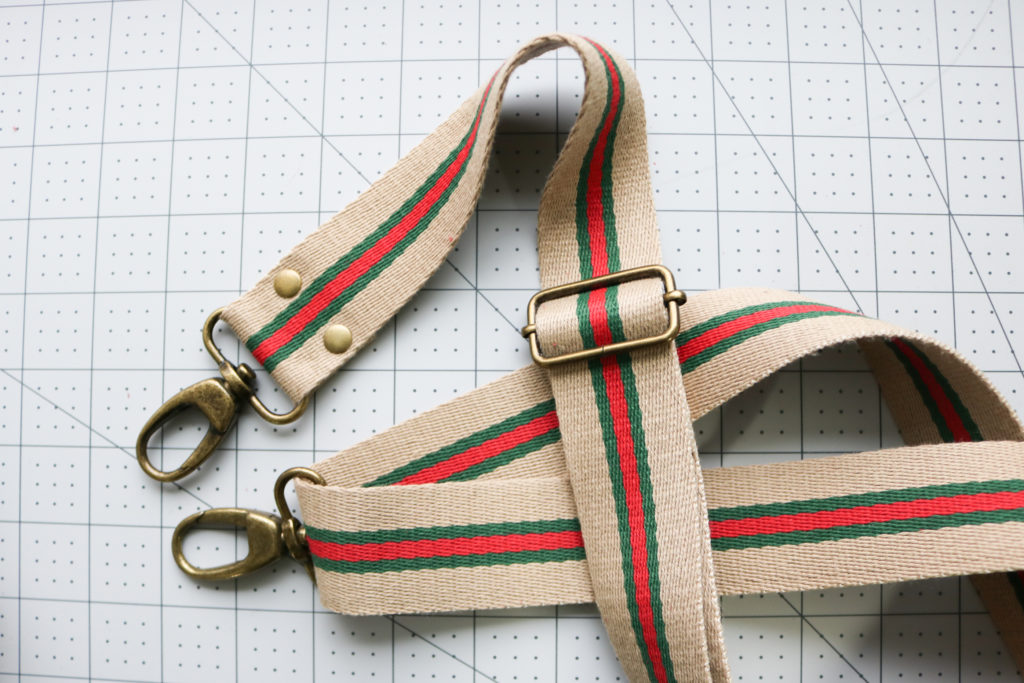
- With the remaining Twill Tape, heat seal each end of the tape with the lighter. *If you are using a 100% cotton tape, you won’t be able to heat seal. Sew 1/8″ at each raw edge to keep it from unraveling. Back-stitch well.
- Follow the instructions in the pattern to thread the strap through the 1 1/2” slider and (2) 1 1/2” Swivel Clasps.
- Use (2) Rivets to secure each end of the strap (4 rivets total) or sew into place. This video can help you through adding rivets.
- This was omitted to let the twill tape stand on its own and not detract from the overall look.
Zipper Top
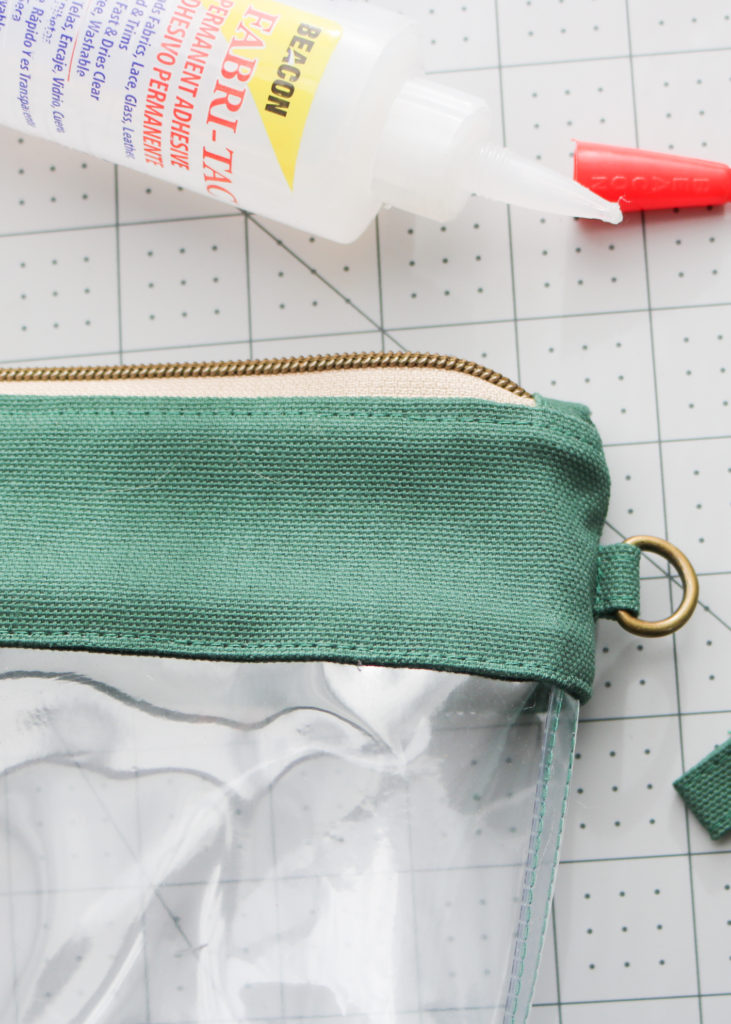
- Make with the SHORT D-Ring tab option. Although the photo shows the vinyl already attached, you will only have the Zipper Top completed at this point.
Vinyl Bottom
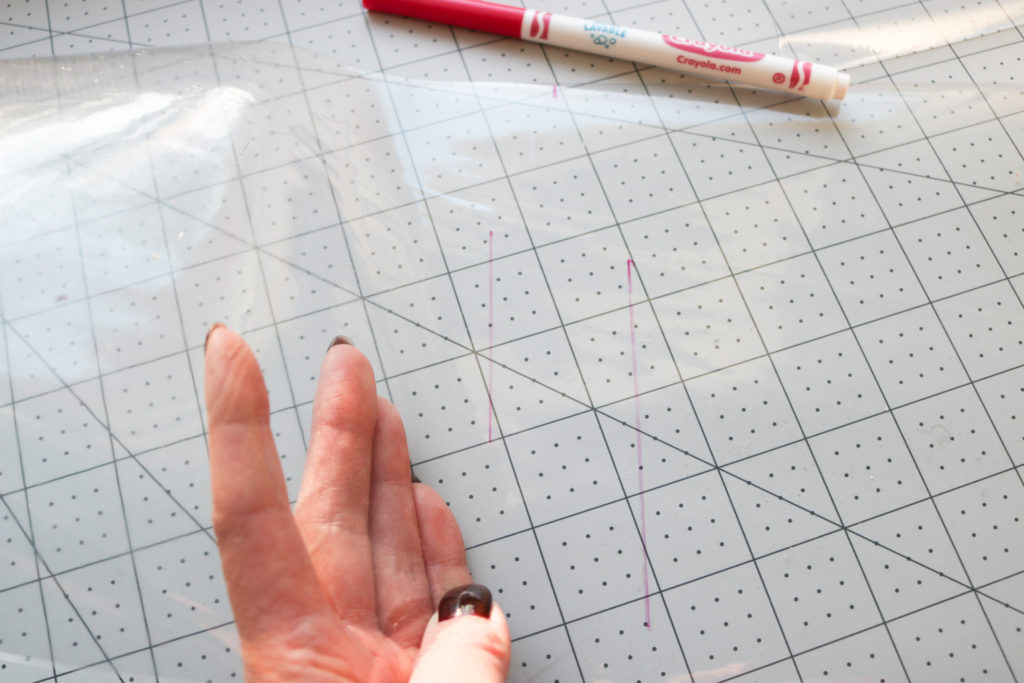
- After marking the center of the vinyl bottom on the wrong side of the vinyl, mark 3/4” out on either side of the center. These lines will be used as sides for the Twill Tape.
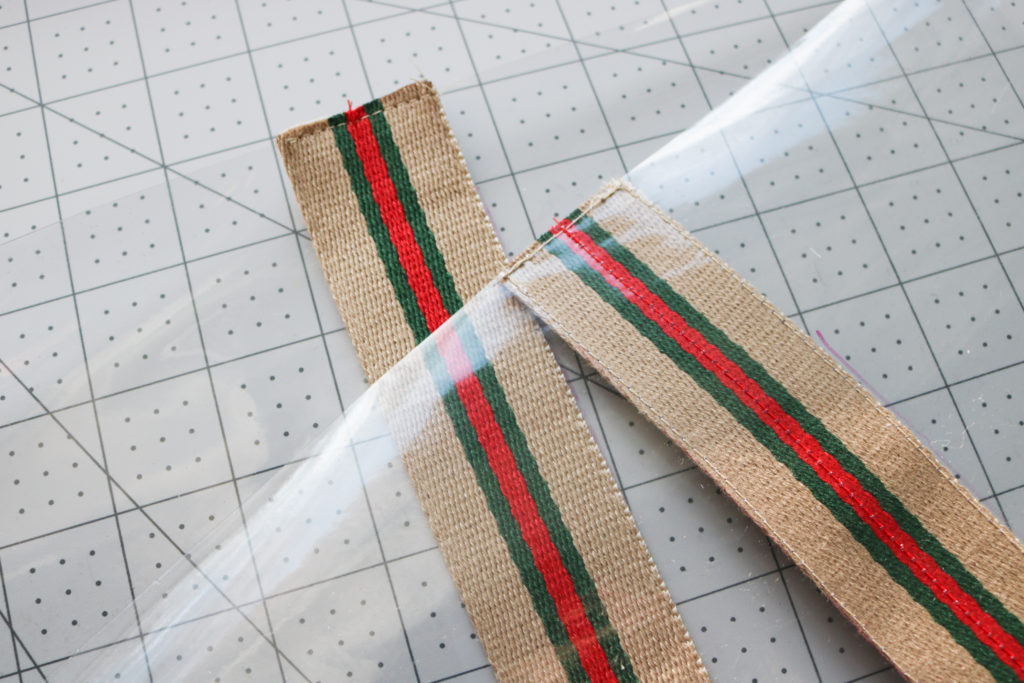
- Flip the vinyl over and line up Twill Tape within the markings. Top-stitch along the Twill Tape 1/16” into place. Optional – Add another row of stitching down the center of the Twill Tape. Repeat on other side of the body.
- TIP: Sew down the sides of the Twill Tape in the same direction to avoid possible shifting.
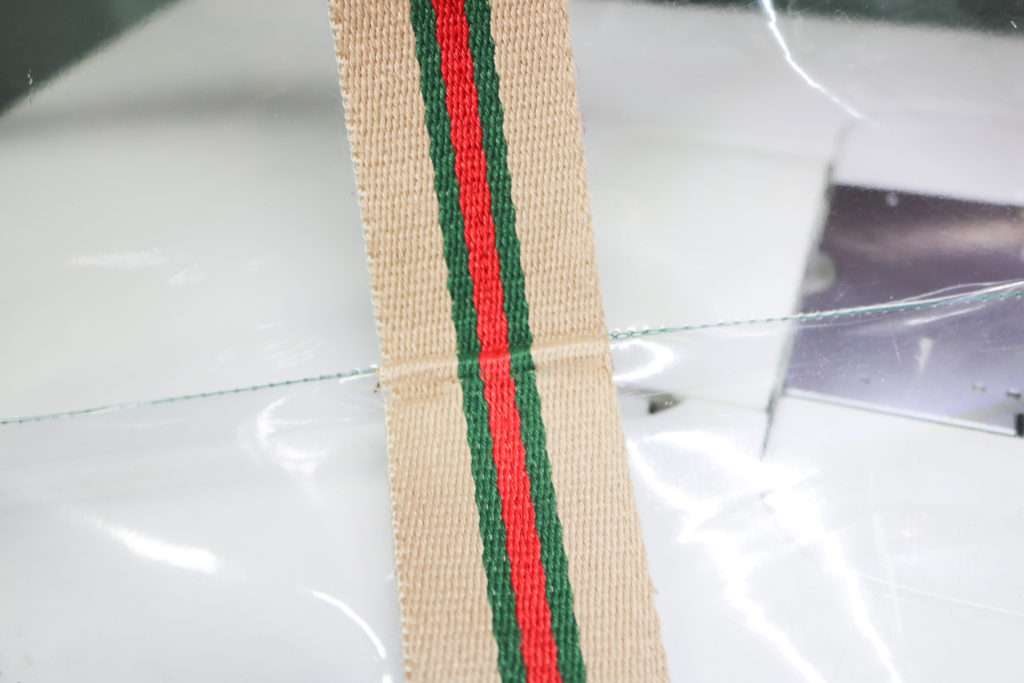
- Finish sewing the rest of the vinyl bottom, making sure to align the Twill tape when sewing the bottom seam.
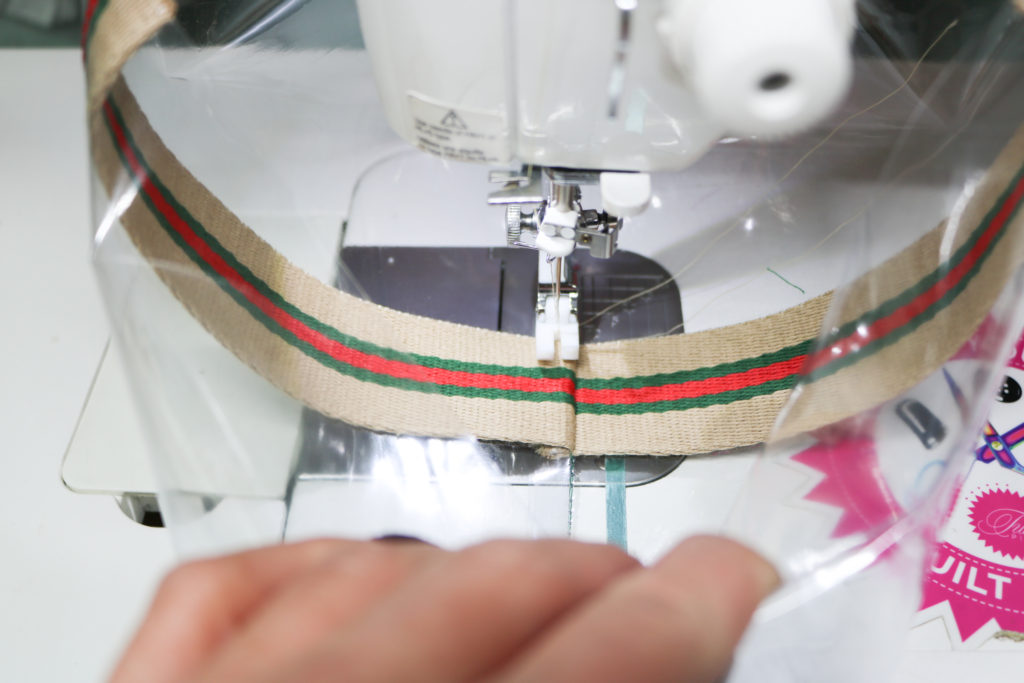
- With the Twill Tape facing up, sew the seam allowance to the body between 1/8″ – 1/4″ from the seam.
- Finish the bag and wipe away any markings on the vinyl.
D-Ring Accent Tabs
I love the look of extra texture on the Zipper Top and these tabs provide such nice details…especially with the addition of rivets. However, if you tried to make only these long tabs with fabric, they would pull and go vertical when worn. The D-ring would also be sliding all across the tab and the weight distribution on the strap would definitely be off. So when I was trying to decide how I could I could have the look, it dawned on me, that I could literally combine the techniques of the short tab and these riveted accent one. I developed this “double D-ring” method to have the visual appeal AND have the security of a shorter tab.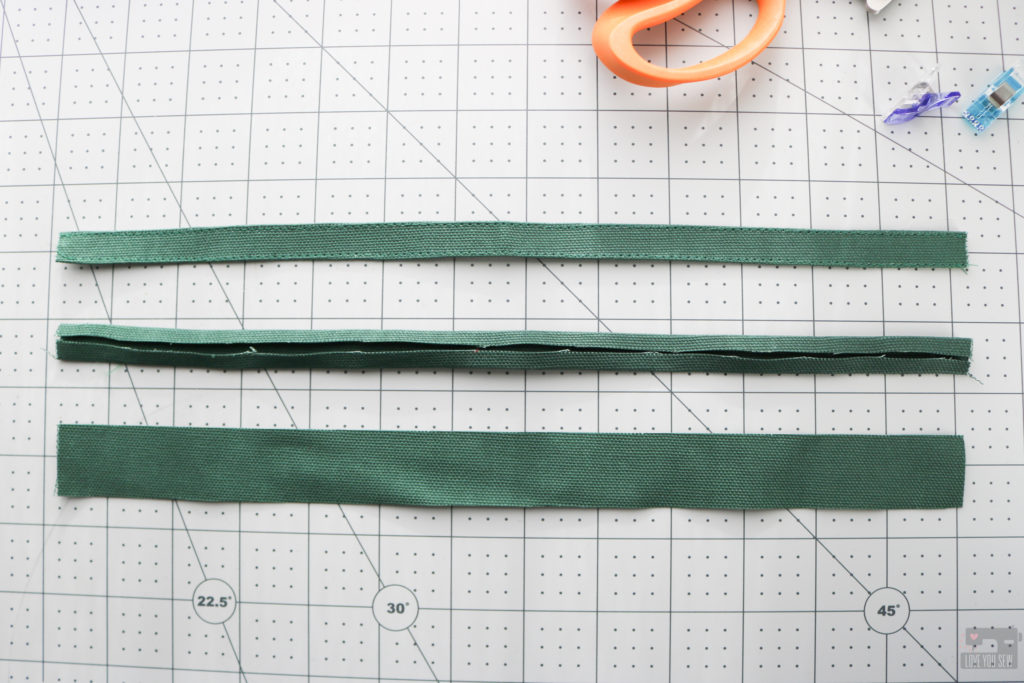
- To make, take the 13”x1” strip of fabric –
- (Bottom and middle strips) Fold each long side toward the center, wrong-sides together making 1/2” single-fold tape. Press well
- (Top strip) Top-stitch 1/16” along each long edge
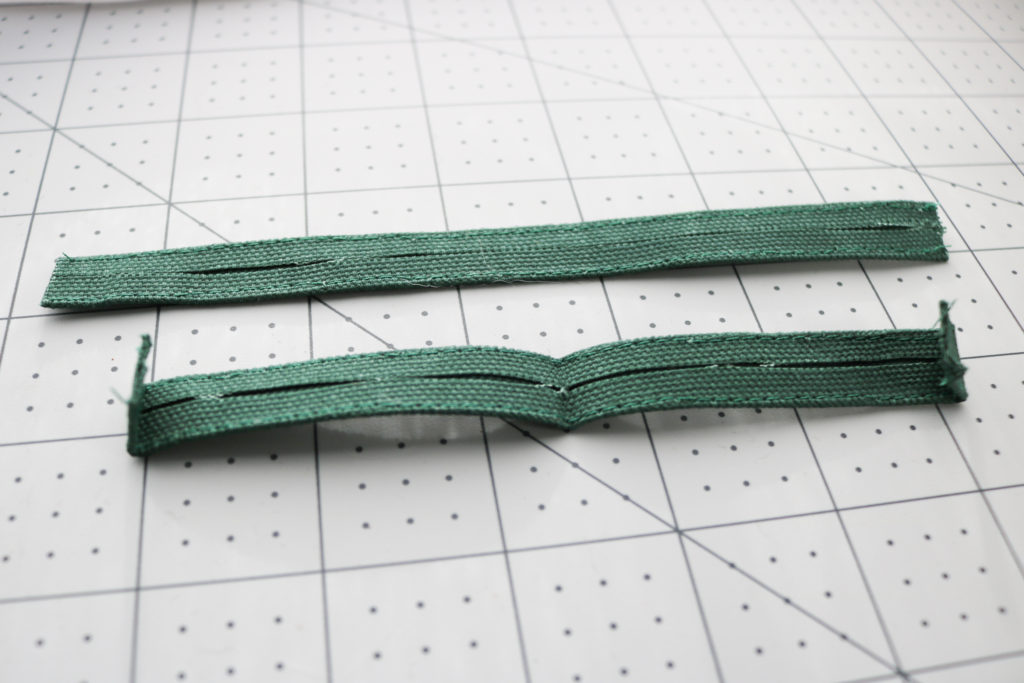
- Cut in half length-wise so there are (2) 6 1/2” tabs. With each tab, fold each short end inward with wrong sides together by 1/2”. Press.
- Fold the entire tab in half, wrong sides together. Press.
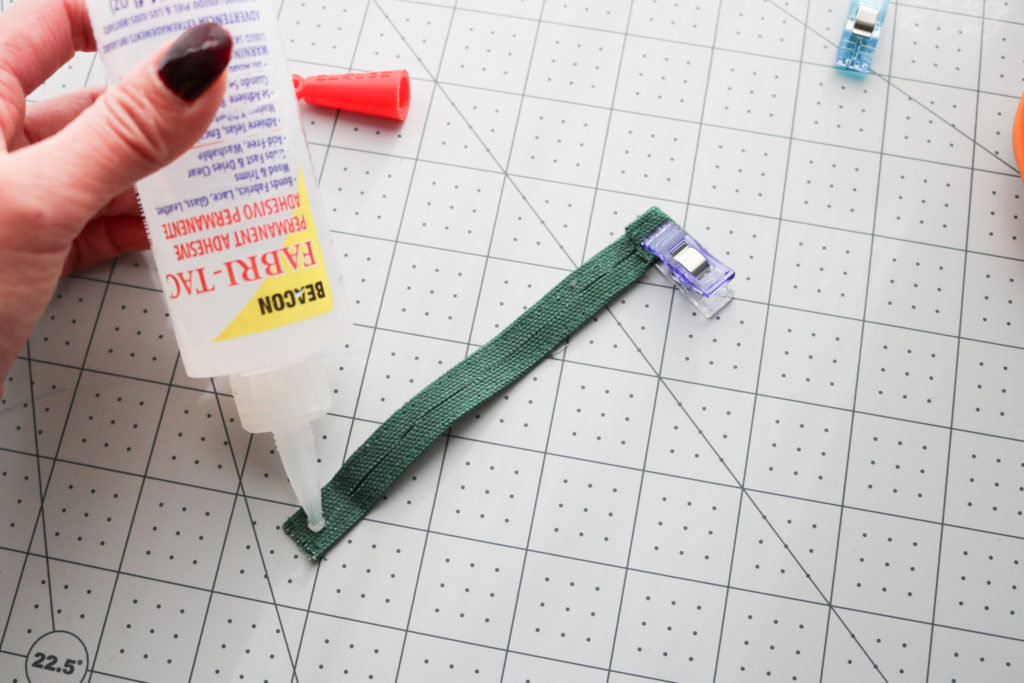
- Glue down each 1/2” folded end.
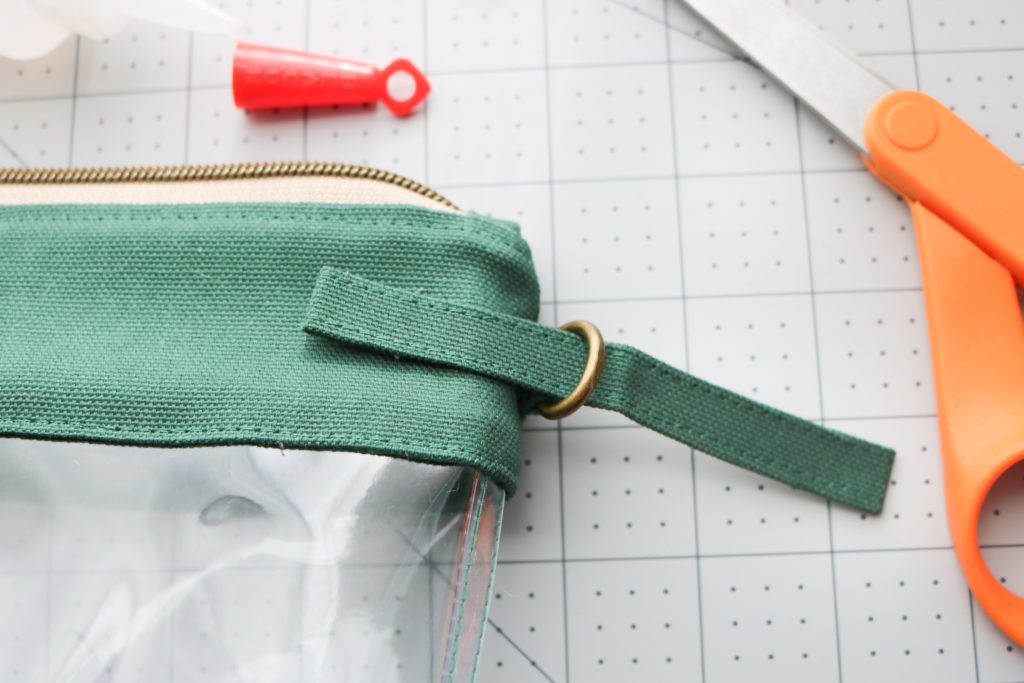
- Slide the Accent Tab equally through the 1/2” D-Ring with right side facing out.
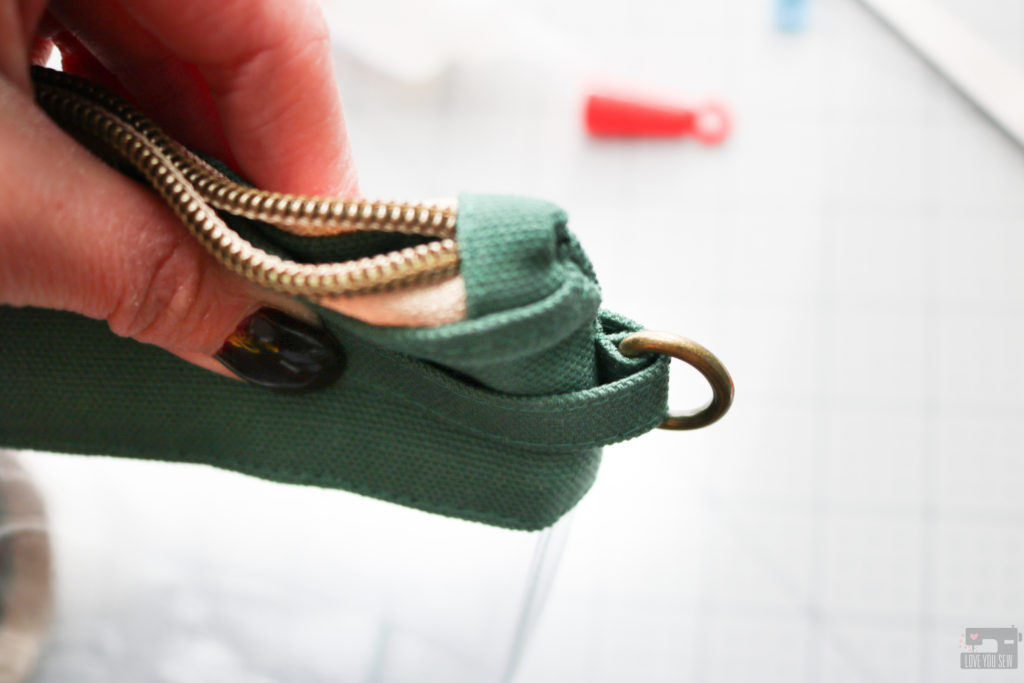
- With the D-Ring tab fully extended, mark the Accent Tab placement so it is parallel to the zipper and next to, but not pushing into the D-Ring. Glue the Accent Tab into place.
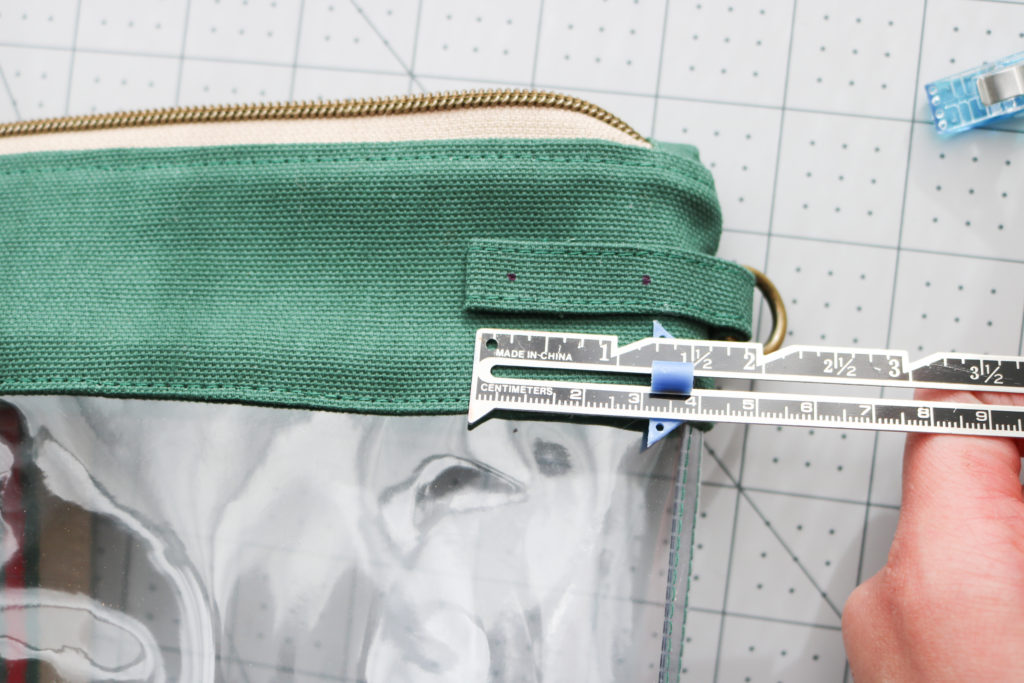
- From the edge of the tab, mark at 3/8” and 1 1/4” for rivet placement.
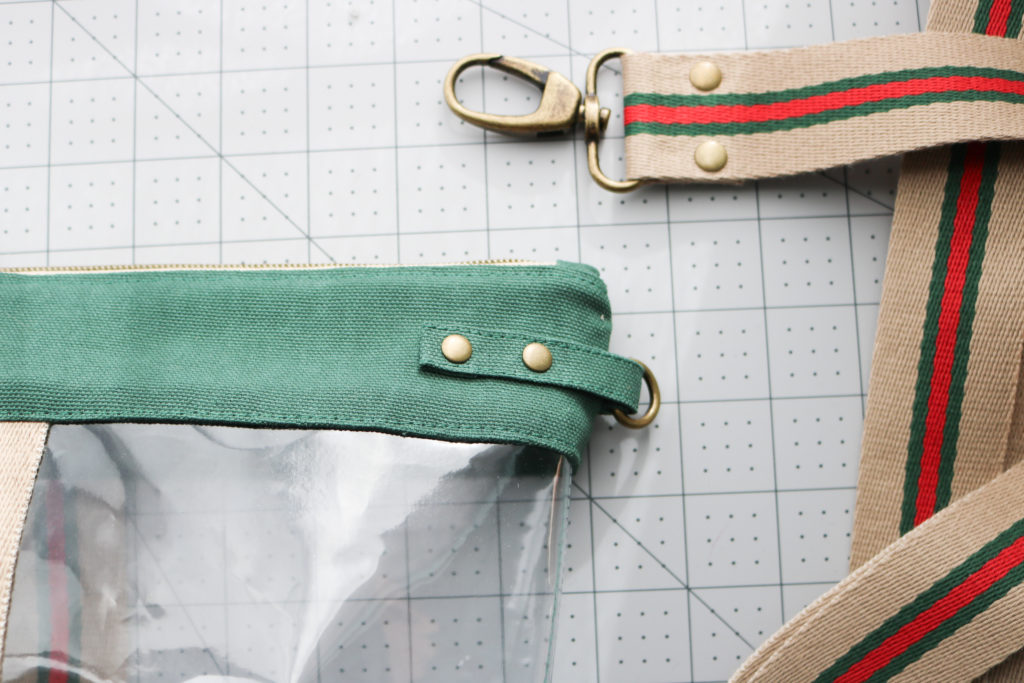
- Use the fabric hole punch to cut through the Accent Tab, Main Fabric, and Lining. Attach rivets using your preferred method. You can check out this hand application video here.
- Repeat on the other side of the same Accent Tab. Then repeat for the second Accent Tab. You will attach 8 rivets altogether on the Accent Tabs.
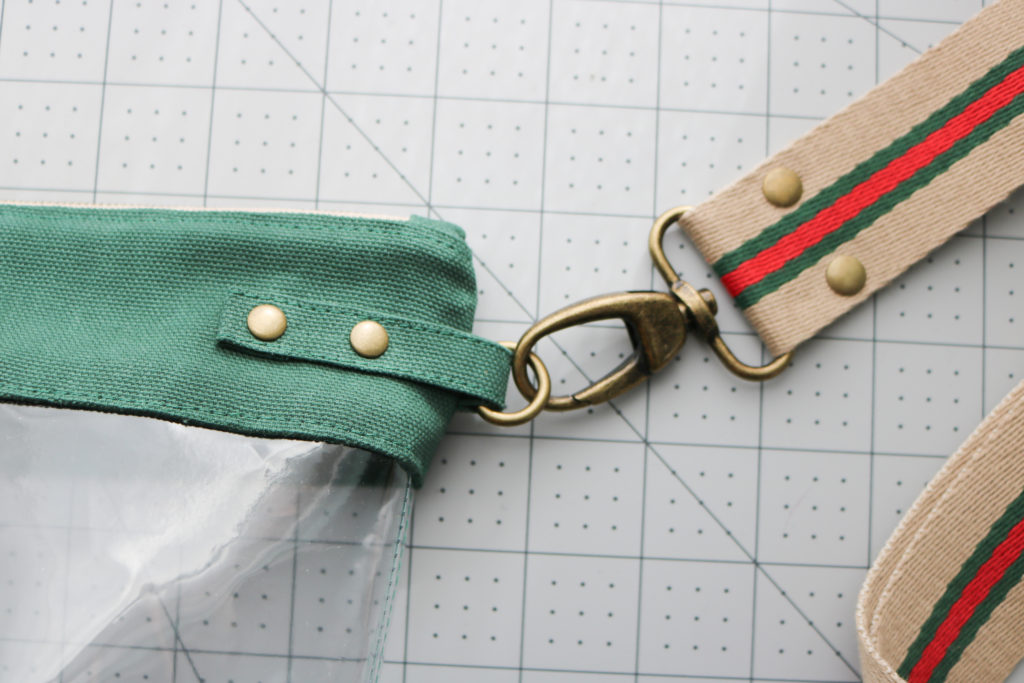
- Attach the Strap to the D-Rings and you are ready to rock out in style! How do you like the D-ring illusion?
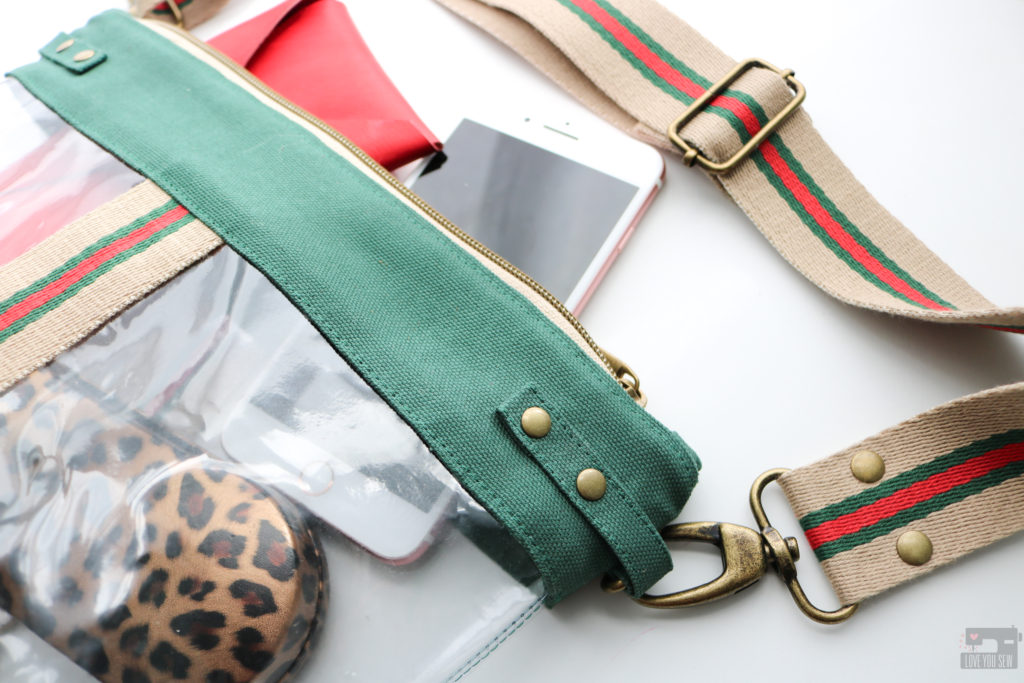 If you are looking for other ideas to get the most out of your Emma Stadium Bag pattern, check out this post on how to add a leather hook and the Intro post here with tester versions.
Happy Sewing!
Cristy
If you are looking for other ideas to get the most out of your Emma Stadium Bag pattern, check out this post on how to add a leather hook and the Intro post here with tester versions.
Happy Sewing!
Cristy
This post may contain affiliate links which help keep this website and content rolling. You can read about all of my Disclosures here.
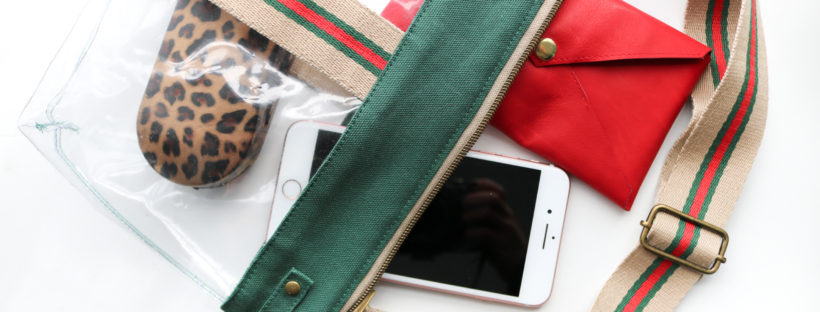
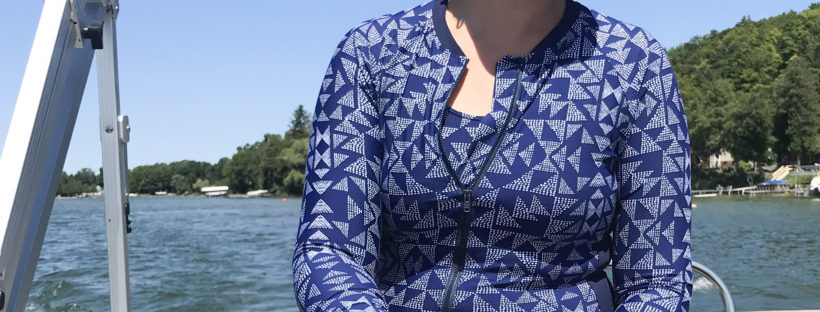
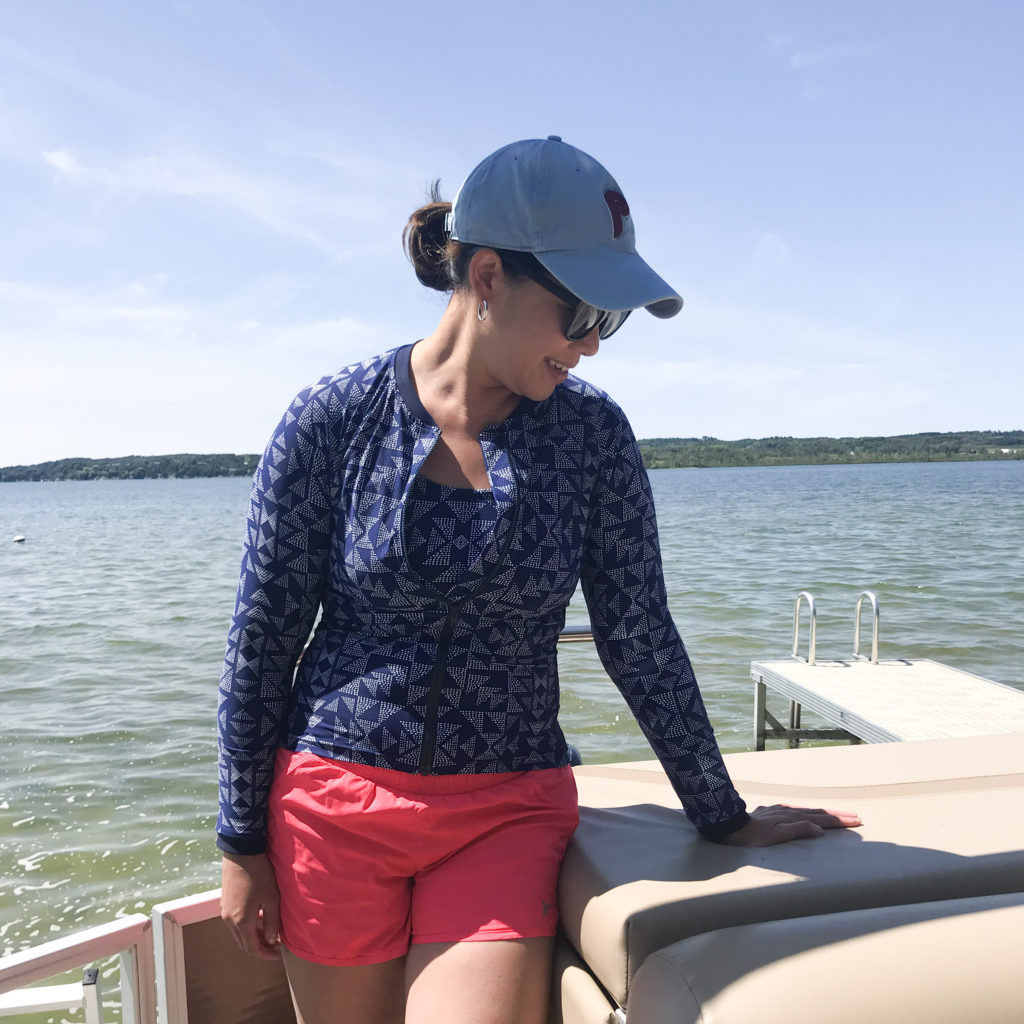
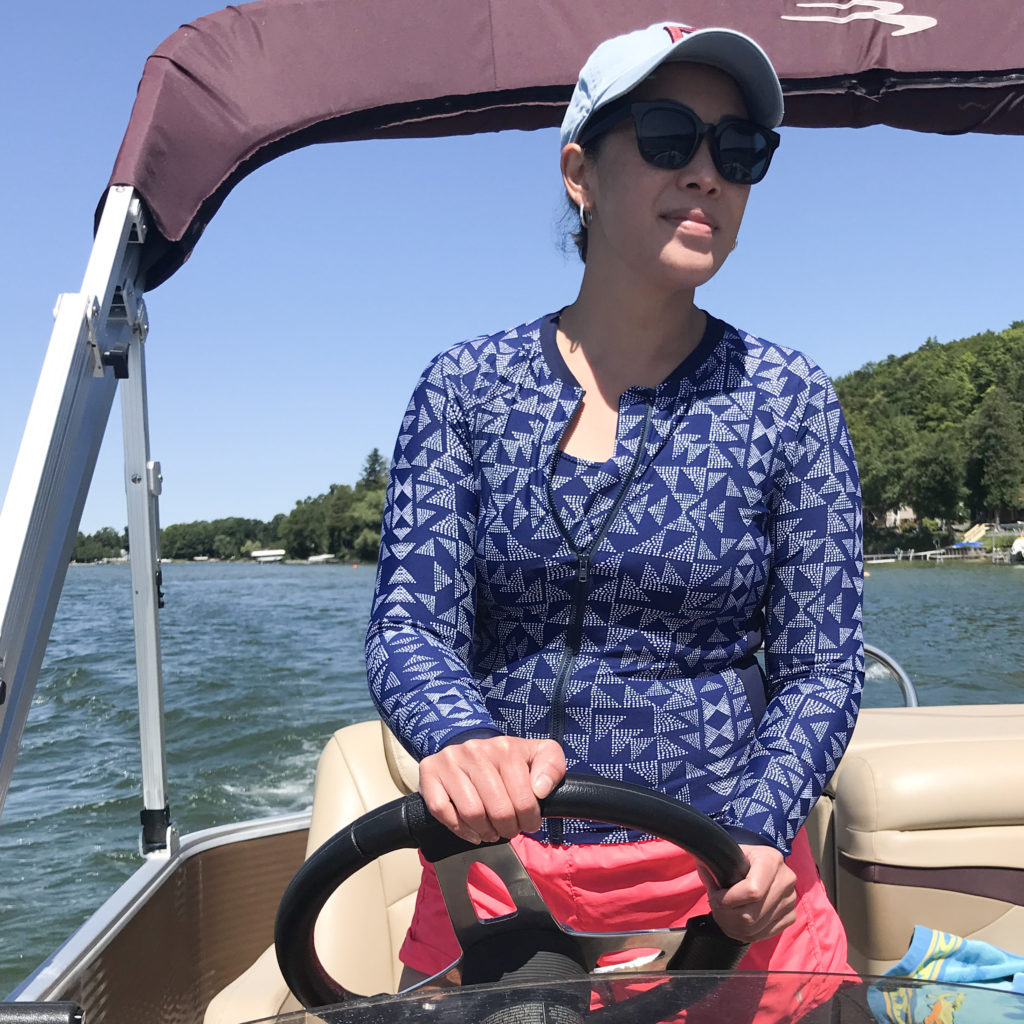
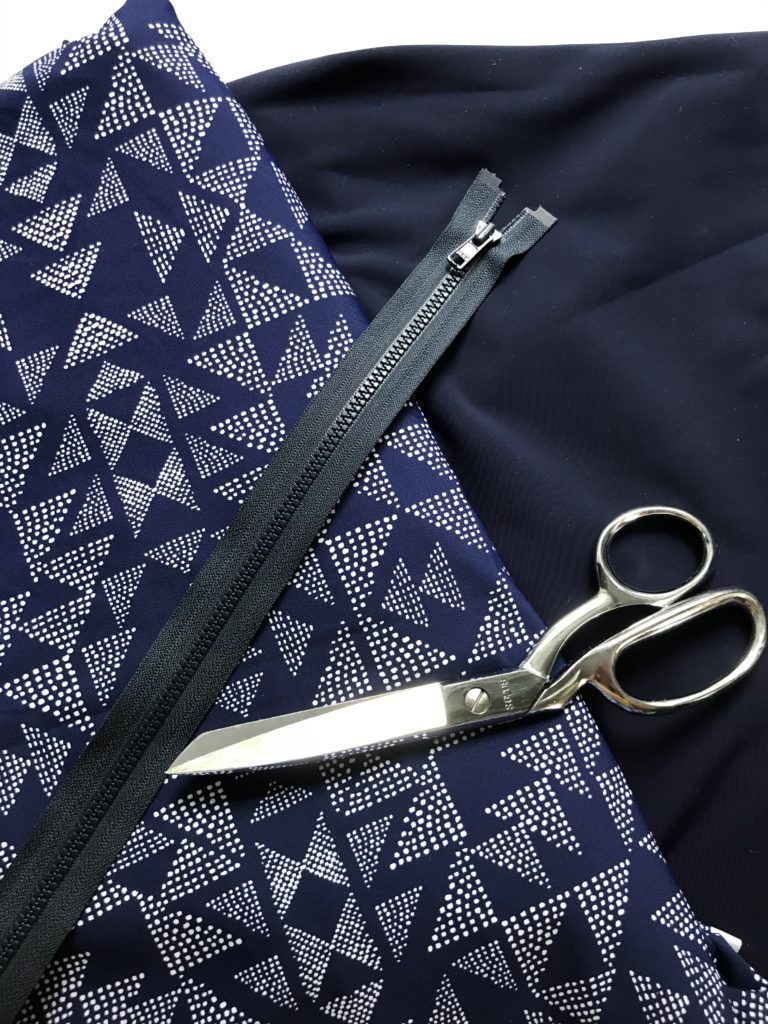
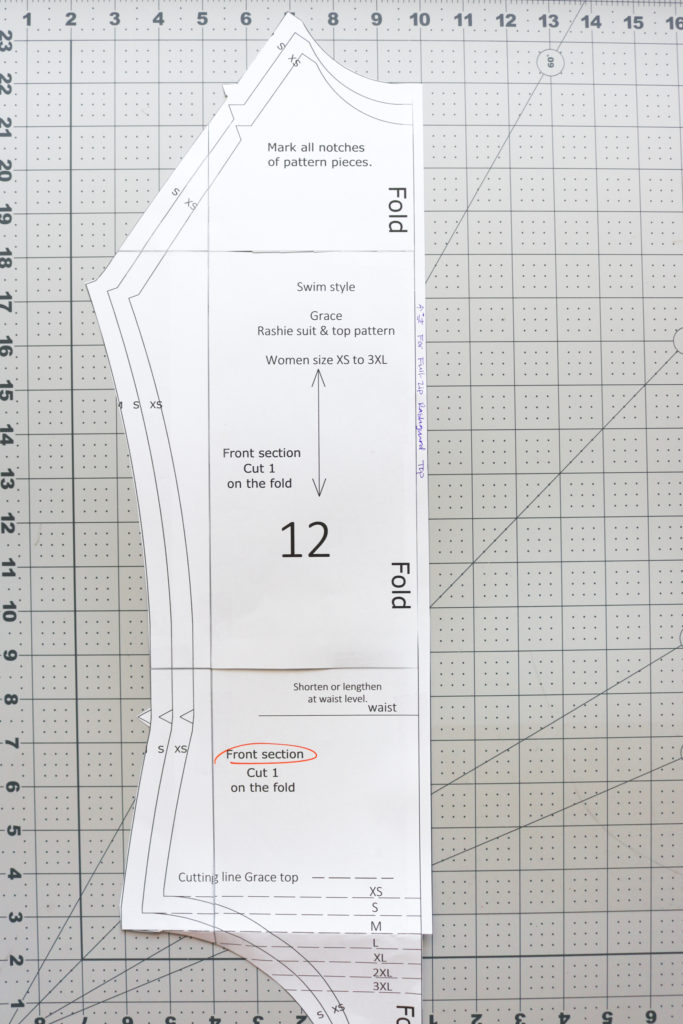
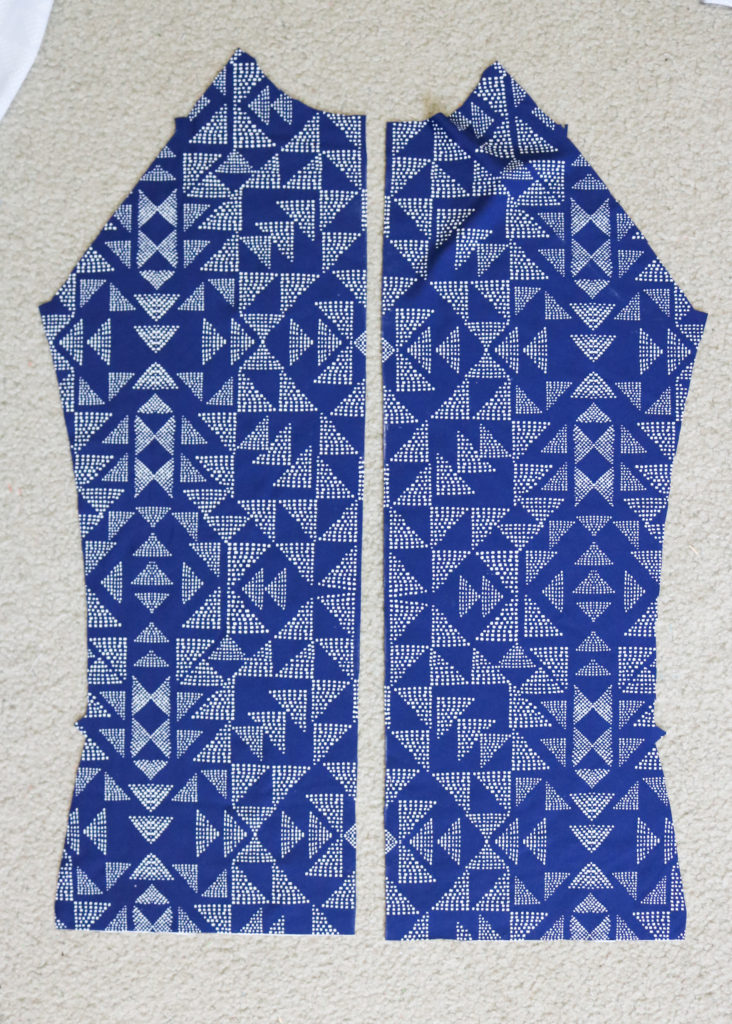
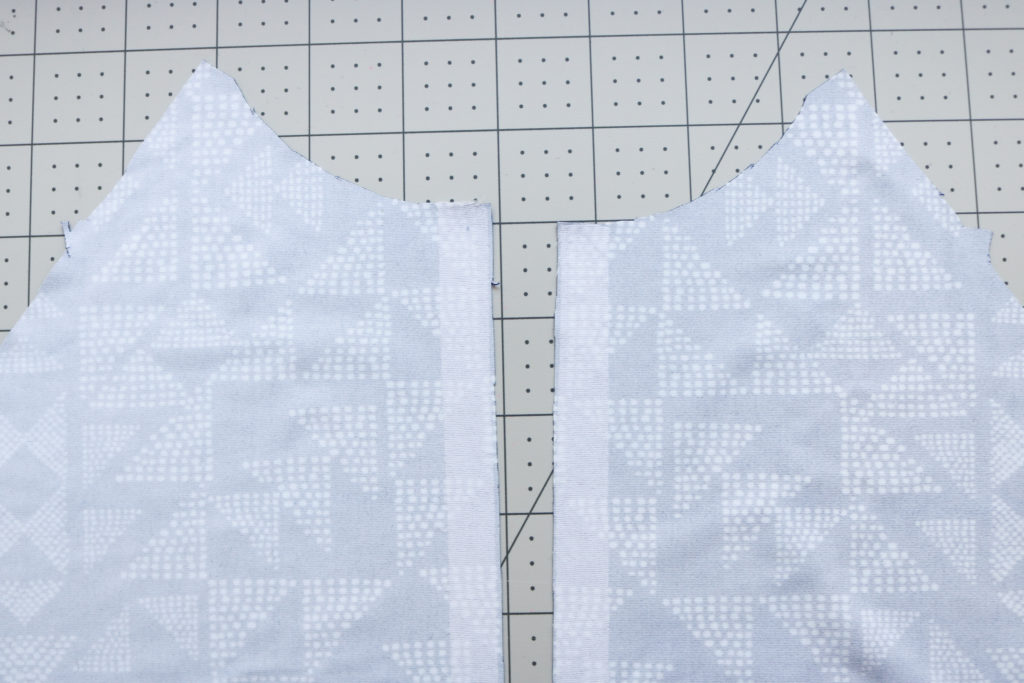
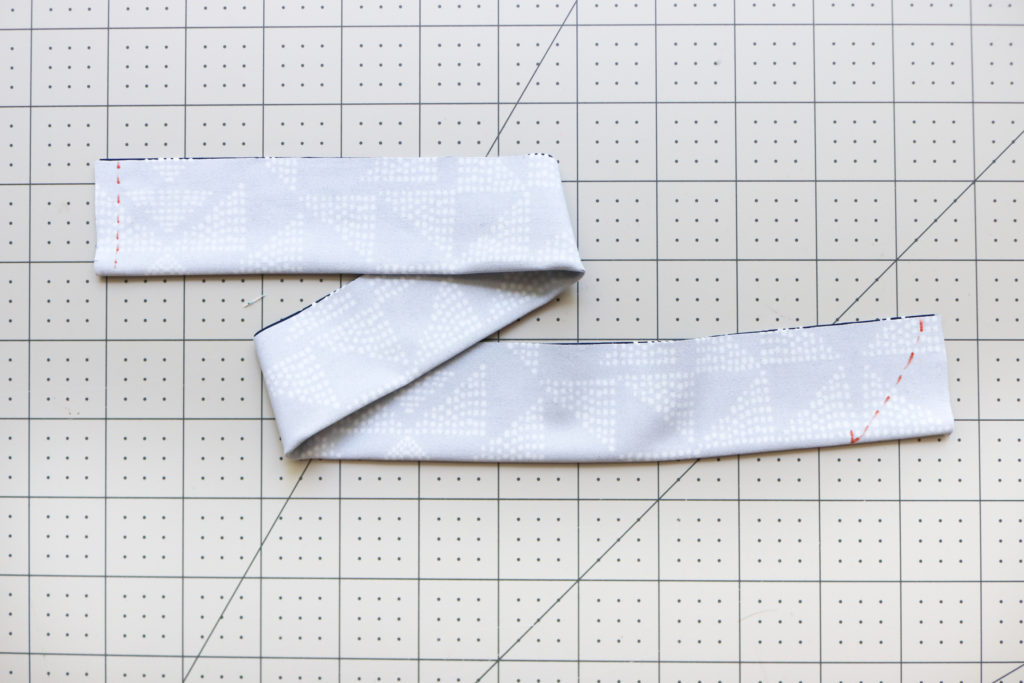
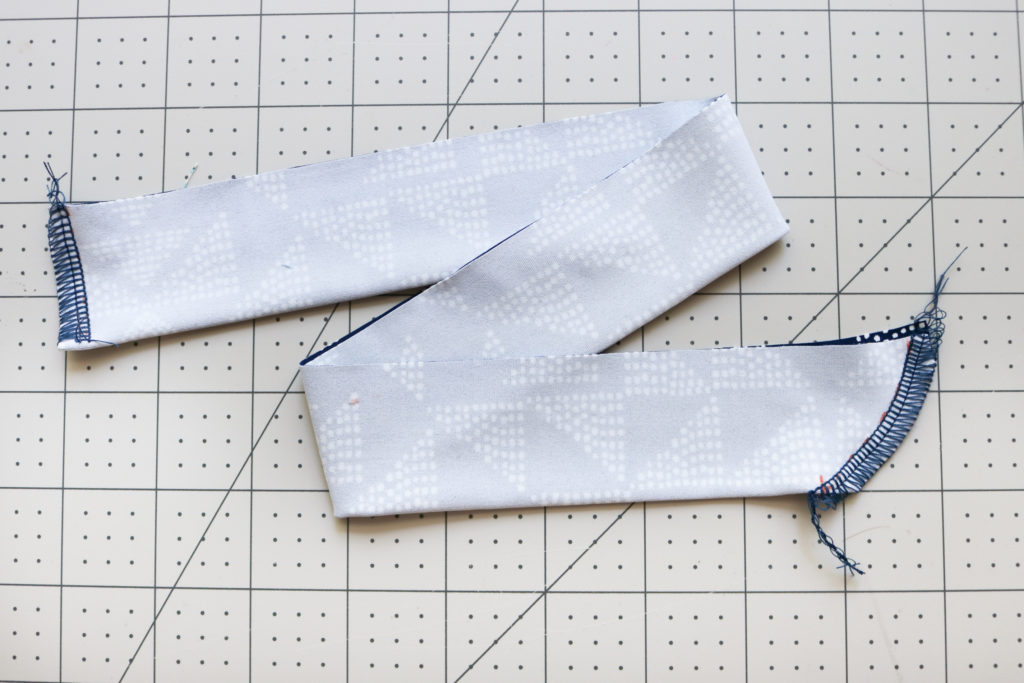
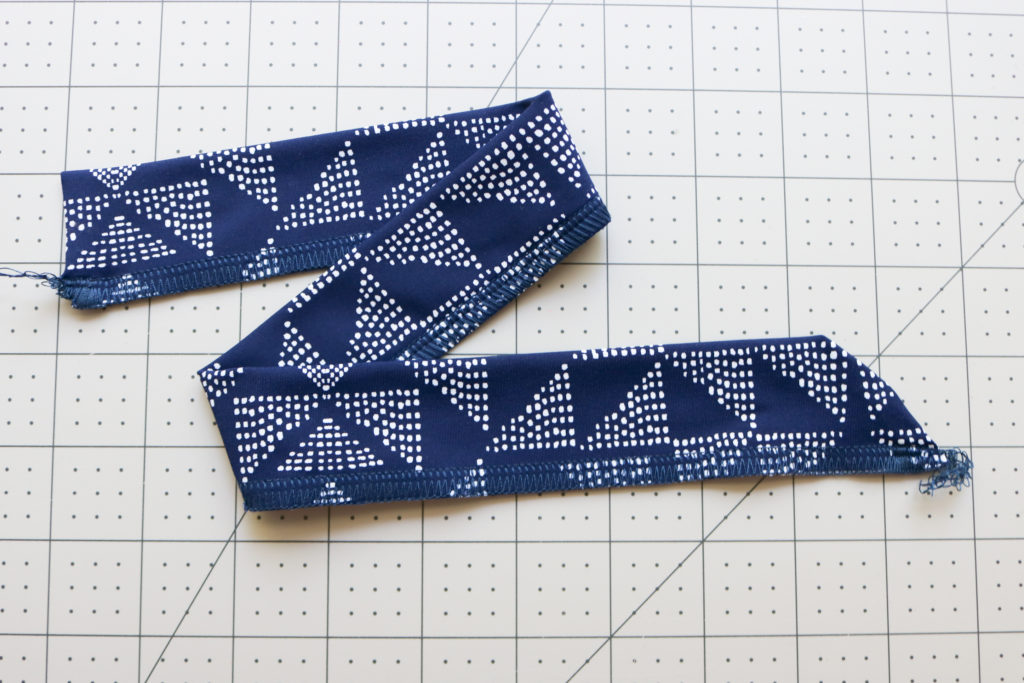
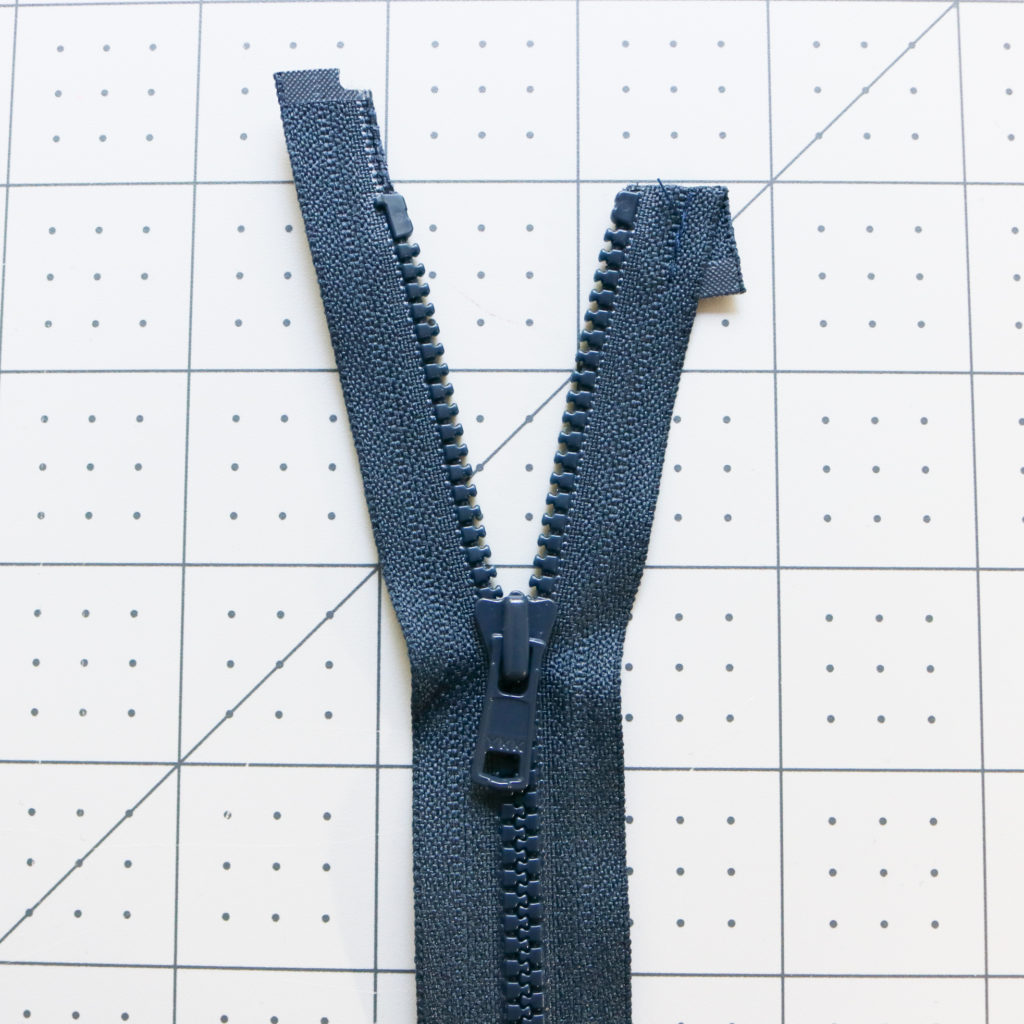
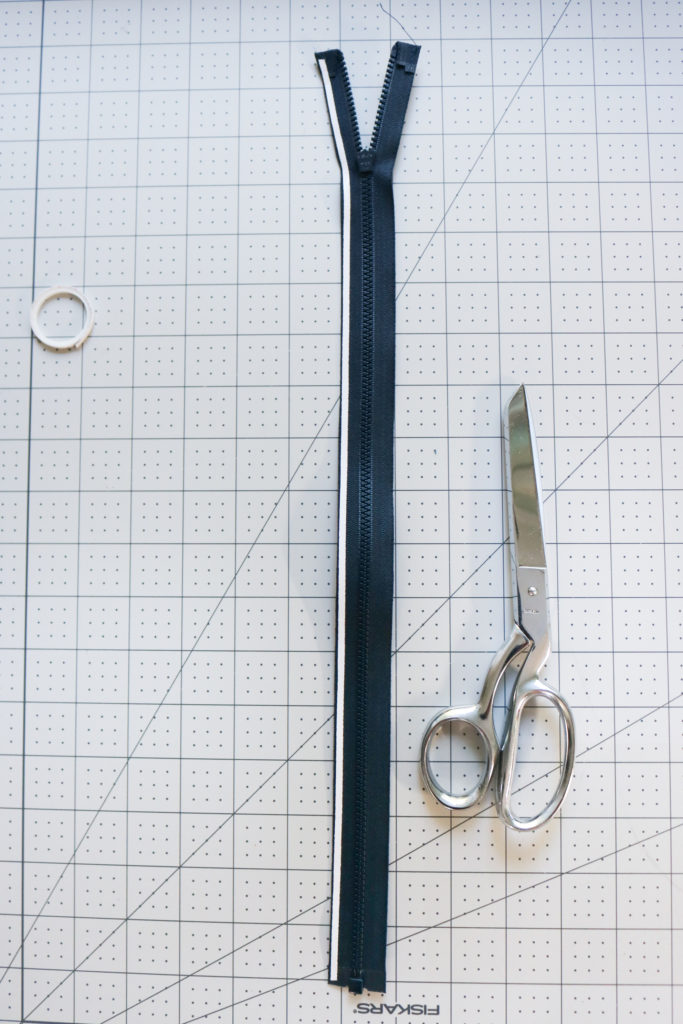
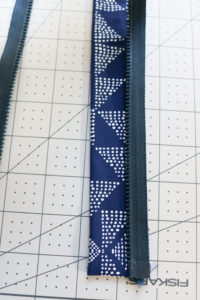
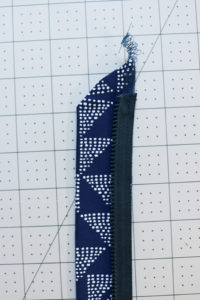
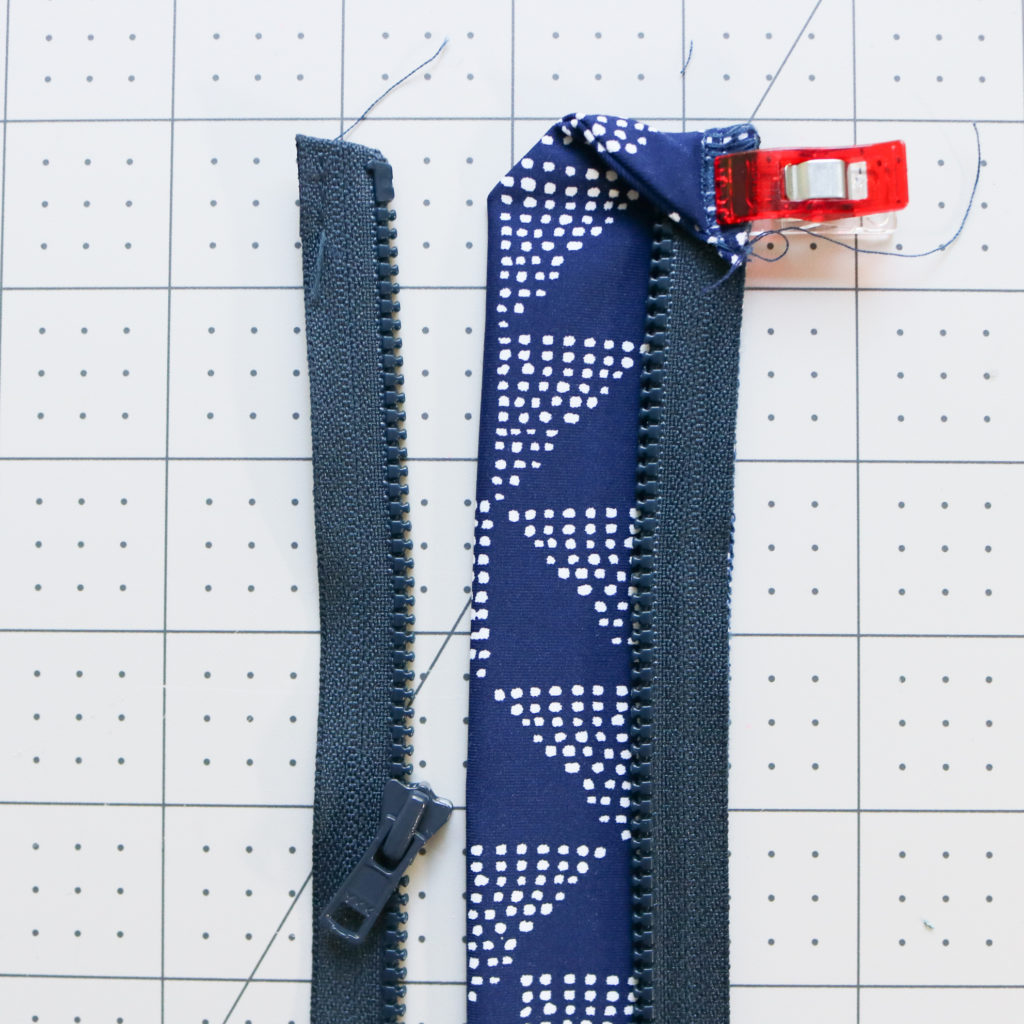
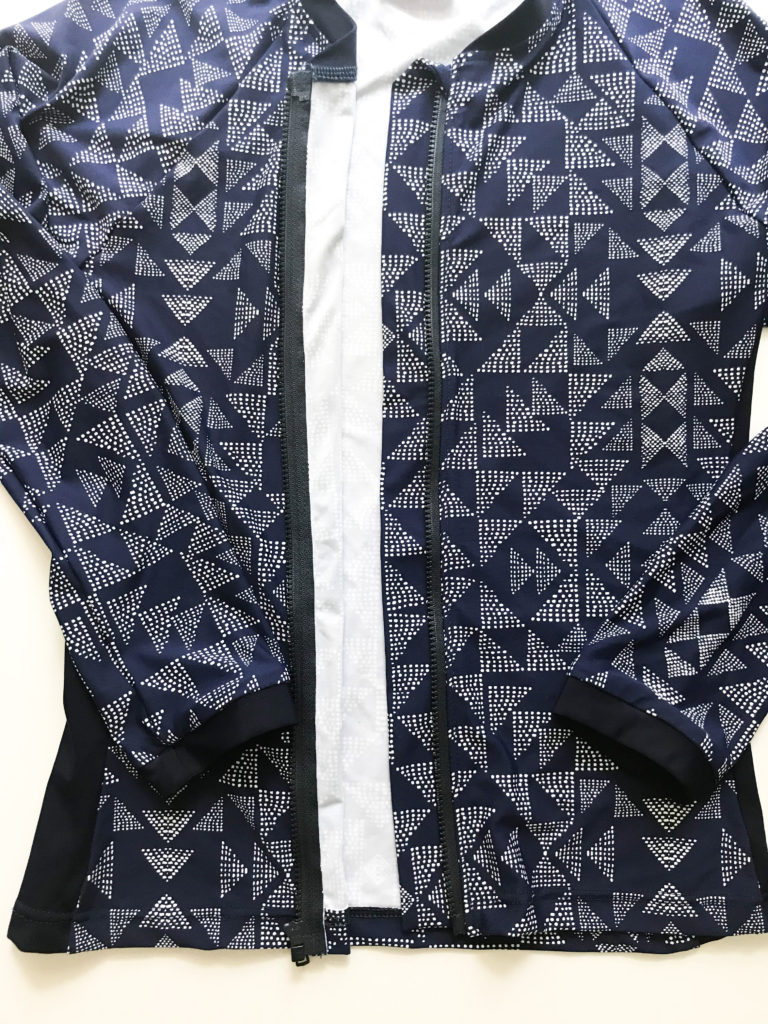
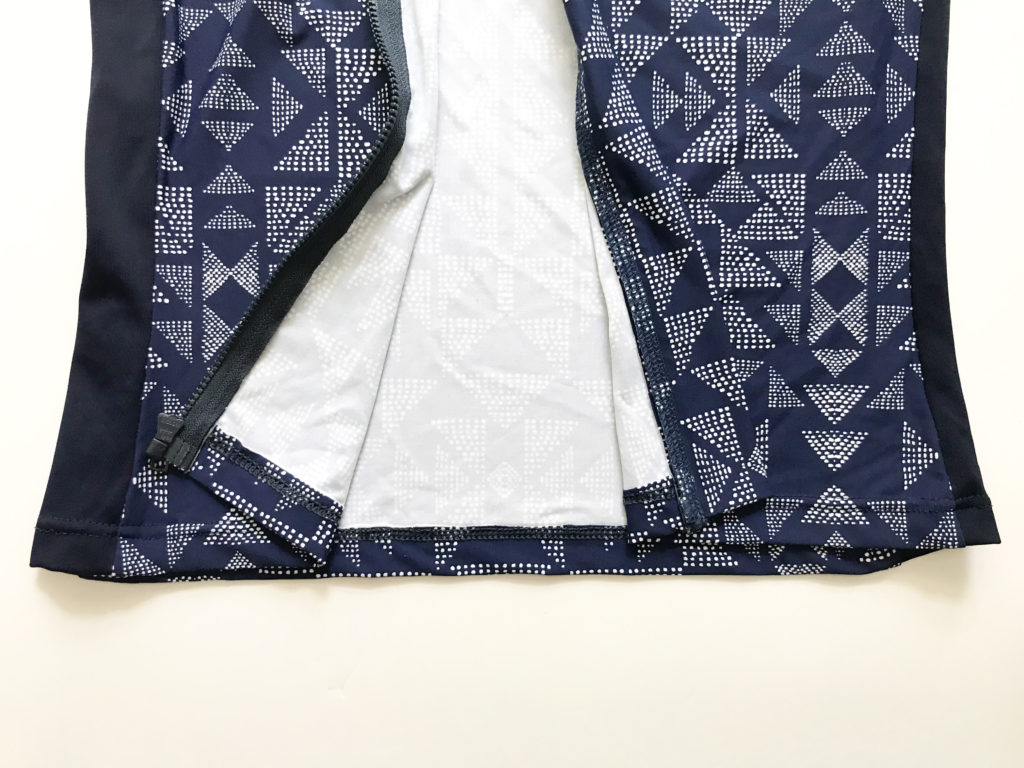
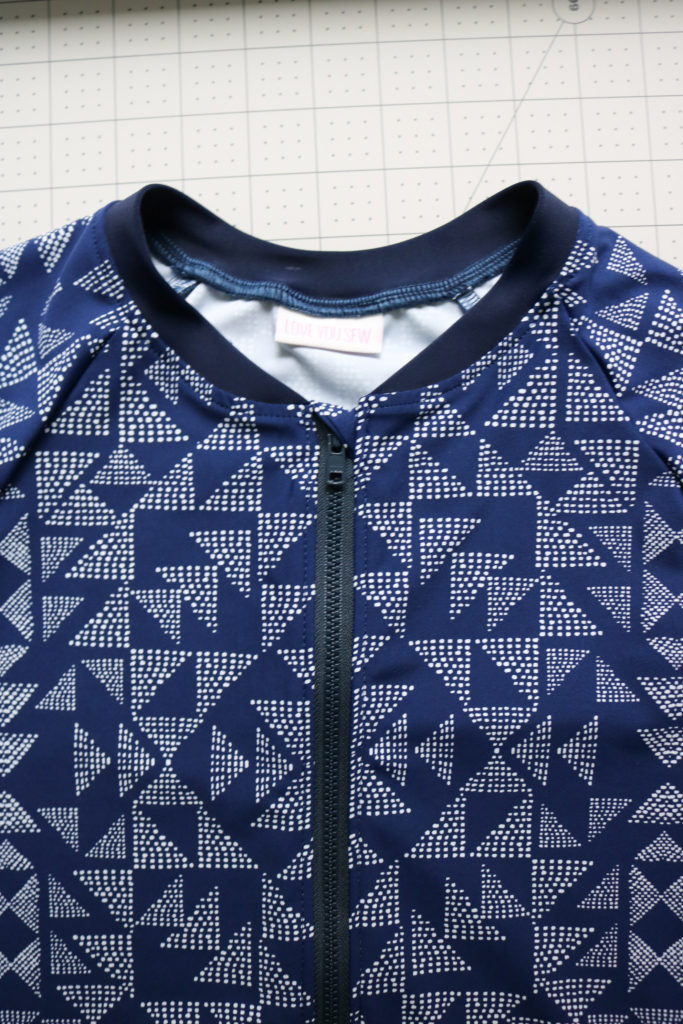
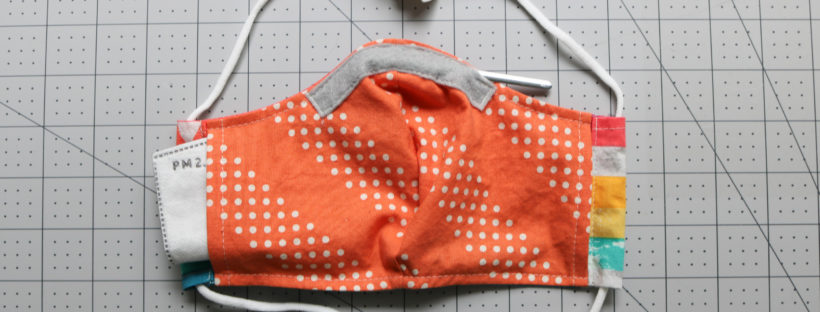
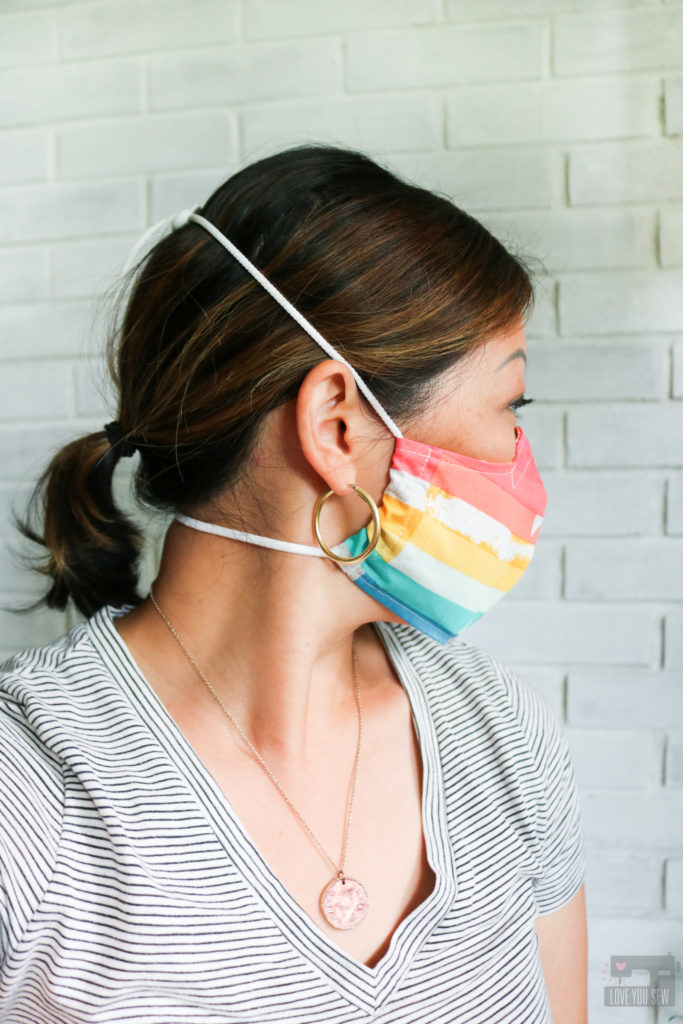
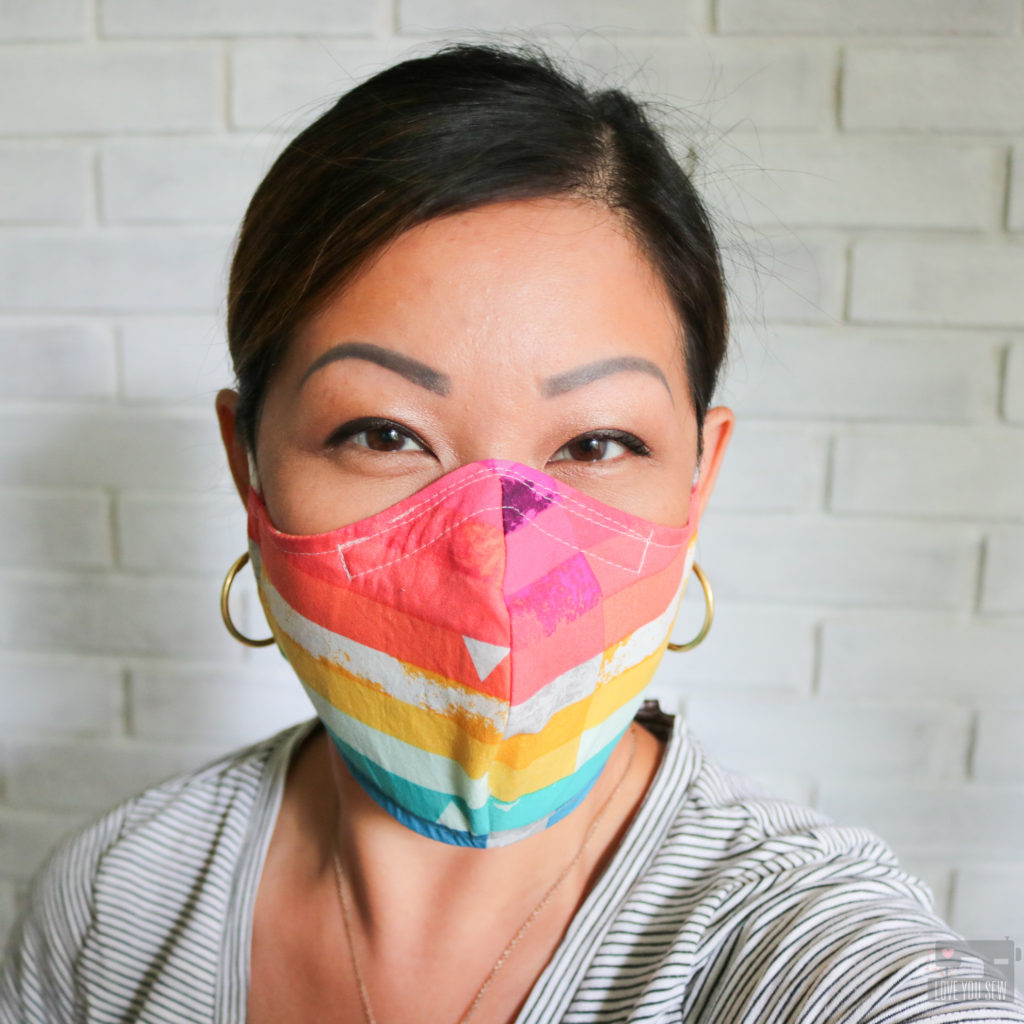
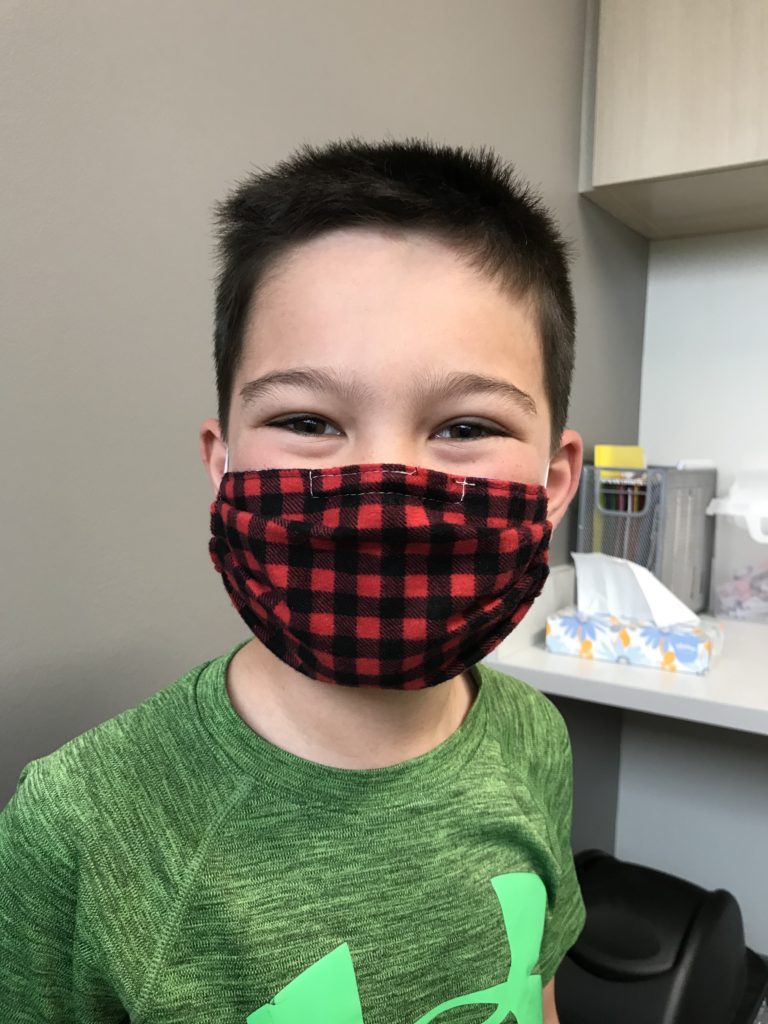
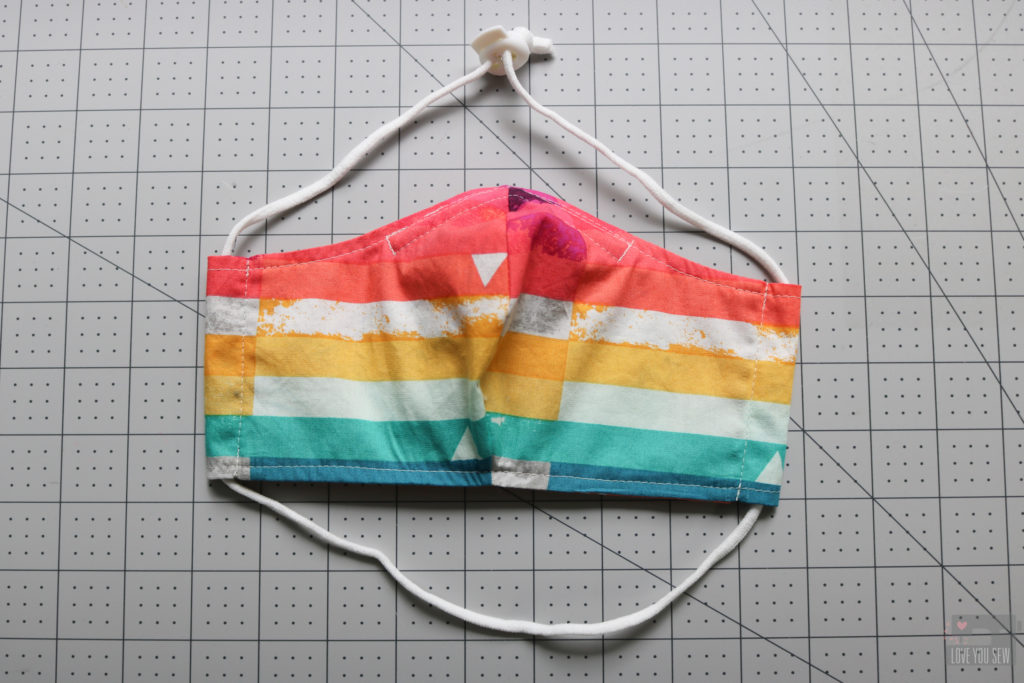
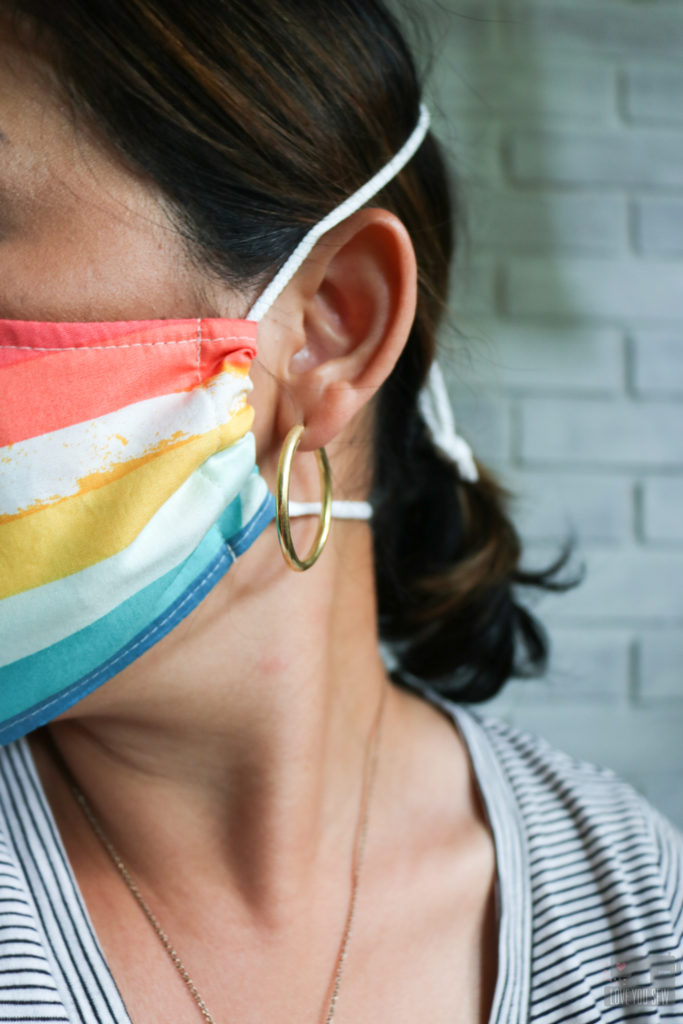
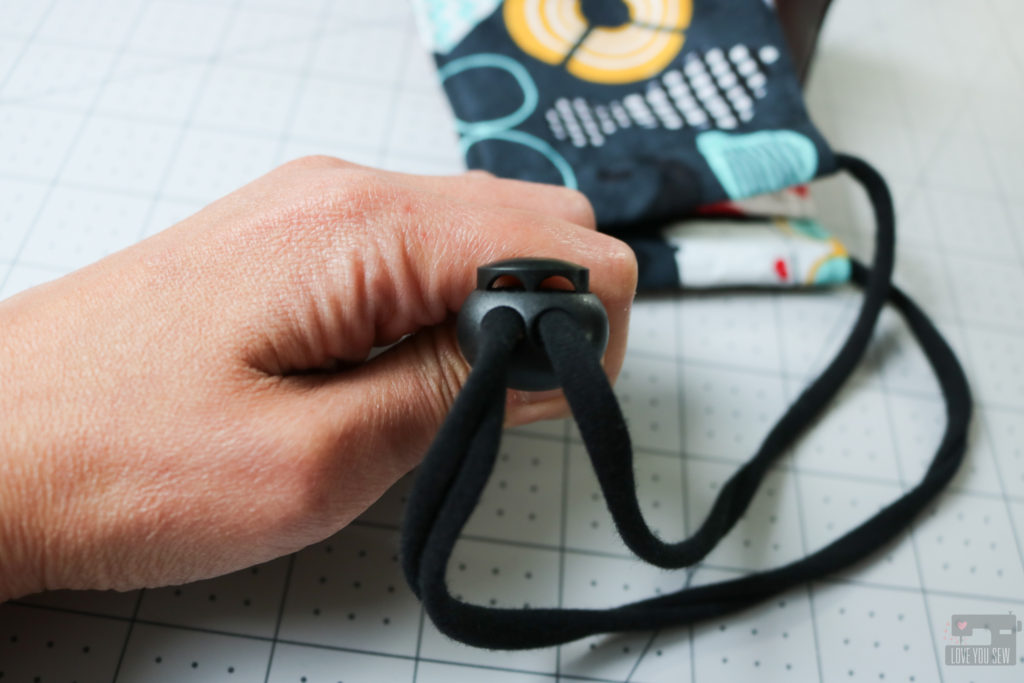
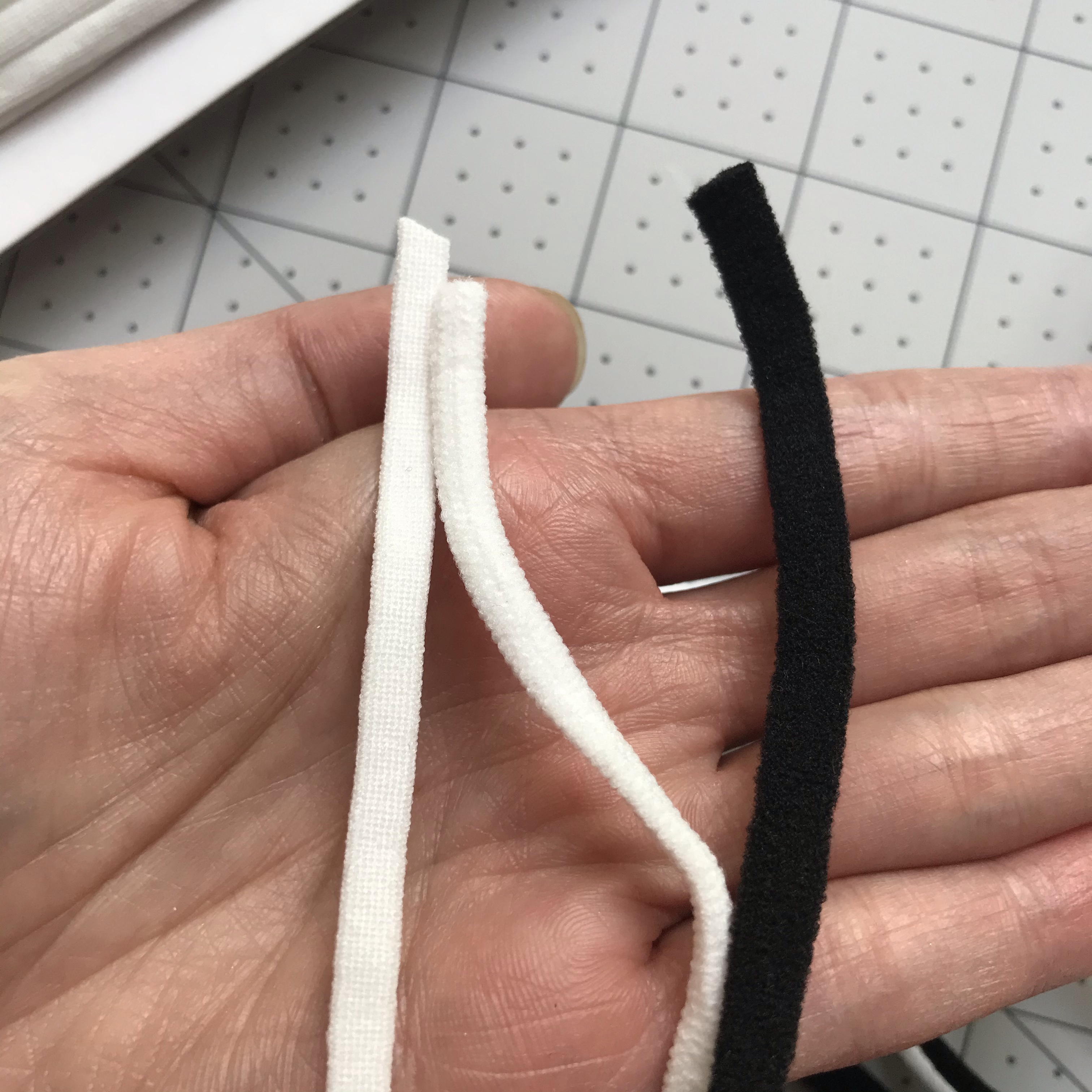
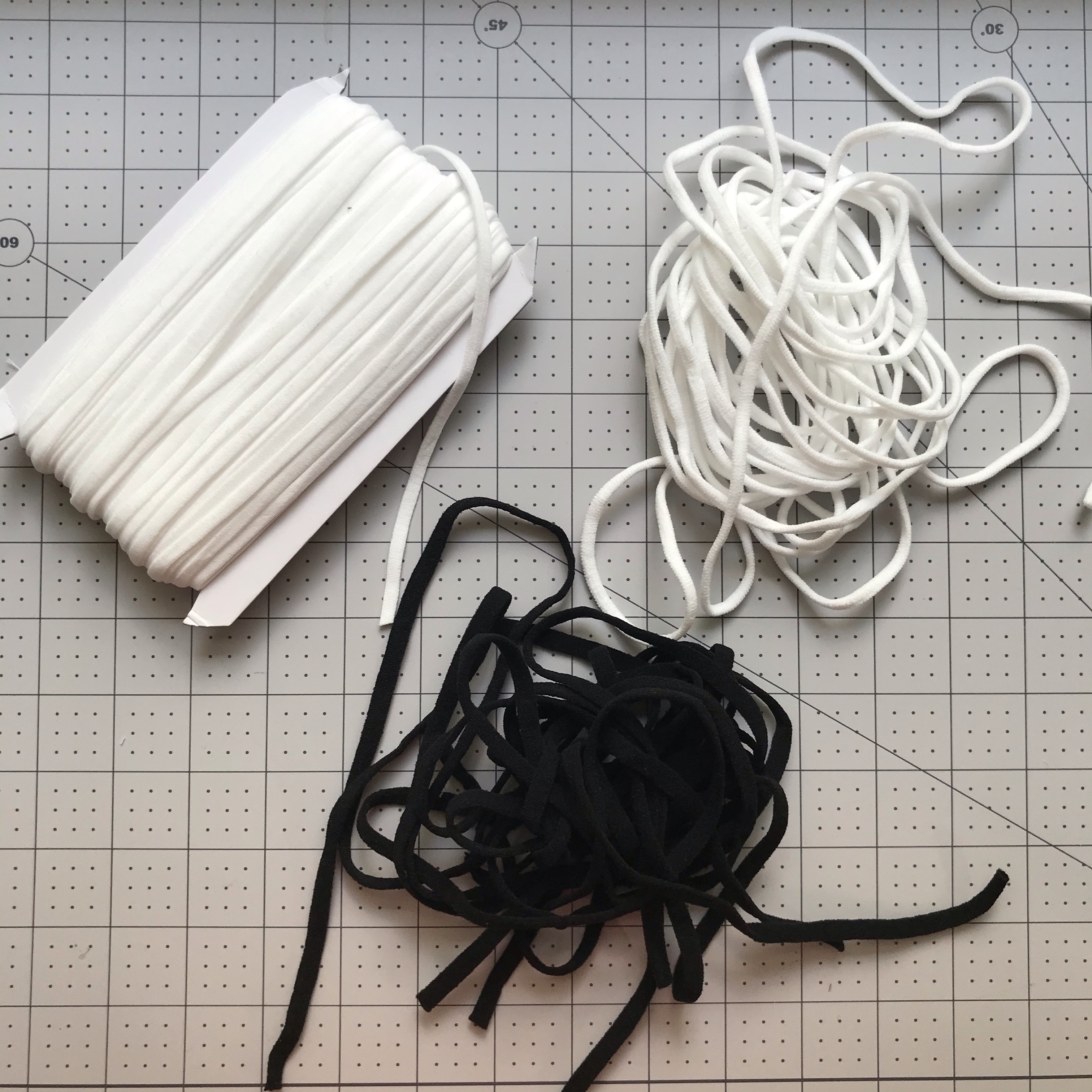
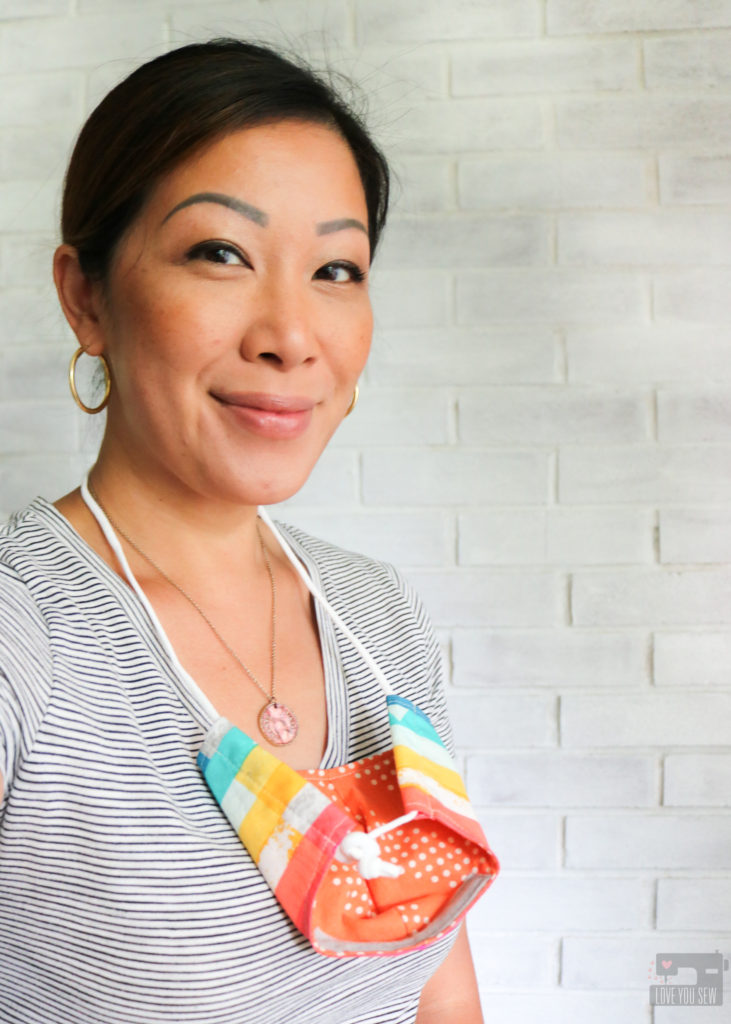
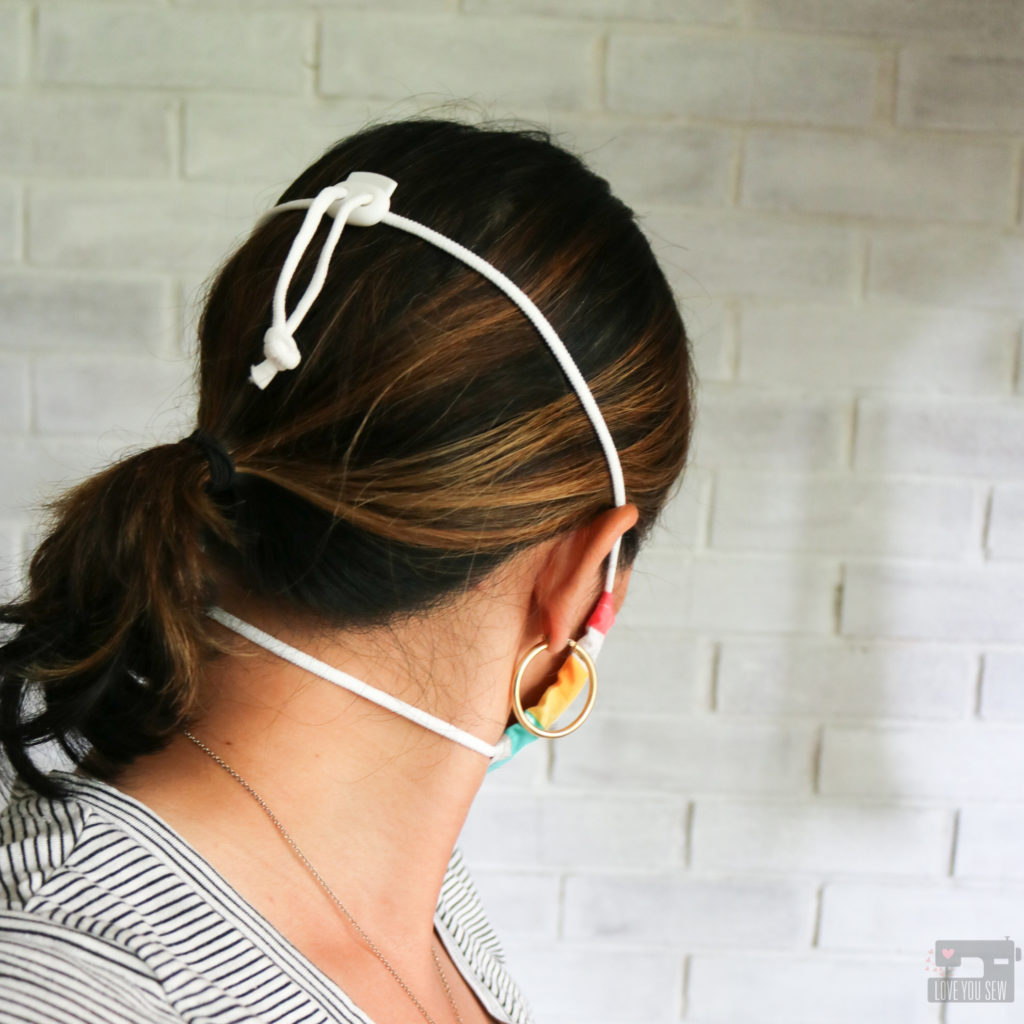
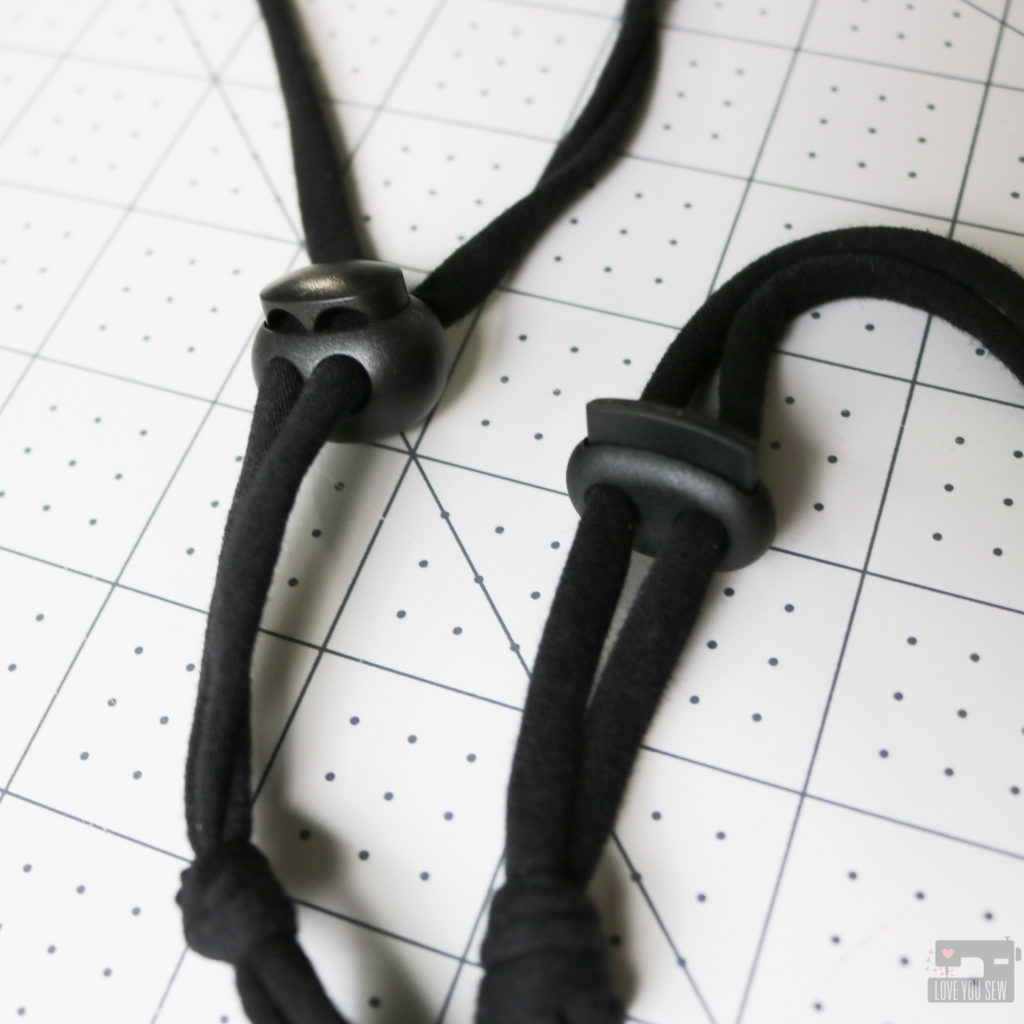
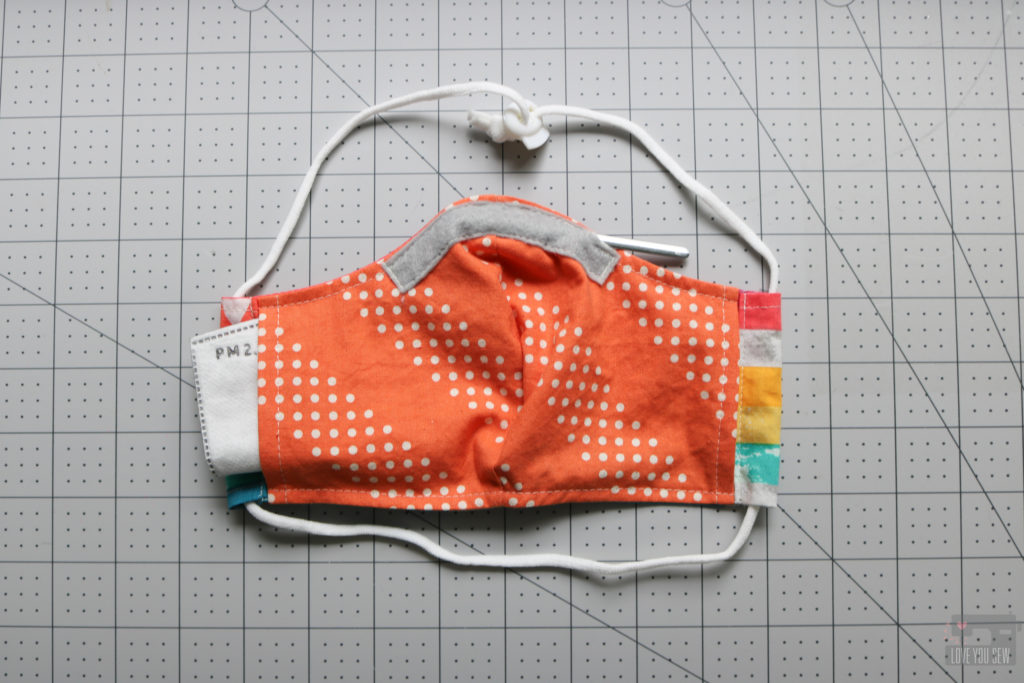
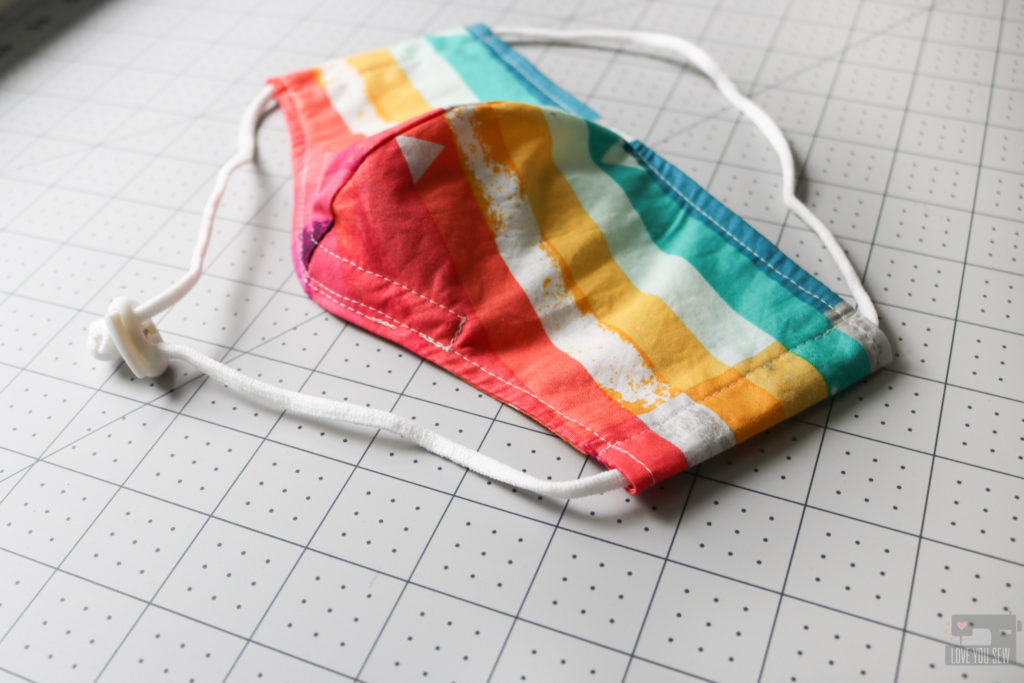
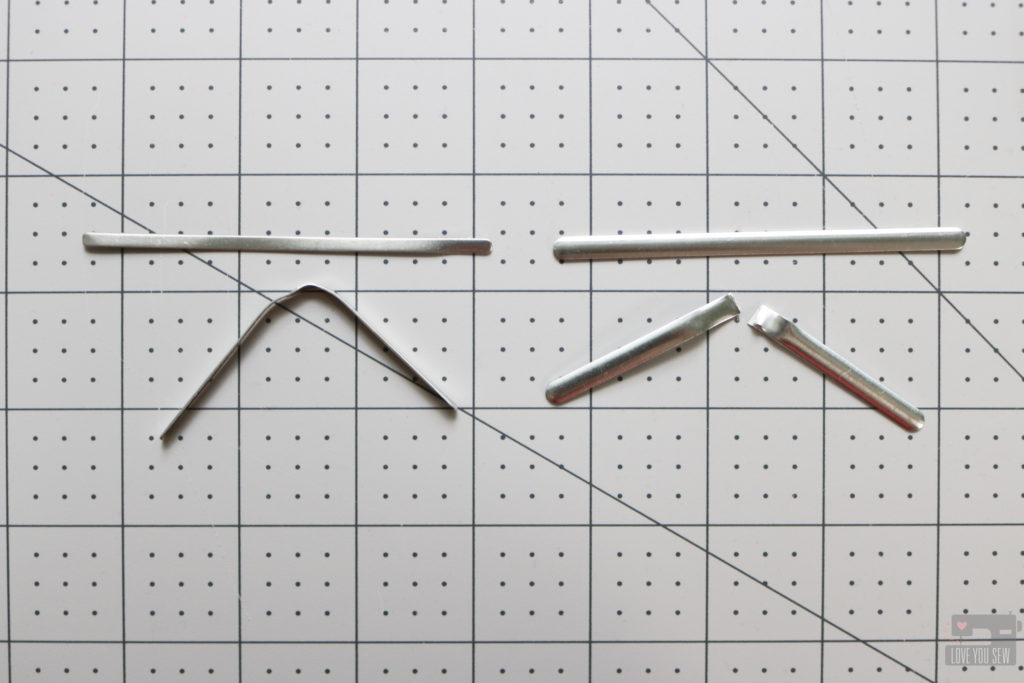
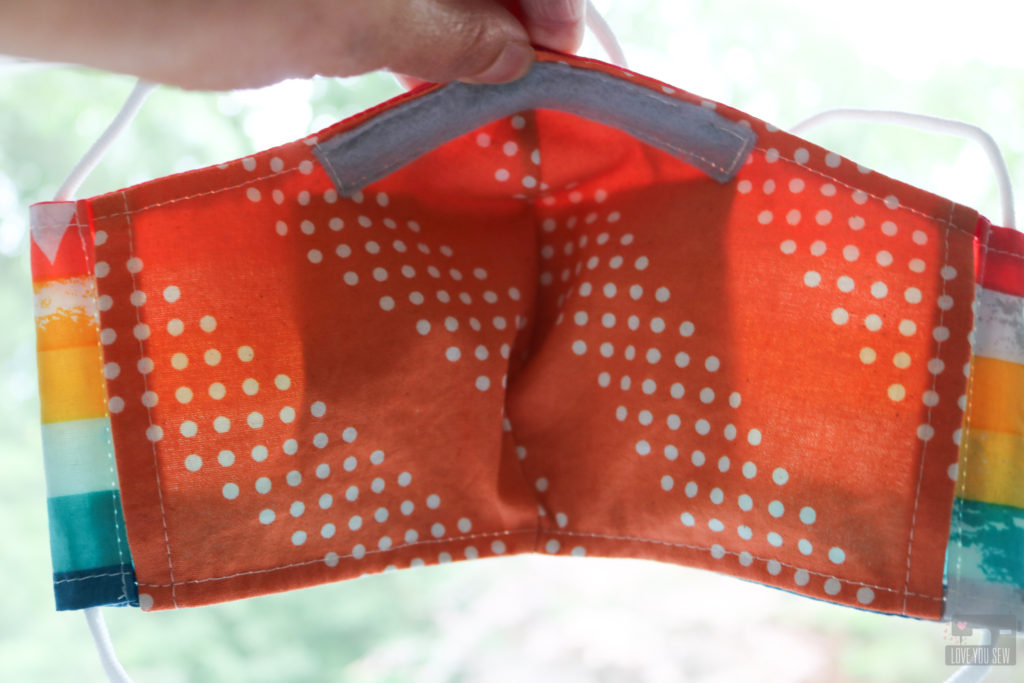
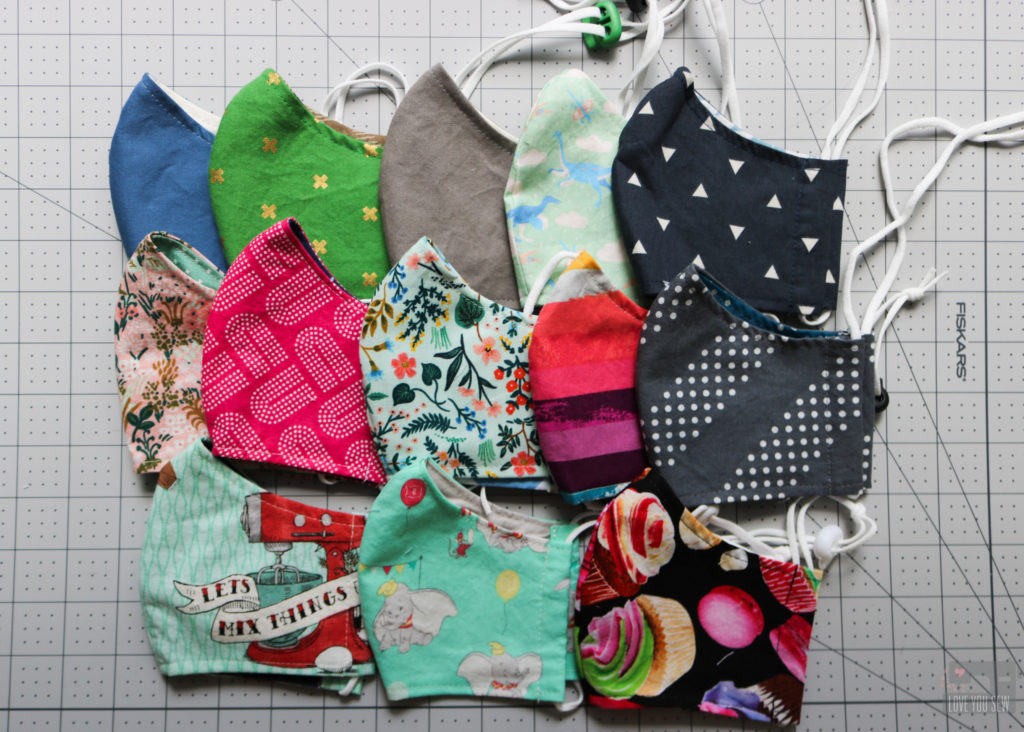
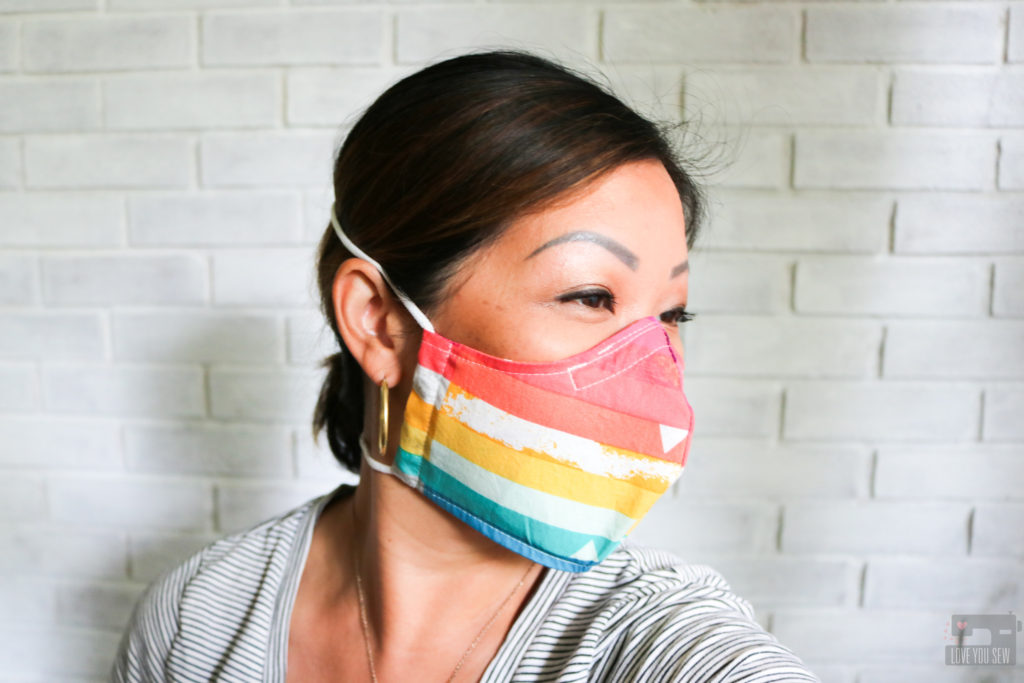
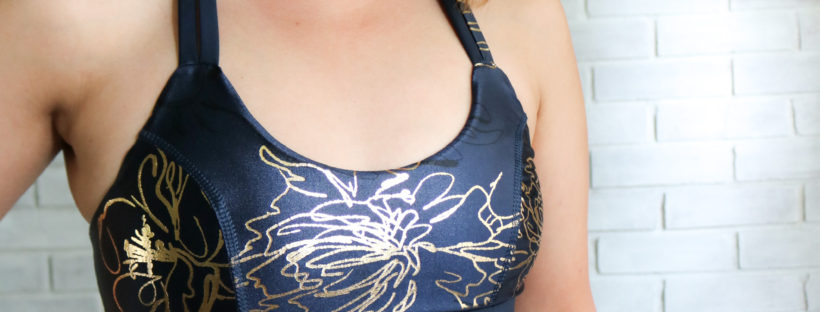
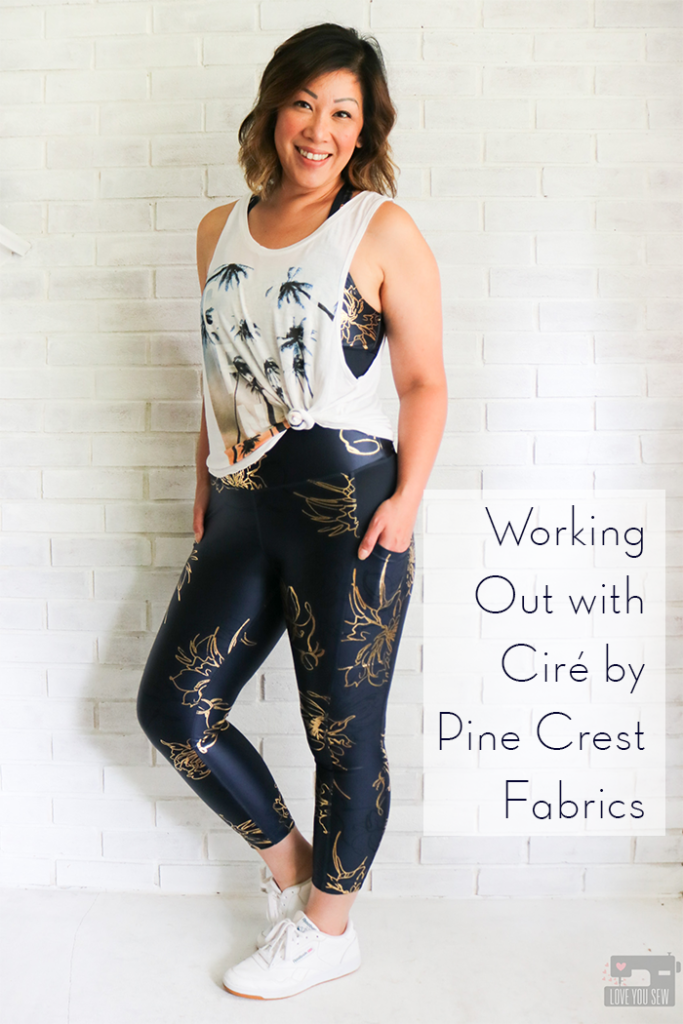
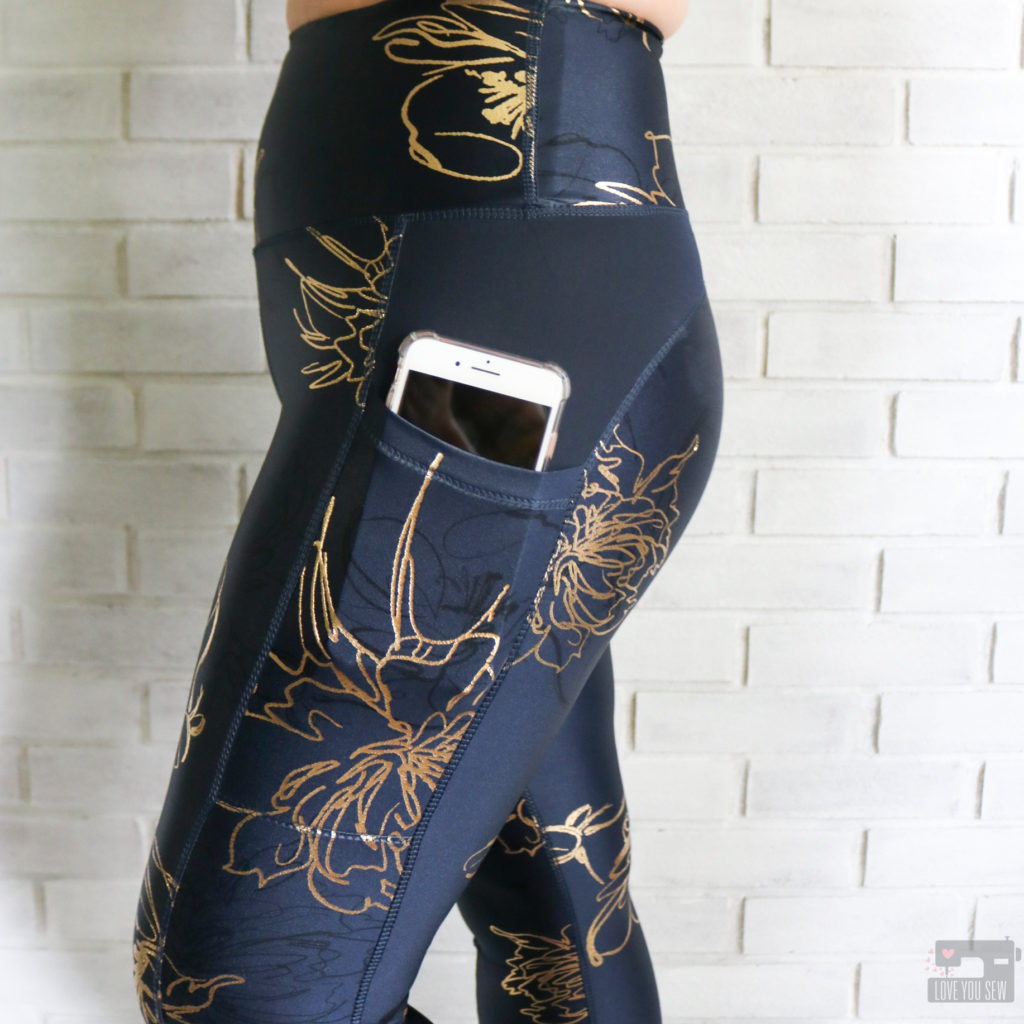
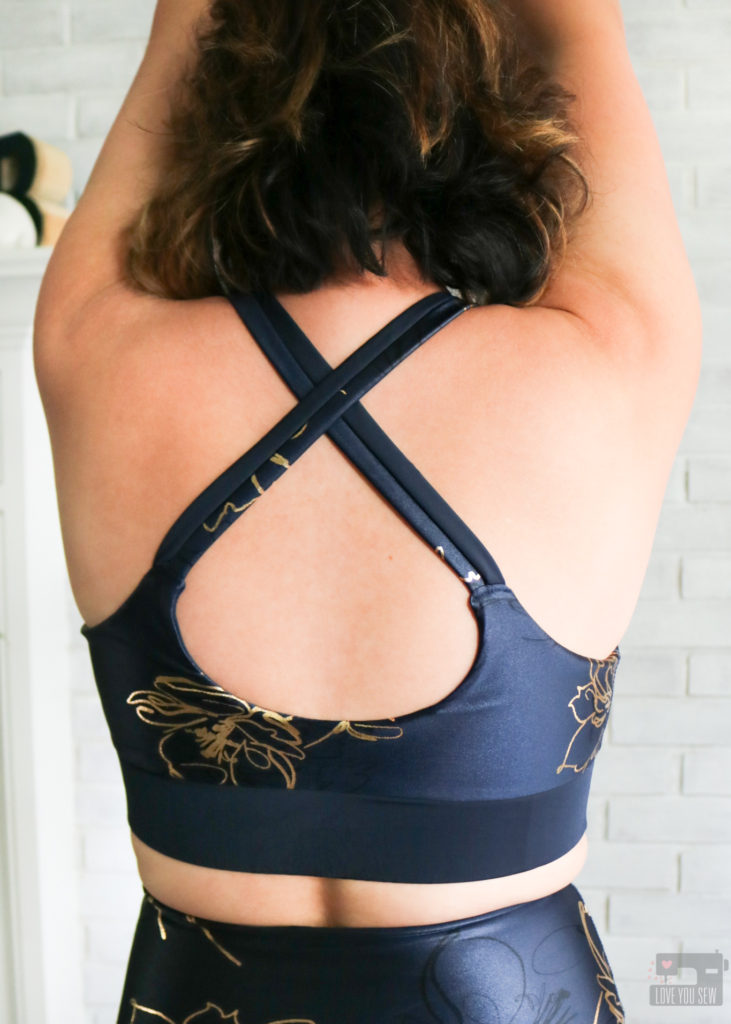
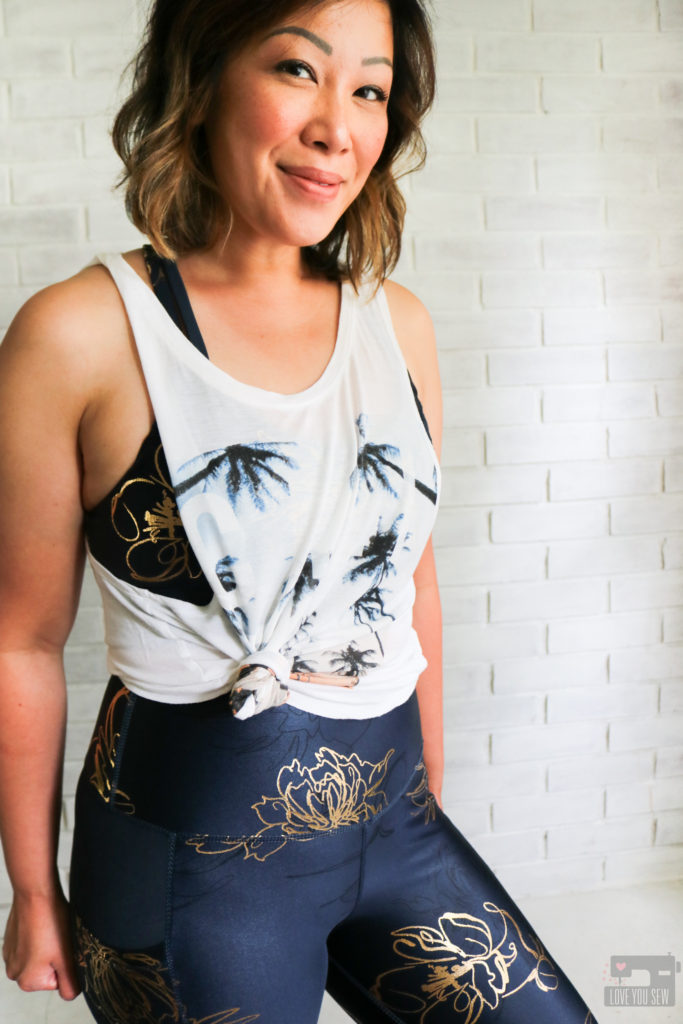
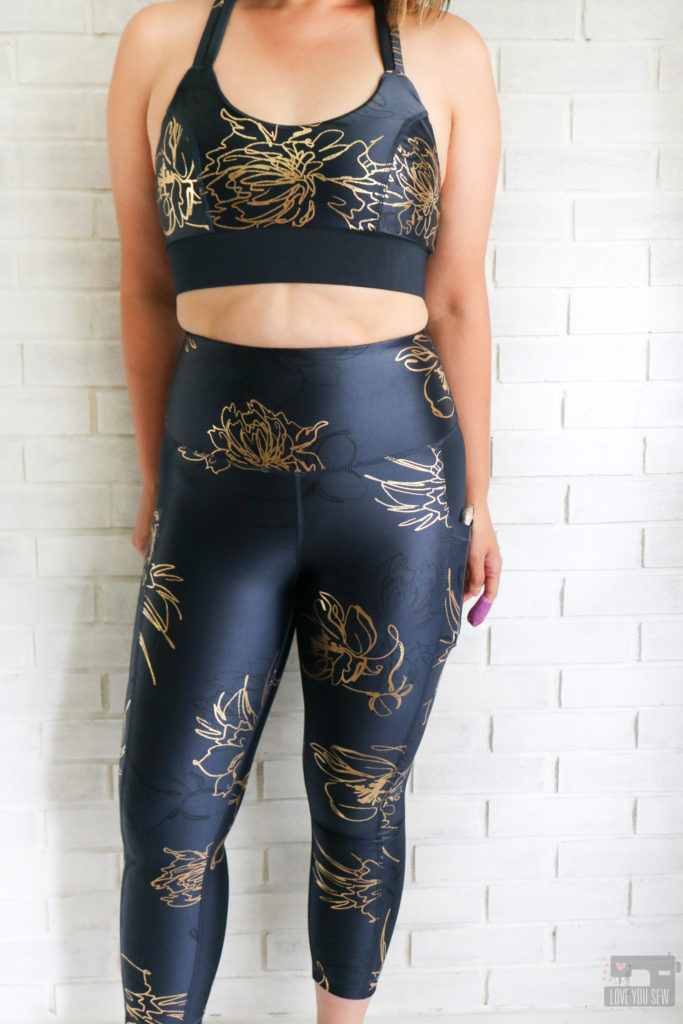
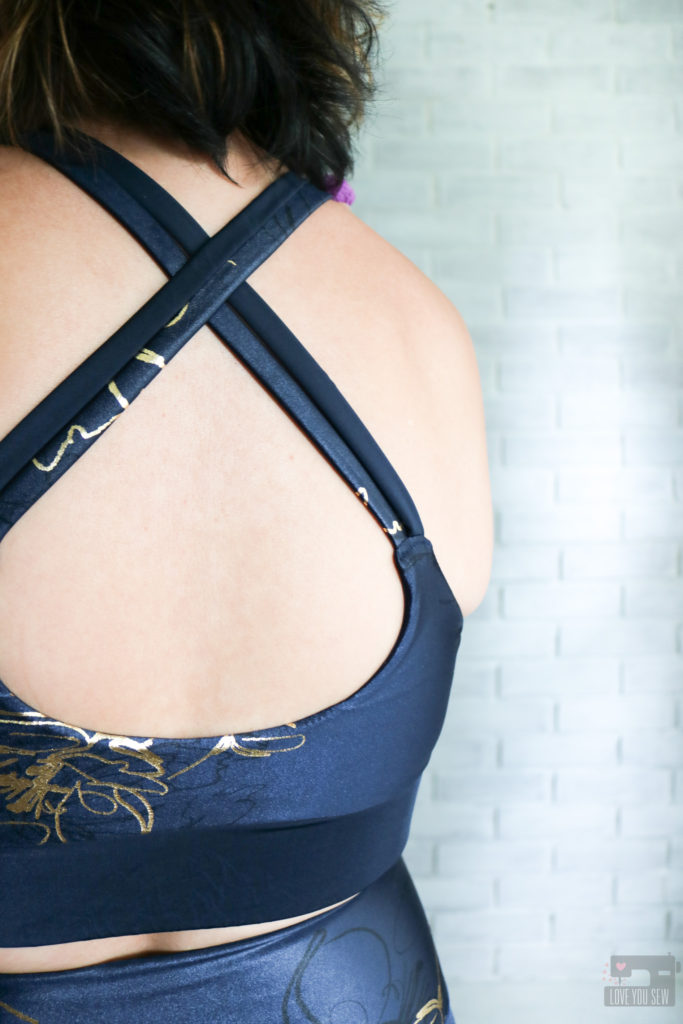
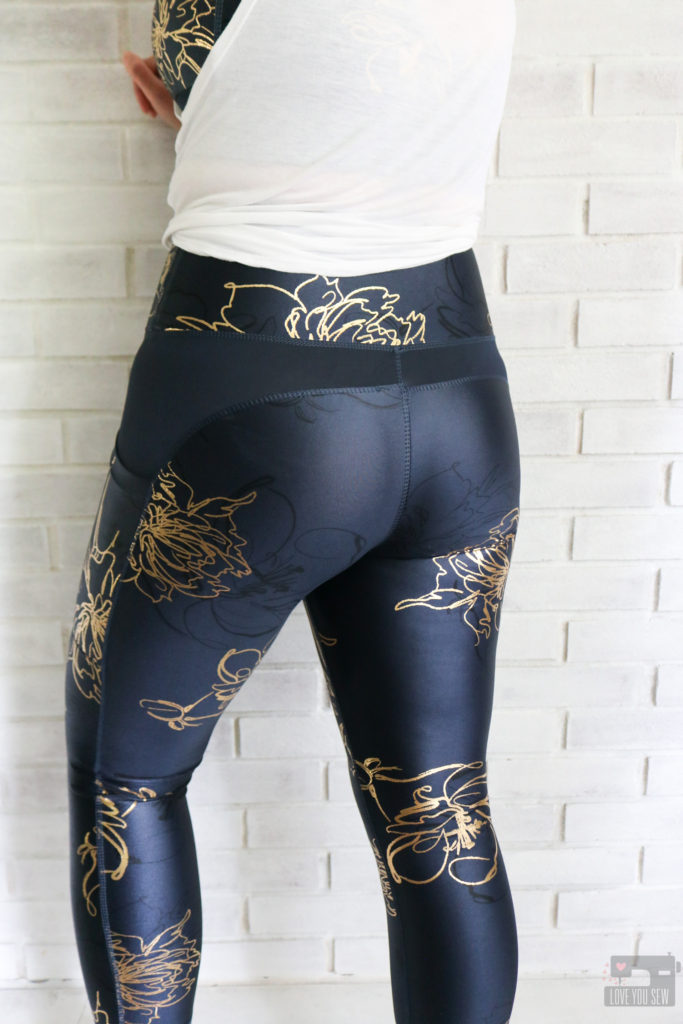
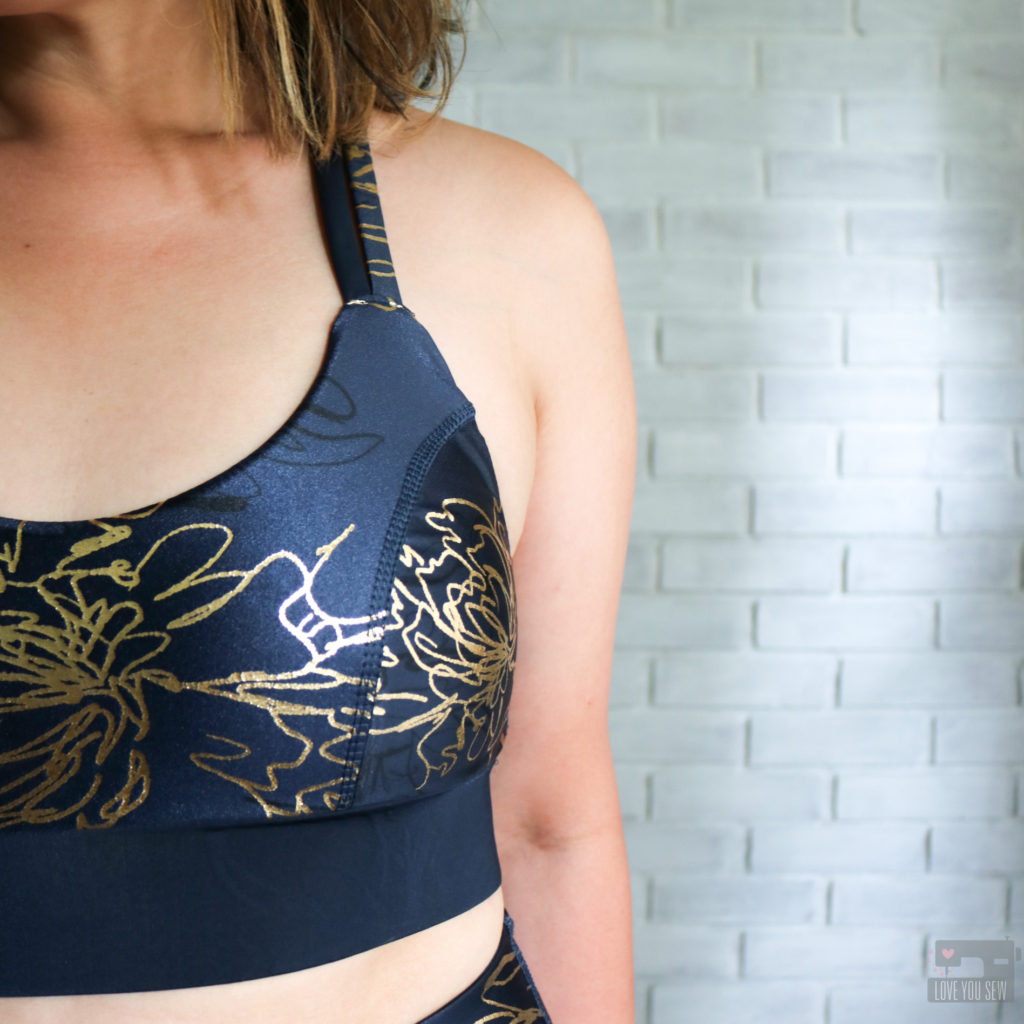
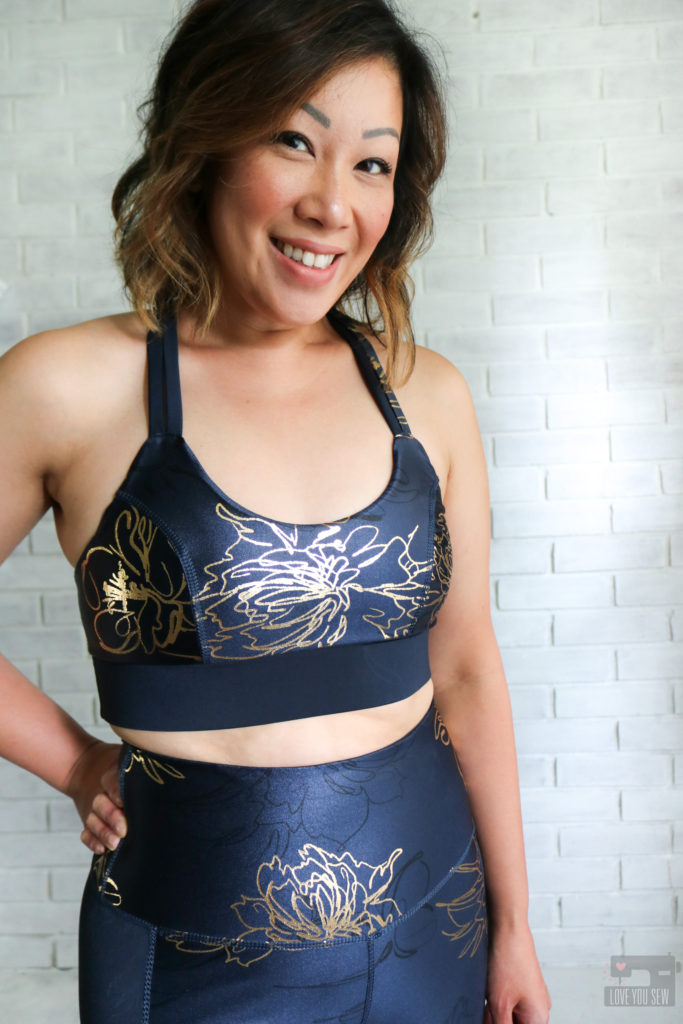
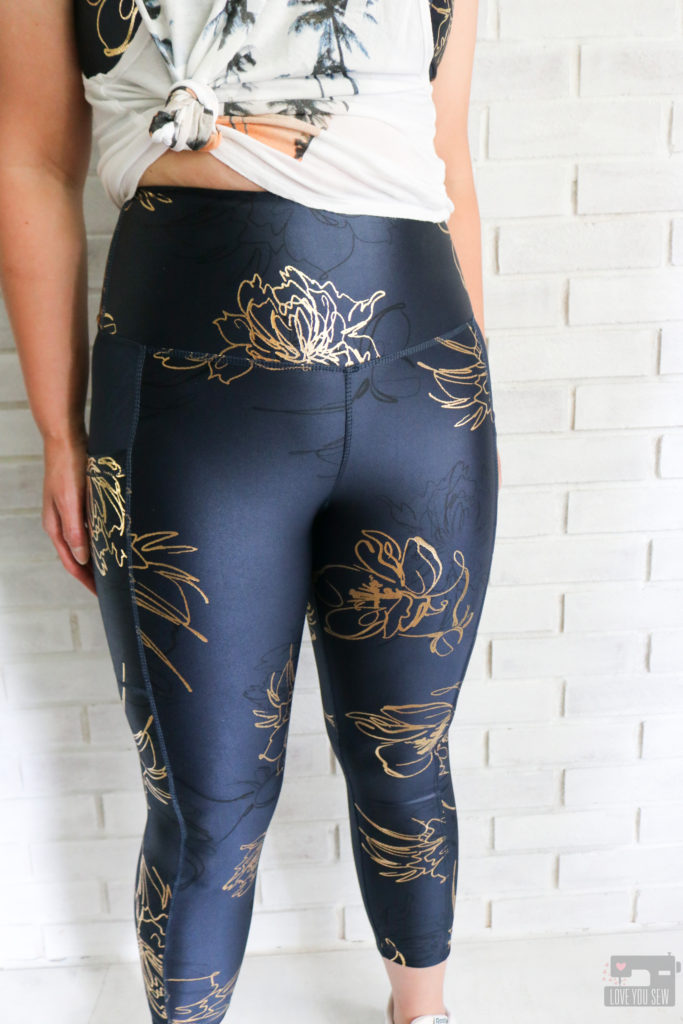
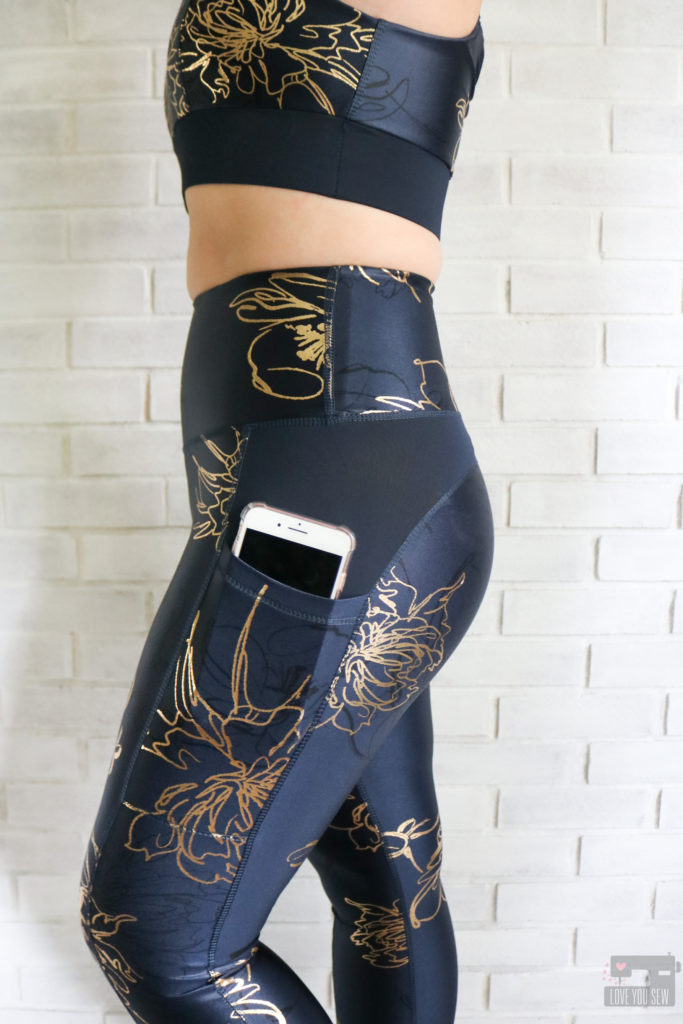
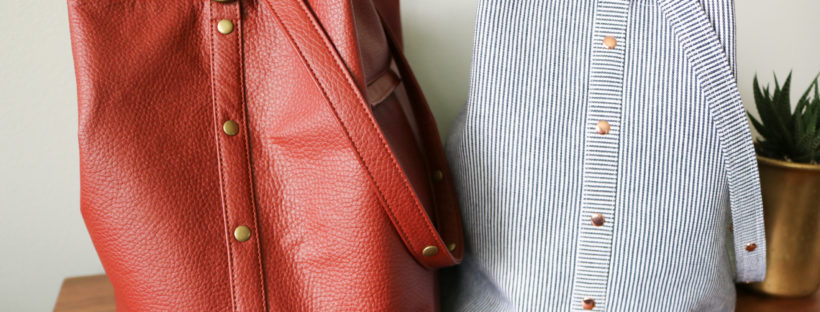
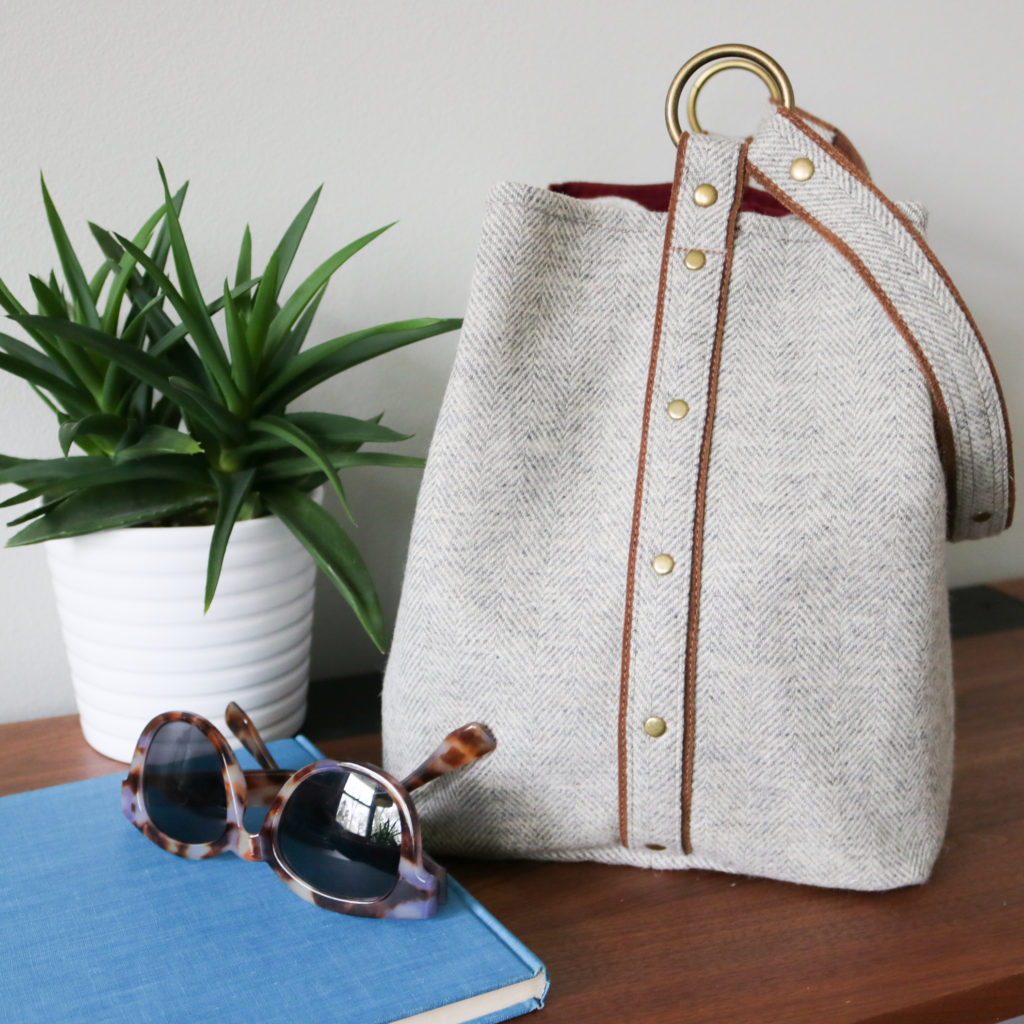 This bag is named after another one of my sweet nieces, Megan. Every time I would see her, she always carried around a large purse and I knew a generously sized bucket bag would HAVE to be her’s! She was always an avid reader and so this bag can carry around a small library if needed. Megan loves theater and has SUCH a beautiful voice. It only made sense to have plenty of mix and match bag options for whatever “role” would come next. Like my dear Megan, this bag is practical yet has just enough edge to stand out from the crowd.
This bag is named after another one of my sweet nieces, Megan. Every time I would see her, she always carried around a large purse and I knew a generously sized bucket bag would HAVE to be her’s! She was always an avid reader and so this bag can carry around a small library if needed. Megan loves theater and has SUCH a beautiful voice. It only made sense to have plenty of mix and match bag options for whatever “role” would come next. Like my dear Megan, this bag is practical yet has just enough edge to stand out from the crowd.
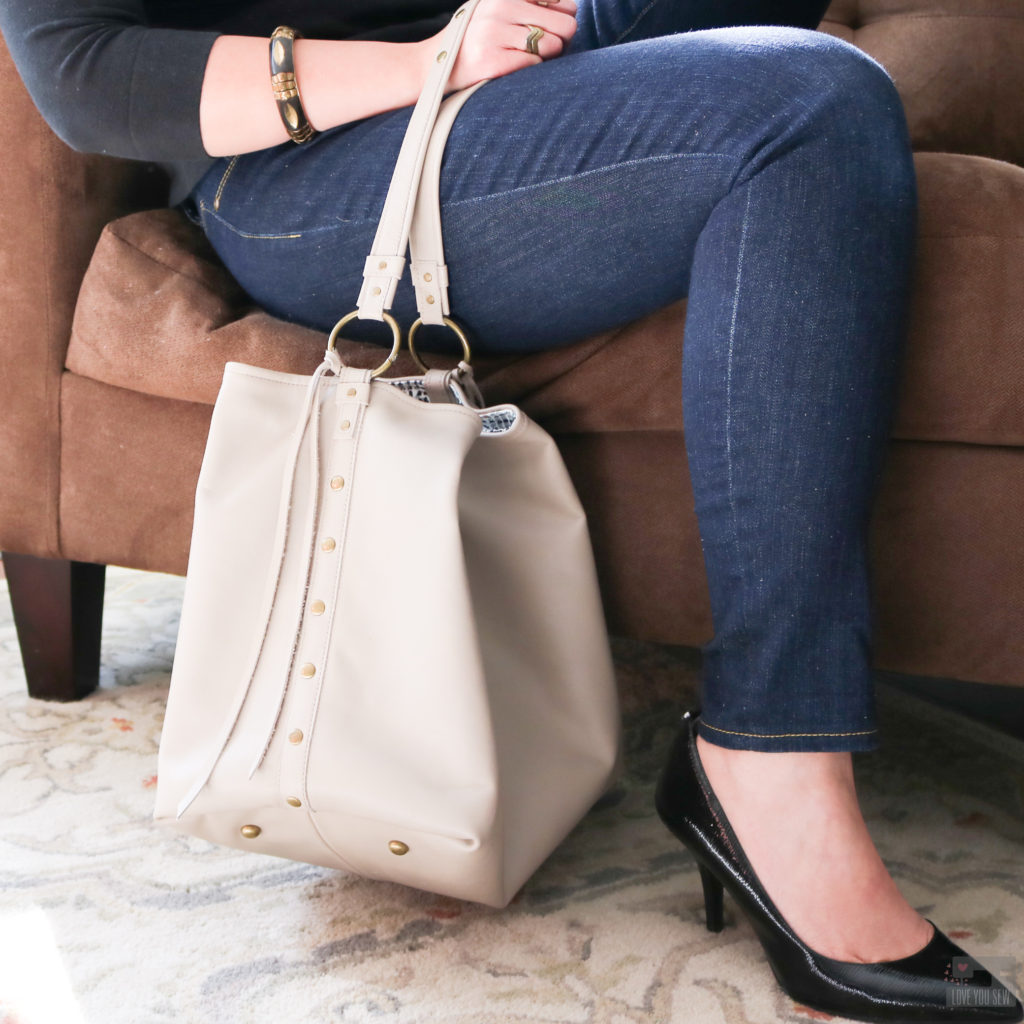 I’ve made nine different versions of the Megan Bucket Bag, starting with the OG, made with buttery taupe cowhide, which you can read about
I’ve made nine different versions of the Megan Bucket Bag, starting with the OG, made with buttery taupe cowhide, which you can read about 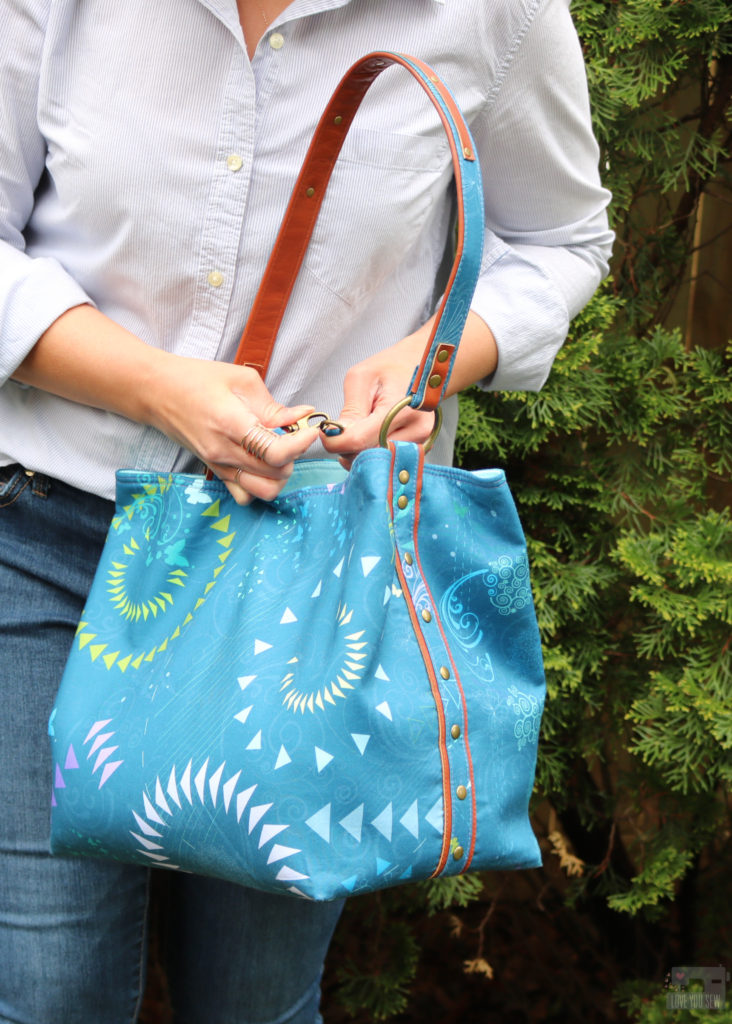 This was another prototype version you can check out here. This was my first fabric version I made while, of course, holding onto the leather details. I still love that extra thin piece of leather on top of the strap….I’ll have to remember that for my next Megan bag!
This was another prototype version you can check out here. This was my first fabric version I made while, of course, holding onto the leather details. I still love that extra thin piece of leather on top of the strap….I’ll have to remember that for my next Megan bag!
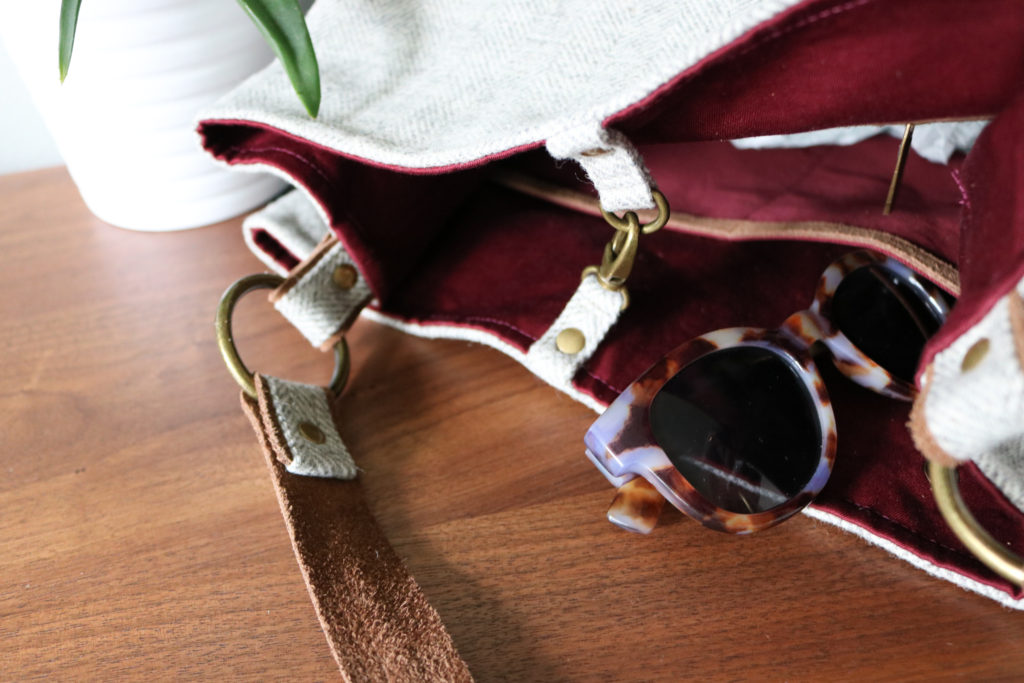 After teaching many bag classes and workshops, I know that many students want to make professional looking bags, but don’t necessarily have all the right equipment – including a heavy duty sewing machine. So my goal with the construction, was to use some alternative techniques to take the bulk out of bag-making. This helps to think outside the box so you can make bags with a wider array of equipment…not just industrial grade machines.
After teaching many bag classes and workshops, I know that many students want to make professional looking bags, but don’t necessarily have all the right equipment – including a heavy duty sewing machine. So my goal with the construction, was to use some alternative techniques to take the bulk out of bag-making. This helps to think outside the box so you can make bags with a wider array of equipment…not just industrial grade machines.
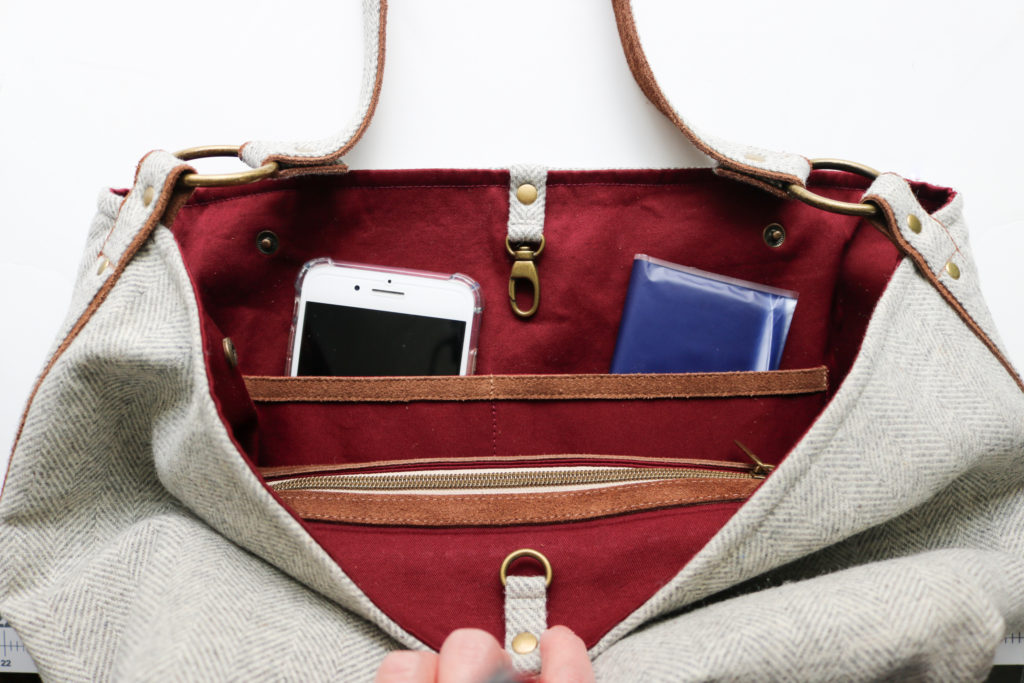 “The Megan Bucket Bag is a fresh take on the classic slouchy bag silhouette, but with a more pronounced cube shape. The lines are clean with side seams hidden by overlays and rivets. There are two different views whether you want to make the Megan out of one fabric, or if you would like to use a raw-edge accent fabric to add a little more depth to the look. With this pattern, you will learn different strap making techniques to take the bulk out of your fabric and gain ways to present a welt zipper pocket with plates or a cover. You will also learn an off-set bag technique for the overlays that won’t compromise your side seam stitching. There are plenty of options with snaps and the use of accent fabric for you to mix and match for your perfect bag.”
This is a pattern for you to learn:
“The Megan Bucket Bag is a fresh take on the classic slouchy bag silhouette, but with a more pronounced cube shape. The lines are clean with side seams hidden by overlays and rivets. There are two different views whether you want to make the Megan out of one fabric, or if you would like to use a raw-edge accent fabric to add a little more depth to the look. With this pattern, you will learn different strap making techniques to take the bulk out of your fabric and gain ways to present a welt zipper pocket with plates or a cover. You will also learn an off-set bag technique for the overlays that won’t compromise your side seam stitching. There are plenty of options with snaps and the use of accent fabric for you to mix and match for your perfect bag.”
This is a pattern for you to learn:
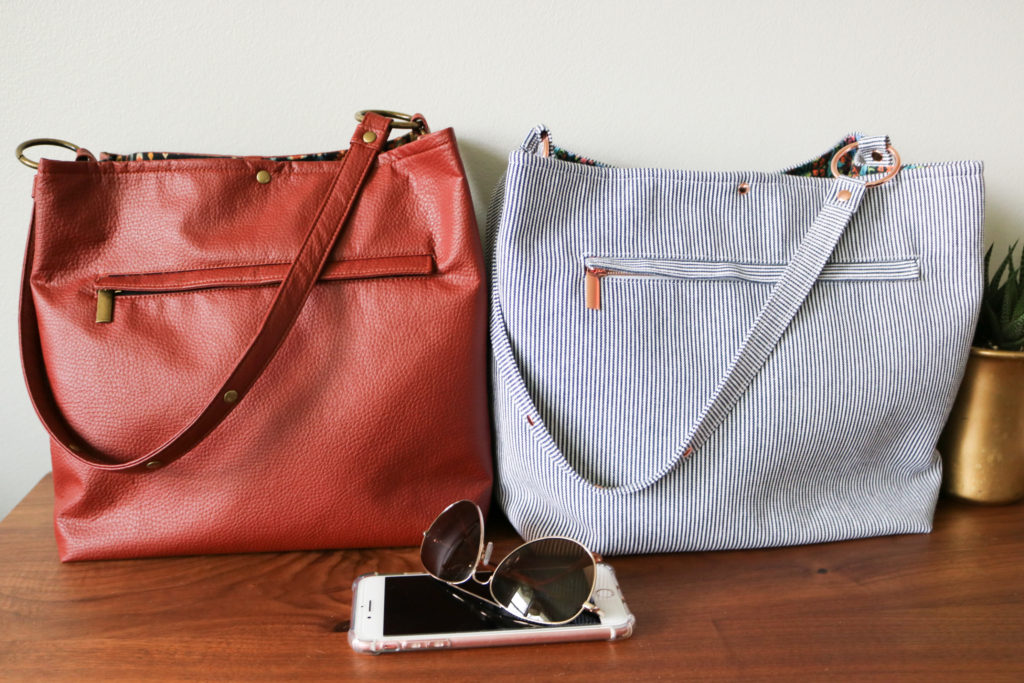 View A was designed for a single fabric and perfect for a newer bag-maker who wants to just use canvas. This is a great way to start and learn new purse techniques without having to deal with other substrates. However, this same version can be used with a single faux leather and still have a striking look. This view has a handy outside pocket with a cover to keep the look smooth and sleek but still has other details like the strap loops to add more interest.
View A was designed for a single fabric and perfect for a newer bag-maker who wants to just use canvas. This is a great way to start and learn new purse techniques without having to deal with other substrates. However, this same version can be used with a single faux leather and still have a striking look. This view has a handy outside pocket with a cover to keep the look smooth and sleek but still has other details like the strap loops to add more interest.
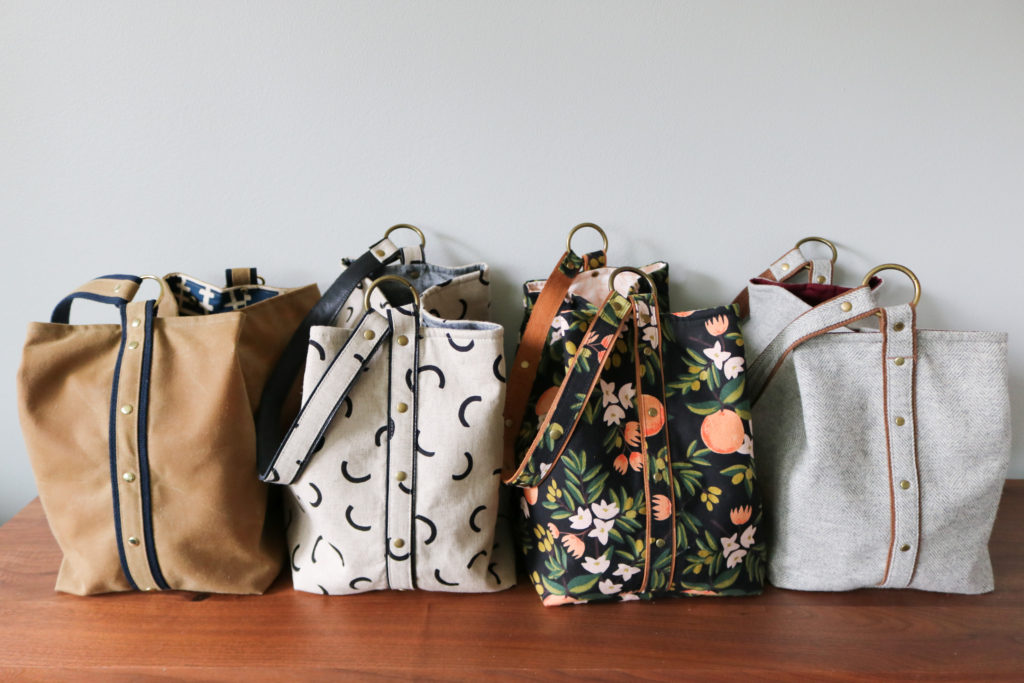 View B uses an accent fabric such as leather, suede, cork or vinyl that can be left raw edged without fraying. These substrates are great looks to add more depth and texture to a bag. The accent fabric is incorporated on to the side overlays, strap, and is used as decorative plating against the zipper pocket and slip pocket. However, you can also swap out the accent fabric with some webbing to speed up your project.
View B uses an accent fabric such as leather, suede, cork or vinyl that can be left raw edged without fraying. These substrates are great looks to add more depth and texture to a bag. The accent fabric is incorporated on to the side overlays, strap, and is used as decorative plating against the zipper pocket and slip pocket. However, you can also swap out the accent fabric with some webbing to speed up your project.
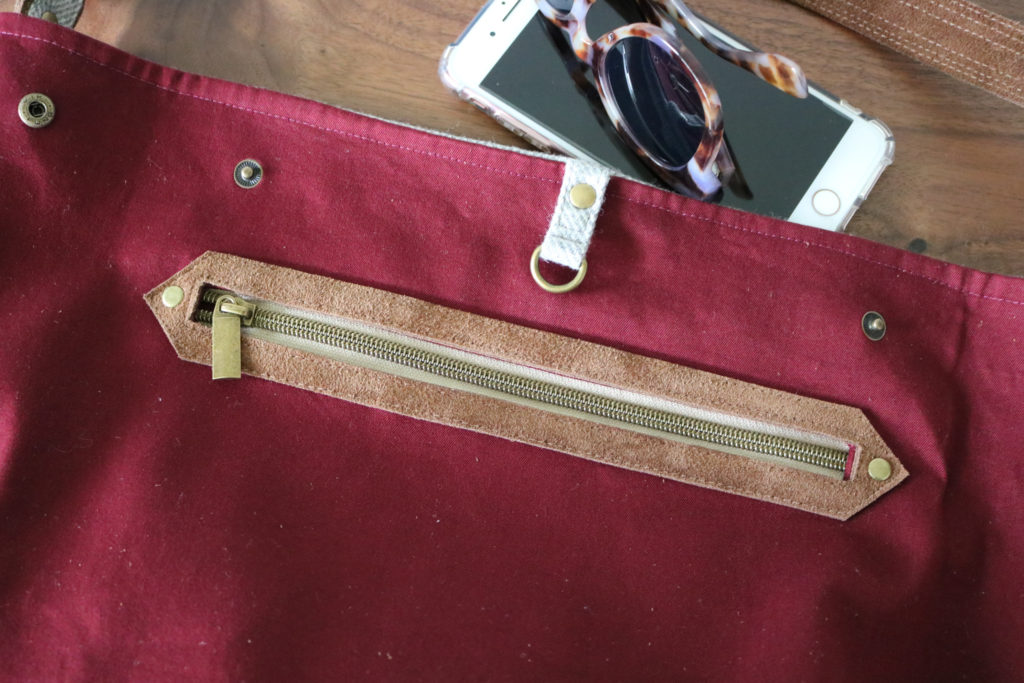 This pattern was written with mid-weight accent fabrics in mind with 2-3mm thickness to have enough structure in the strap. However, I know there are a number of other fabrics you may want to use that are lighter and thinner – especially many types of cork. Consider adding a second layer of accent fabric to the back of the strap as shown below. Play around and see what you like!
This pattern was written with mid-weight accent fabrics in mind with 2-3mm thickness to have enough structure in the strap. However, I know there are a number of other fabrics you may want to use that are lighter and thinner – especially many types of cork. Consider adding a second layer of accent fabric to the back of the strap as shown below. Play around and see what you like!
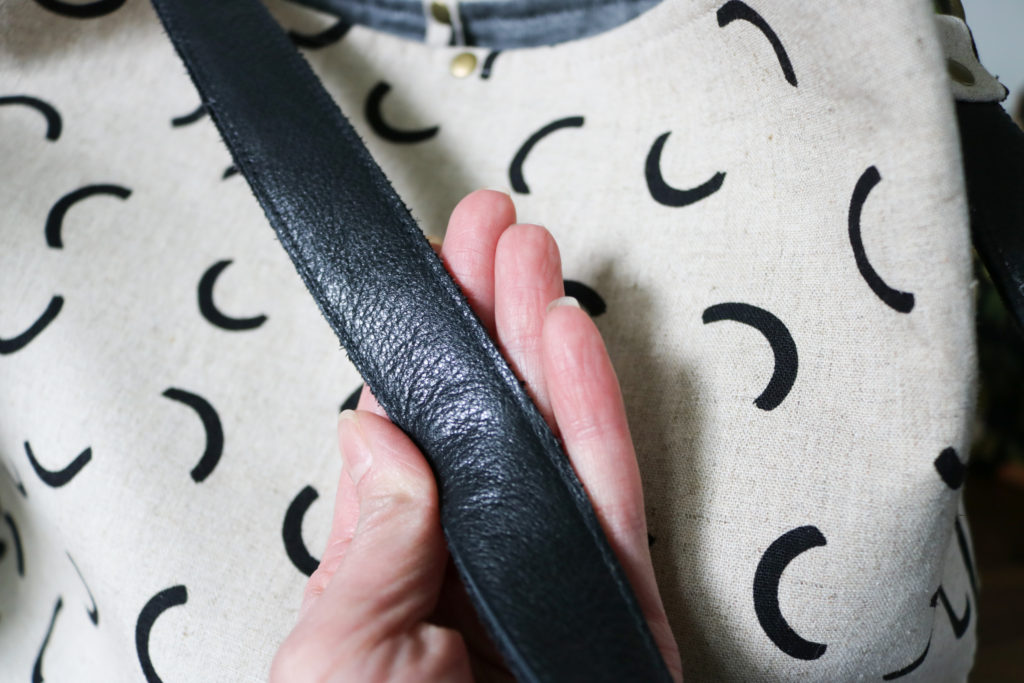
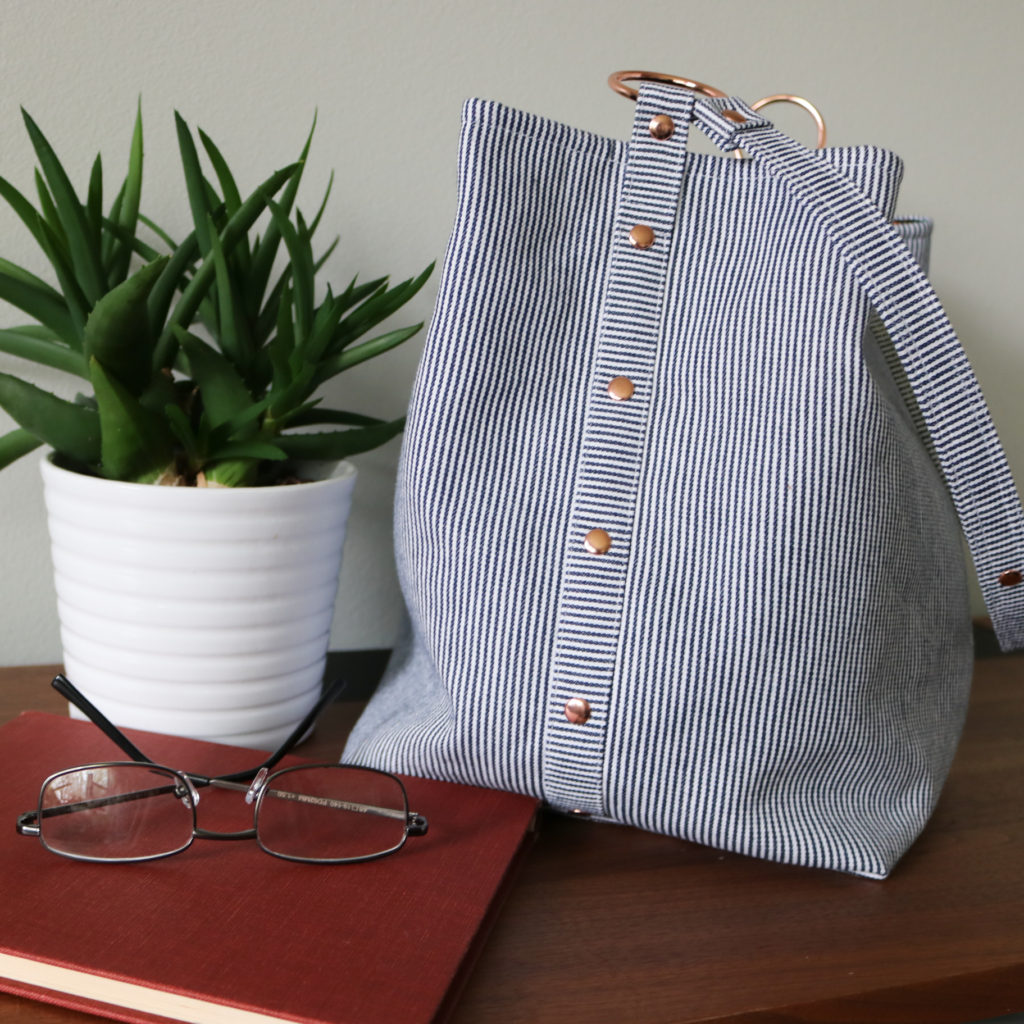 The main aesthetic element to the Megan Bucket Bag is the side overlay with a row of bright beautiful rivets. Although I’ve used rivets for a long time with my bags, they were only in the patterns as alternation options for securing straps and such. This time, the rivets are the featured stars and are not just for looks, but also for structural purposes. They help secure the strap in place around the gorgeous O-rings. This give such a strong, yet delicate look.
The main aesthetic element to the Megan Bucket Bag is the side overlay with a row of bright beautiful rivets. Although I’ve used rivets for a long time with my bags, they were only in the patterns as alternation options for securing straps and such. This time, the rivets are the featured stars and are not just for looks, but also for structural purposes. They help secure the strap in place around the gorgeous O-rings. This give such a strong, yet delicate look.
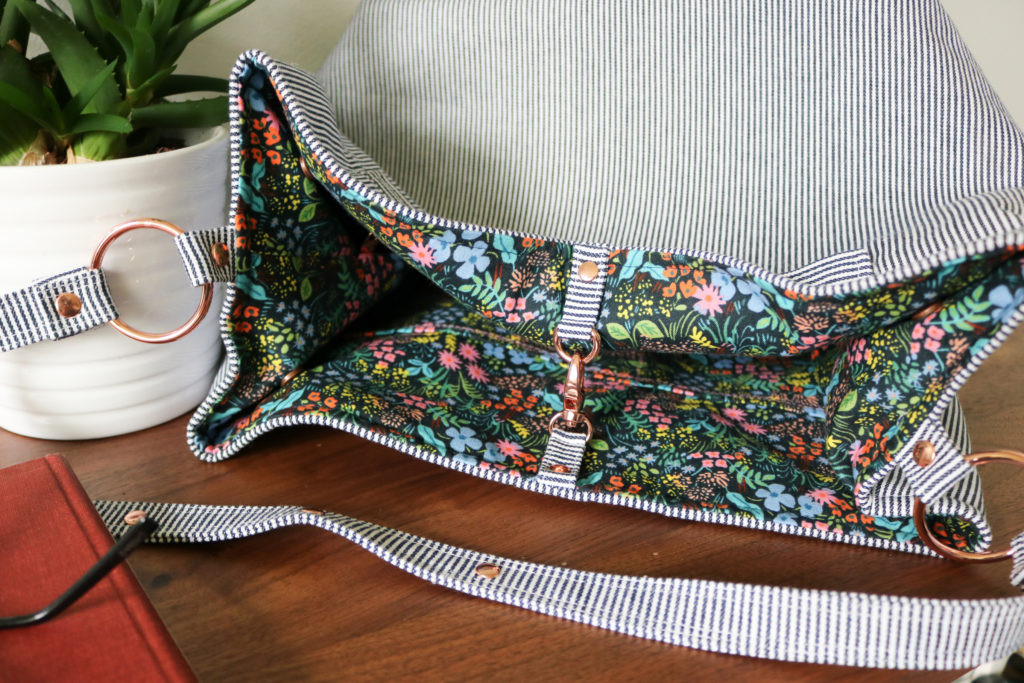 To help hold the shape of the bag and keep contents safe, four sets of snaps are added to the lining. They help keep the cube shape of the Megan while still staying slouchy like a good bucket bag does. The purse can then be easily expanded by just releasing the snaps.
To help hold the shape of the bag and keep contents safe, four sets of snaps are added to the lining. They help keep the cube shape of the Megan while still staying slouchy like a good bucket bag does. The purse can then be easily expanded by just releasing the snaps.
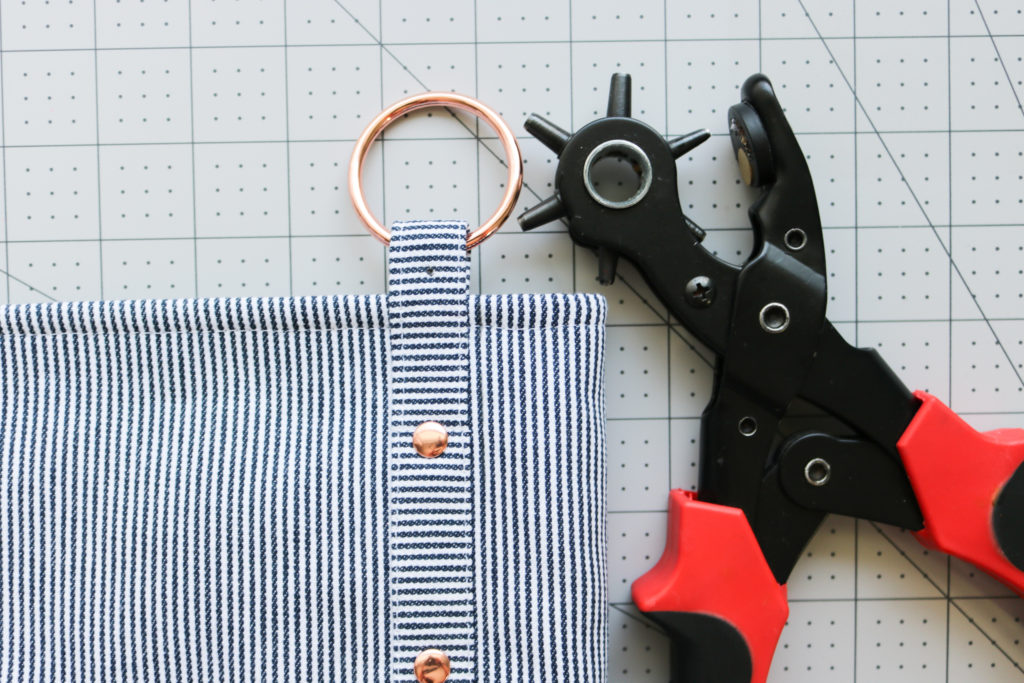 Although the pattern includes the use of rivets and snaps, there are no actual instructions to install them. Since there are SO many different types of hardware out there with multiplied by different tastes of the sewist, there was no way to include instructions for everything. Rivets can be single sided and double-sided. They can be shaped like pyramids, domes, or flat like burrs. Snaps also have a number of different sizes and features as well. I prefer “spring” double cap snaps, but you can use magnetic or even sew-in snaps too! This pattern allows you to use YOUR preference of material. But just like with interfacing, you must remember to follow manufacturer’s instructions. I’ll be showing my preferred methods of rivet and snap installations all next week, so keep an eye out!!!
Although the pattern includes the use of rivets and snaps, there are no actual instructions to install them. Since there are SO many different types of hardware out there with multiplied by different tastes of the sewist, there was no way to include instructions for everything. Rivets can be single sided and double-sided. They can be shaped like pyramids, domes, or flat like burrs. Snaps also have a number of different sizes and features as well. I prefer “spring” double cap snaps, but you can use magnetic or even sew-in snaps too! This pattern allows you to use YOUR preference of material. But just like with interfacing, you must remember to follow manufacturer’s instructions. I’ll be showing my preferred methods of rivet and snap installations all next week, so keep an eye out!!!
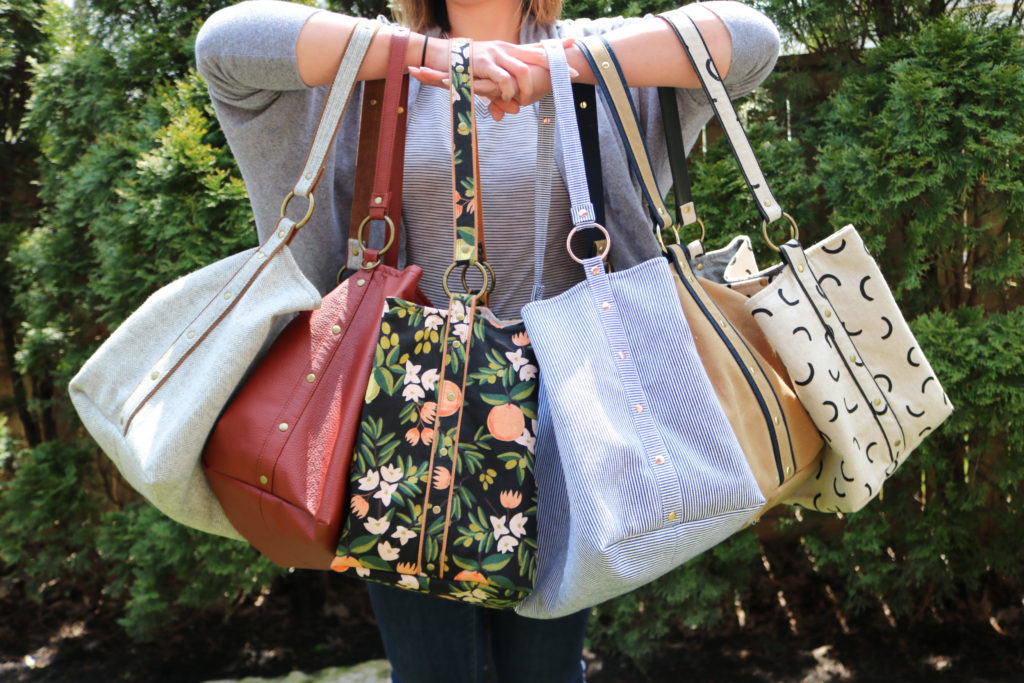 There are truly SO many different ways to make the Megan Bucket Bag. If you are ready to make your own, click below for the pattern AND the hardware kits….it doesn’t get any easier, right?
There are truly SO many different ways to make the Megan Bucket Bag. If you are ready to make your own, click below for the pattern AND the hardware kits….it doesn’t get any easier, right?
